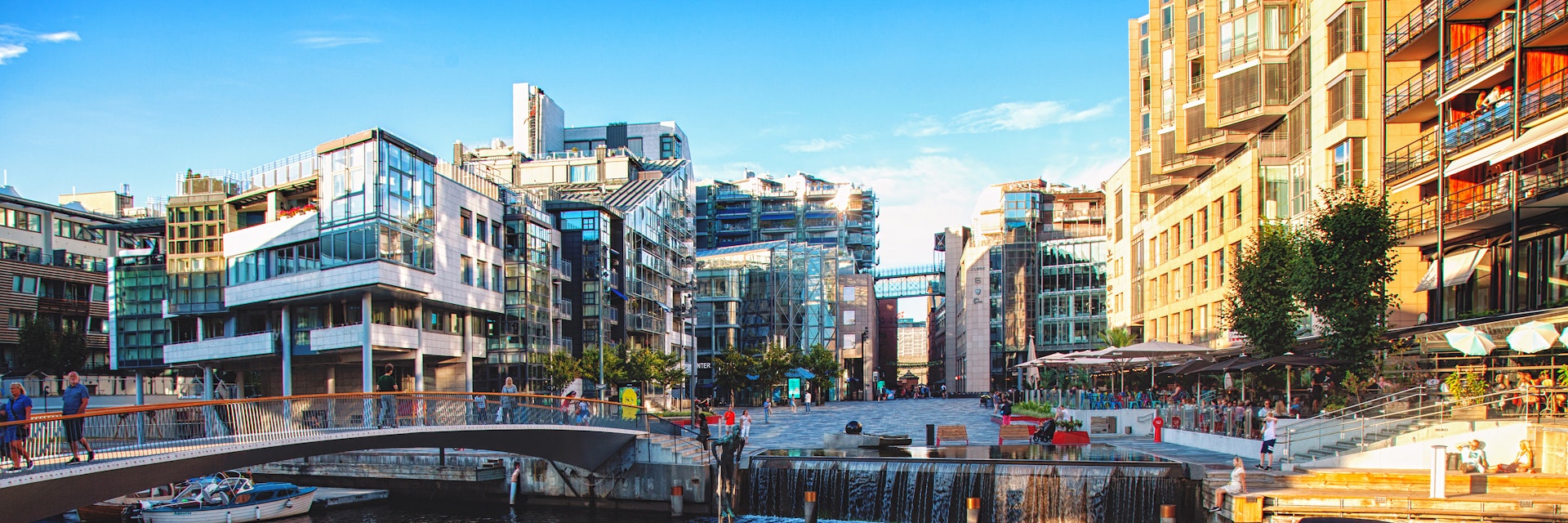
©Volkova Olena-358/Shutterstock
Surrounded by mountains and sea, this compact, cultured and fun city has a palpable sense of reinvention.

Best Things to Do
Spending diaries, attractions, must-see attractions.
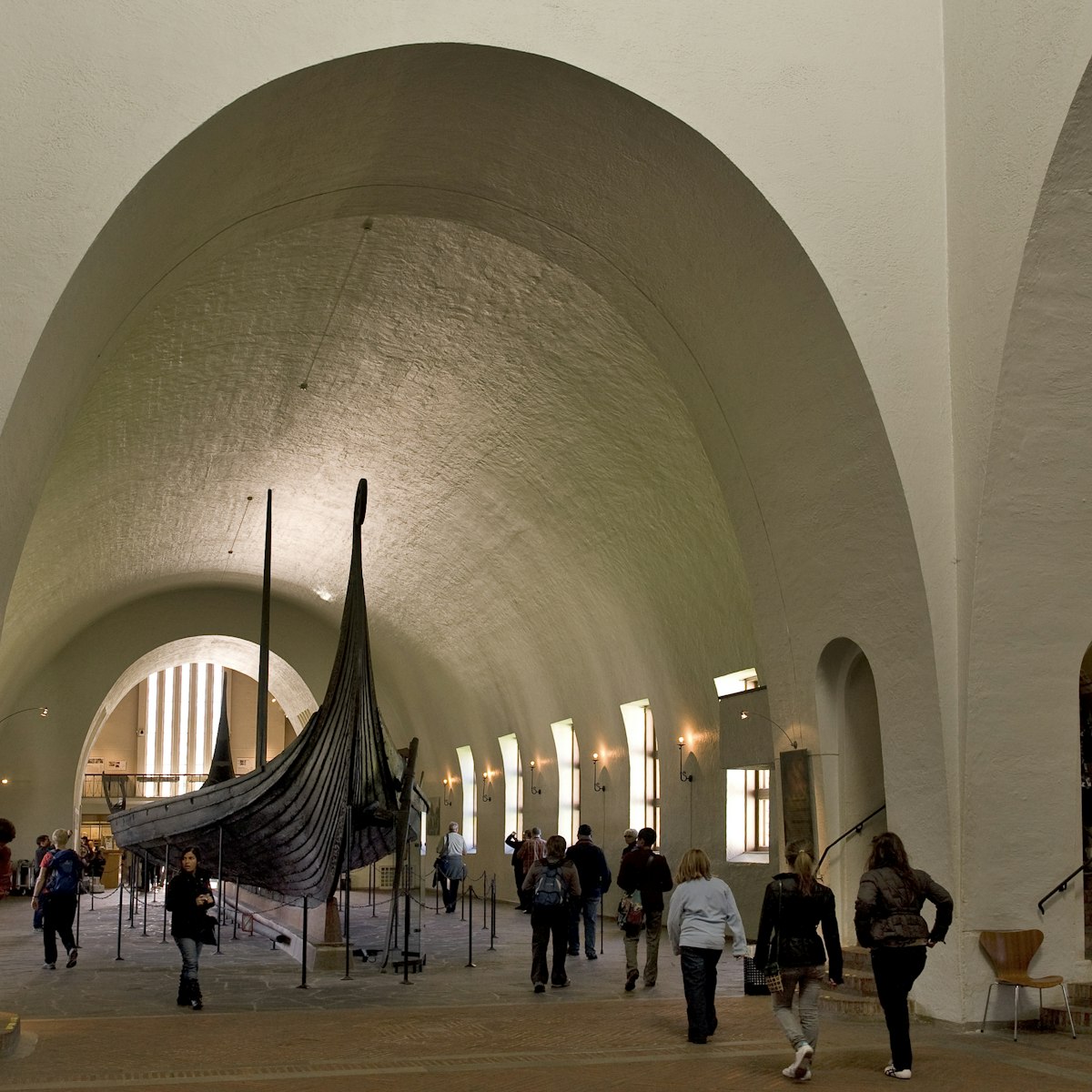
Vikingskipshuset
Aker Brygge & Bygdøy
Around 1100 years ago, Vikings dragged up two longships from the shoreline and used them as the centrepiece for grand ceremonial burials, most likely for…
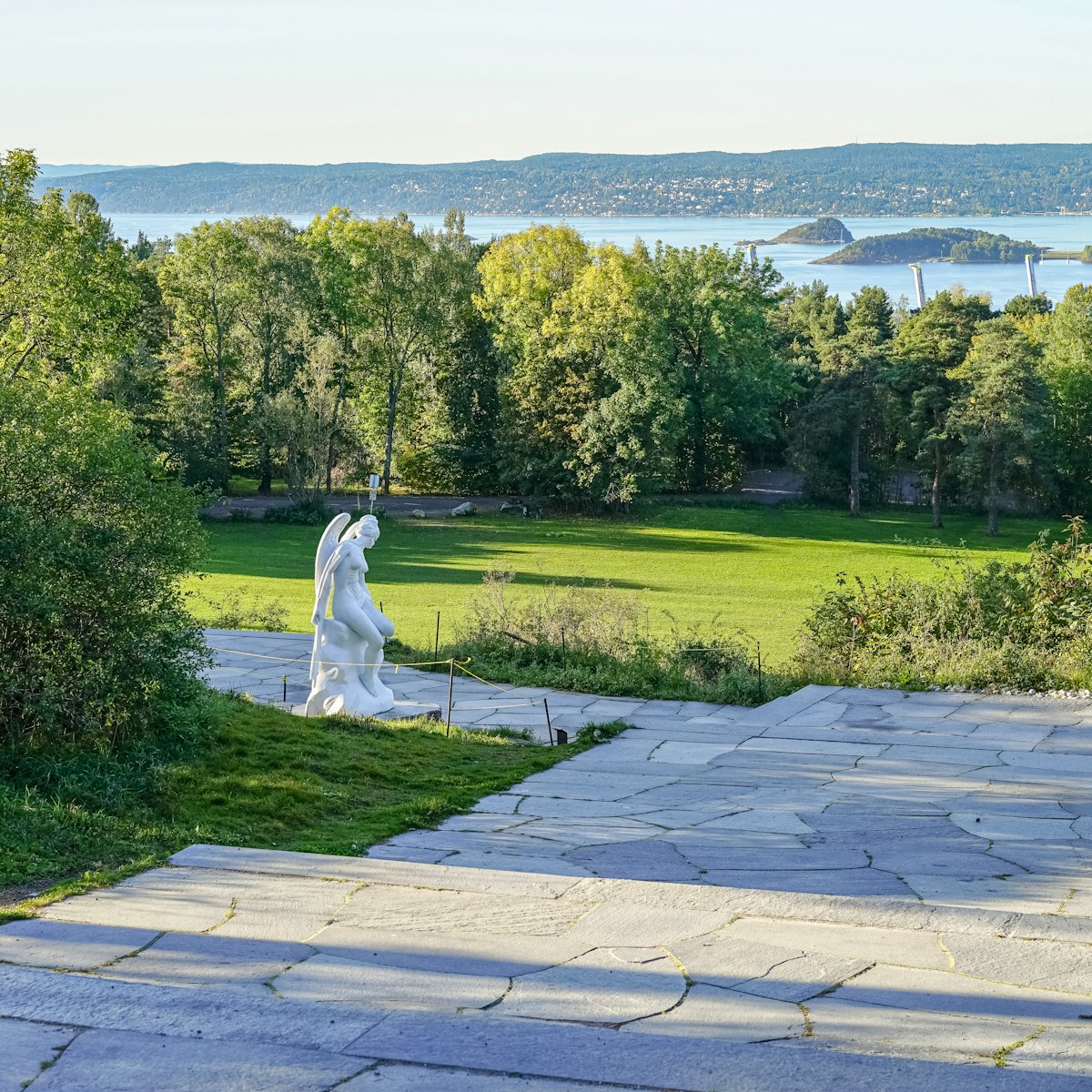
Ekebergparken
Sofienberg, Grønland & Tøyen
Opened to much controversy in 2013, Ekebergparken cemented Oslo's reputation as a contemporary-art capital and, in particular, one devoted to sculpture. A…
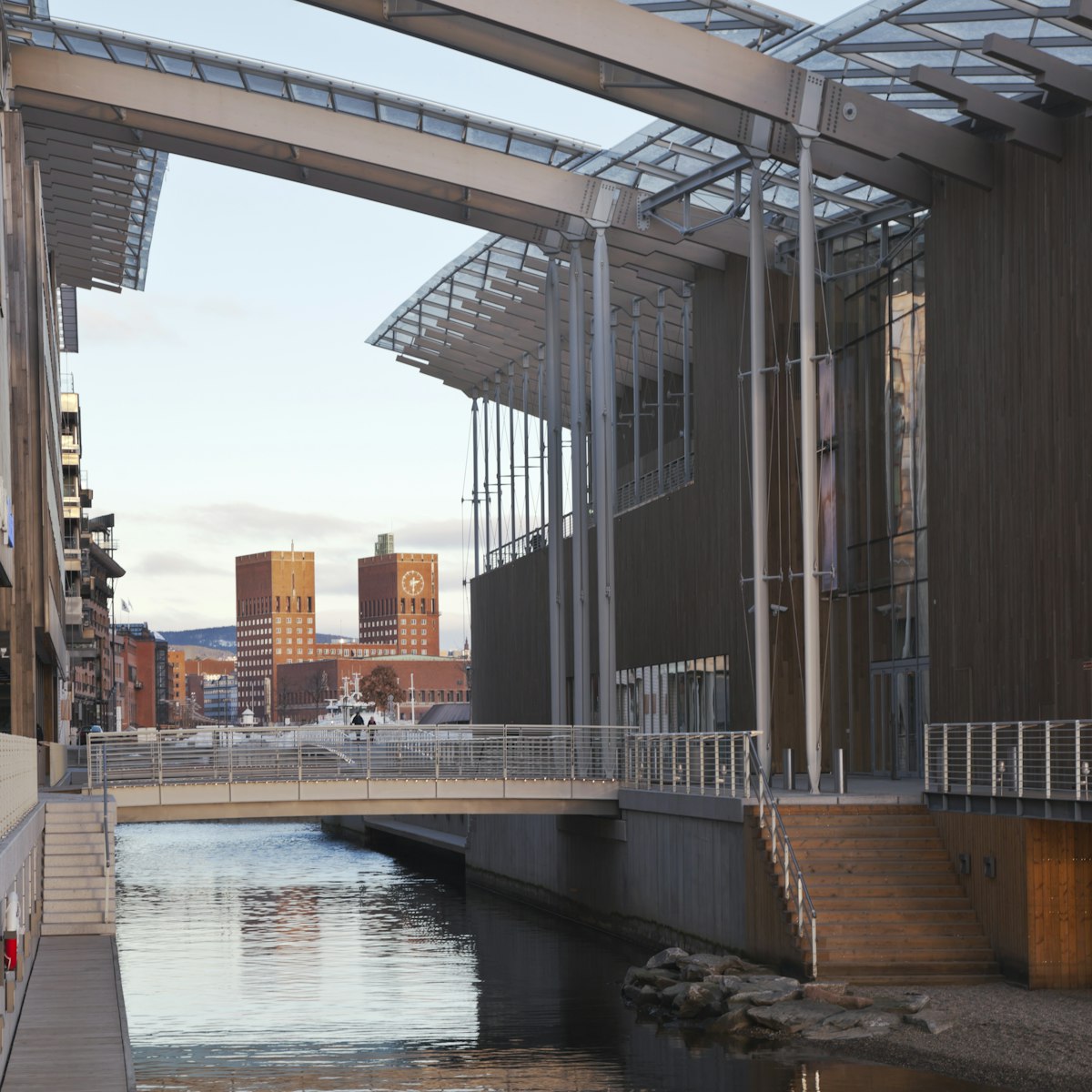
Astrup Fearnley Museet
This private contemporary-art museum resides in an arresting, silvered-wood building designed by Renzo Piano, with a sail-like glass roof that feels both…
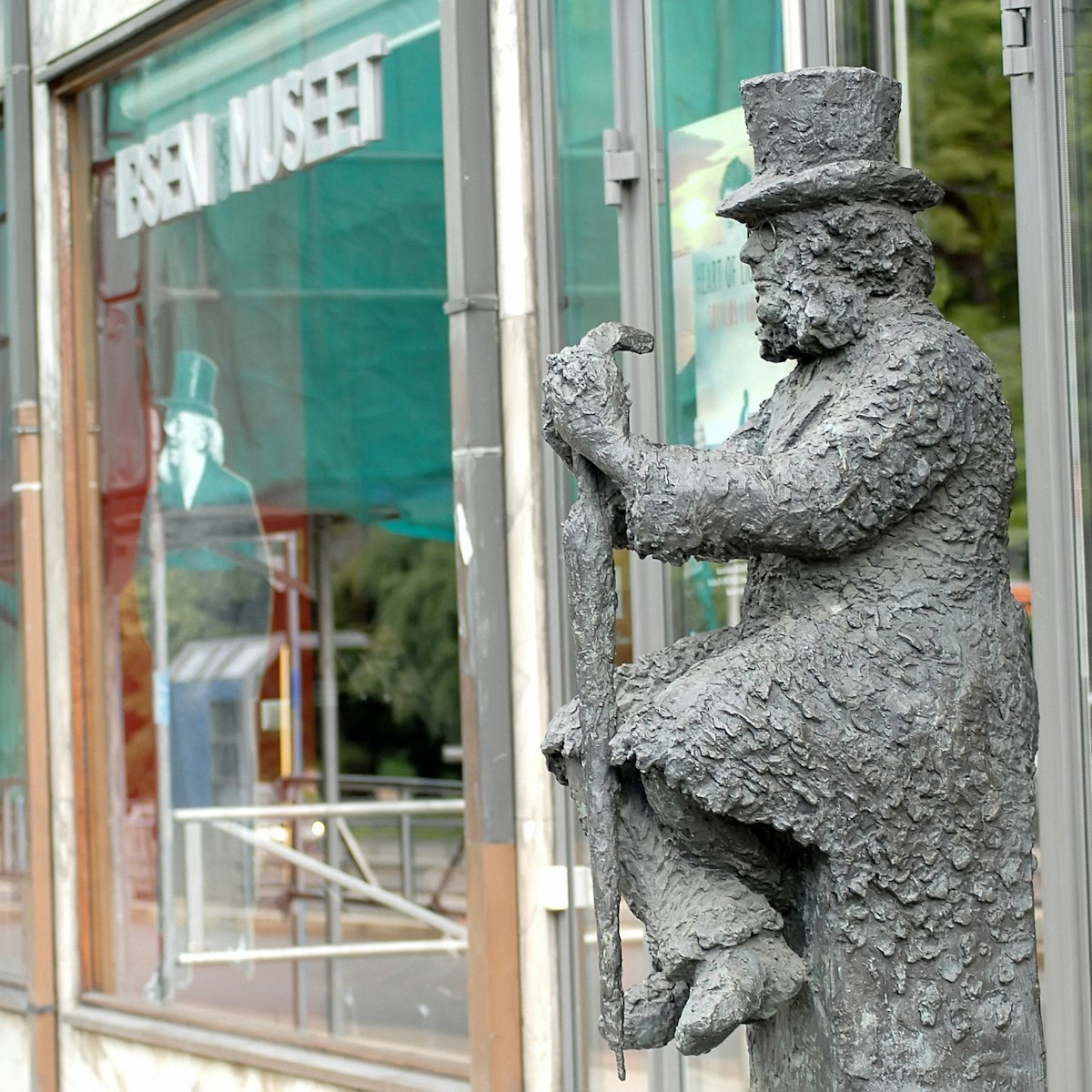
Ibsen Museet
While downstairs houses a small and rather idiosyncratic museum, it's Ibsen's former apartment, which you'll need to join a tour to see, that is…
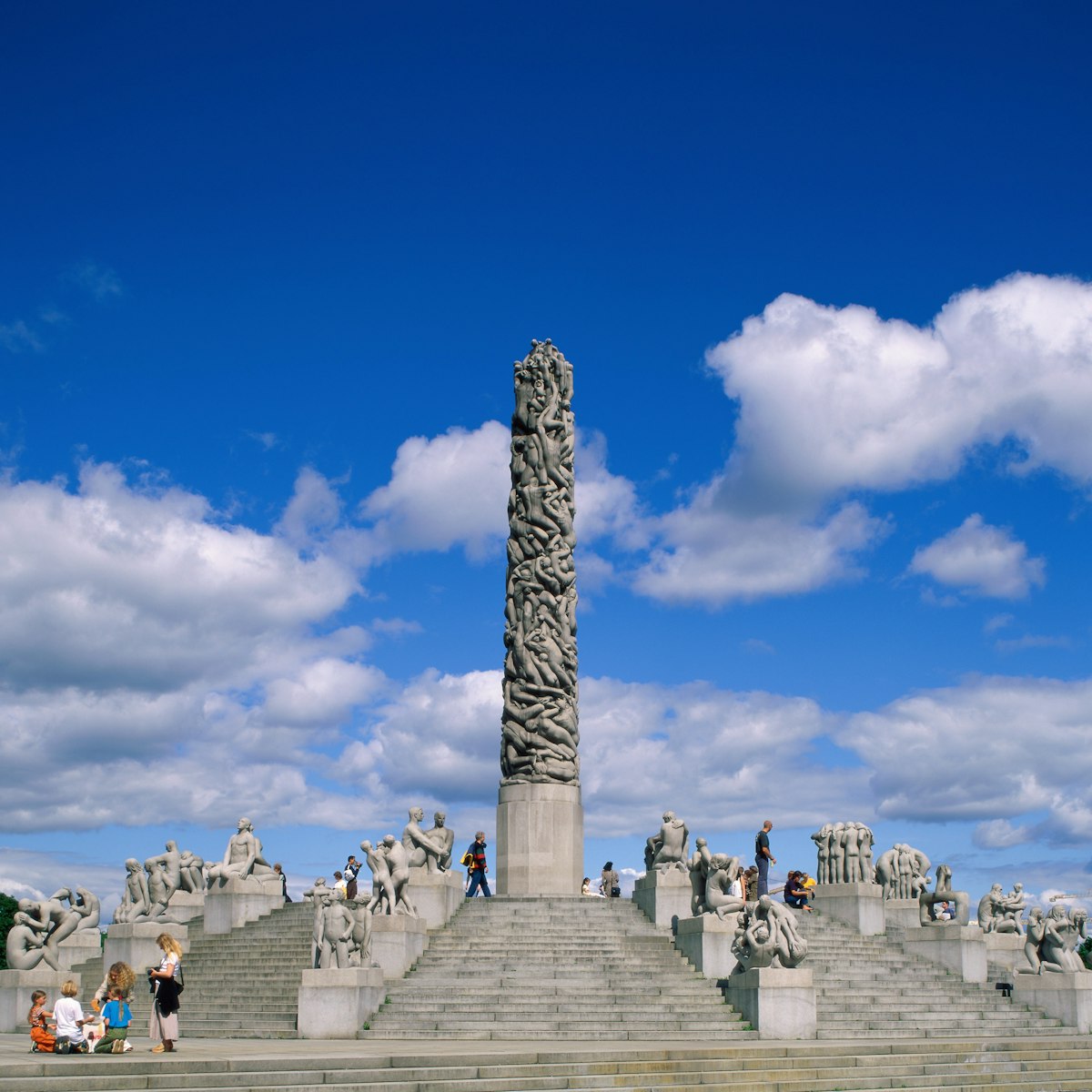
Vigelandsparken
The centrepiece of Frognerparken is an extraordinary open-air showcase of work by Norway's best-loved sculptor, Gustav Vigeland, and is home to 212…
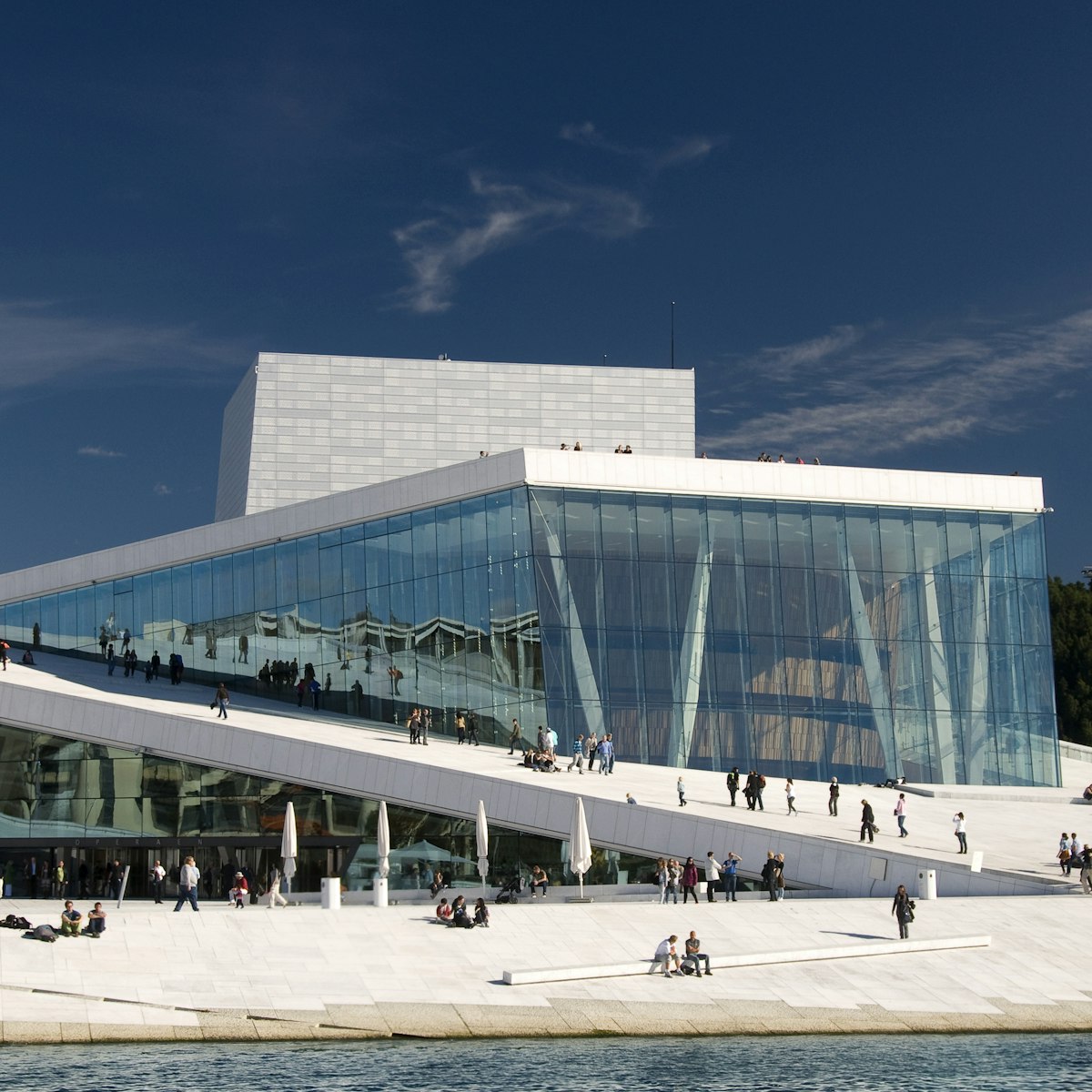
Oslo Opera House
Opera House & Bjørvika
Centrepiece of Oslo's rapidly developing waterfront, the magnificent Opera House (2008), reminiscent of a glacier floating in the waters of the Oslofjord,…
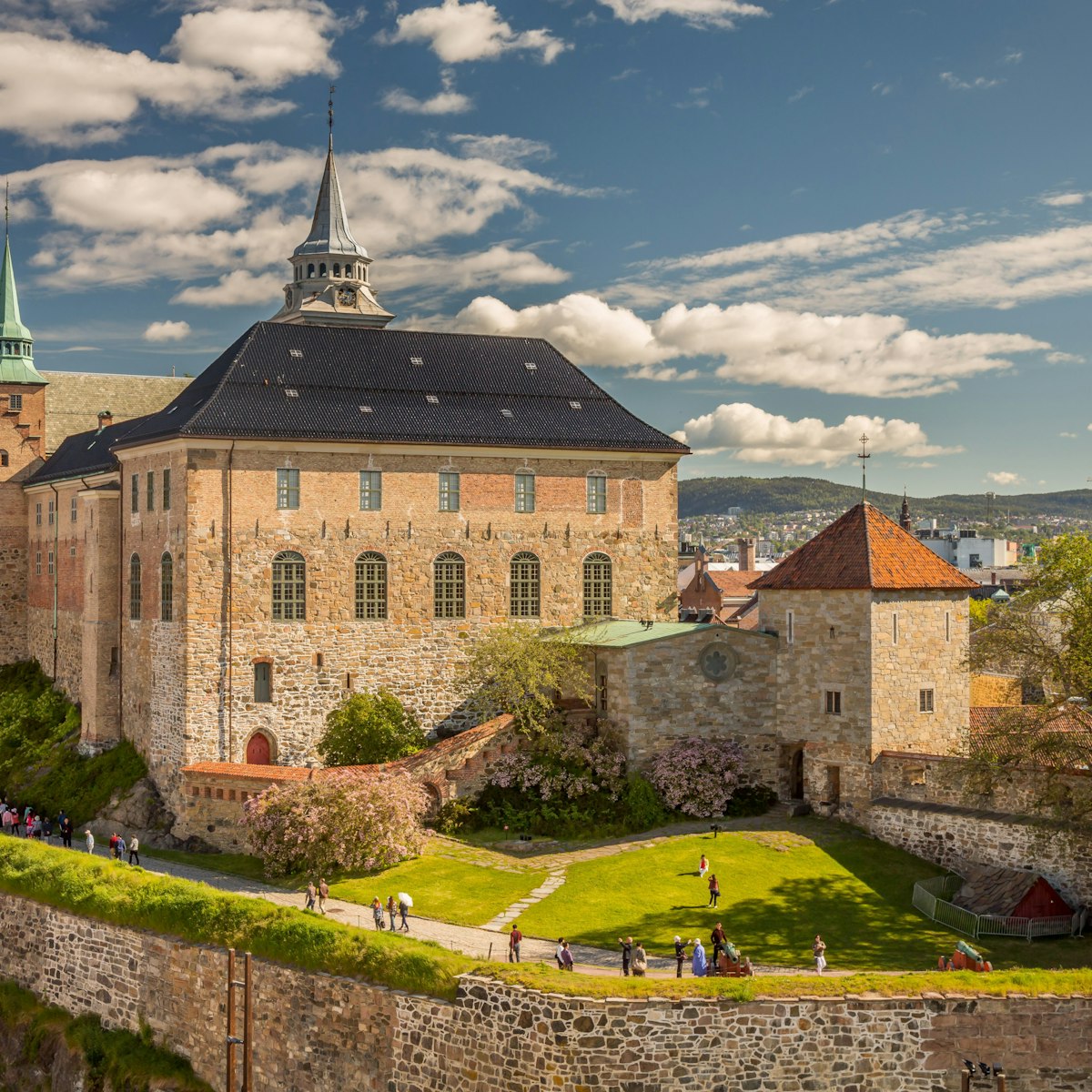
Akershus Festning
When Oslo was named capital of Norway in 1299, King Håkon V ordered the construction of Akershus, strategically located on the eastern side of the harbour…
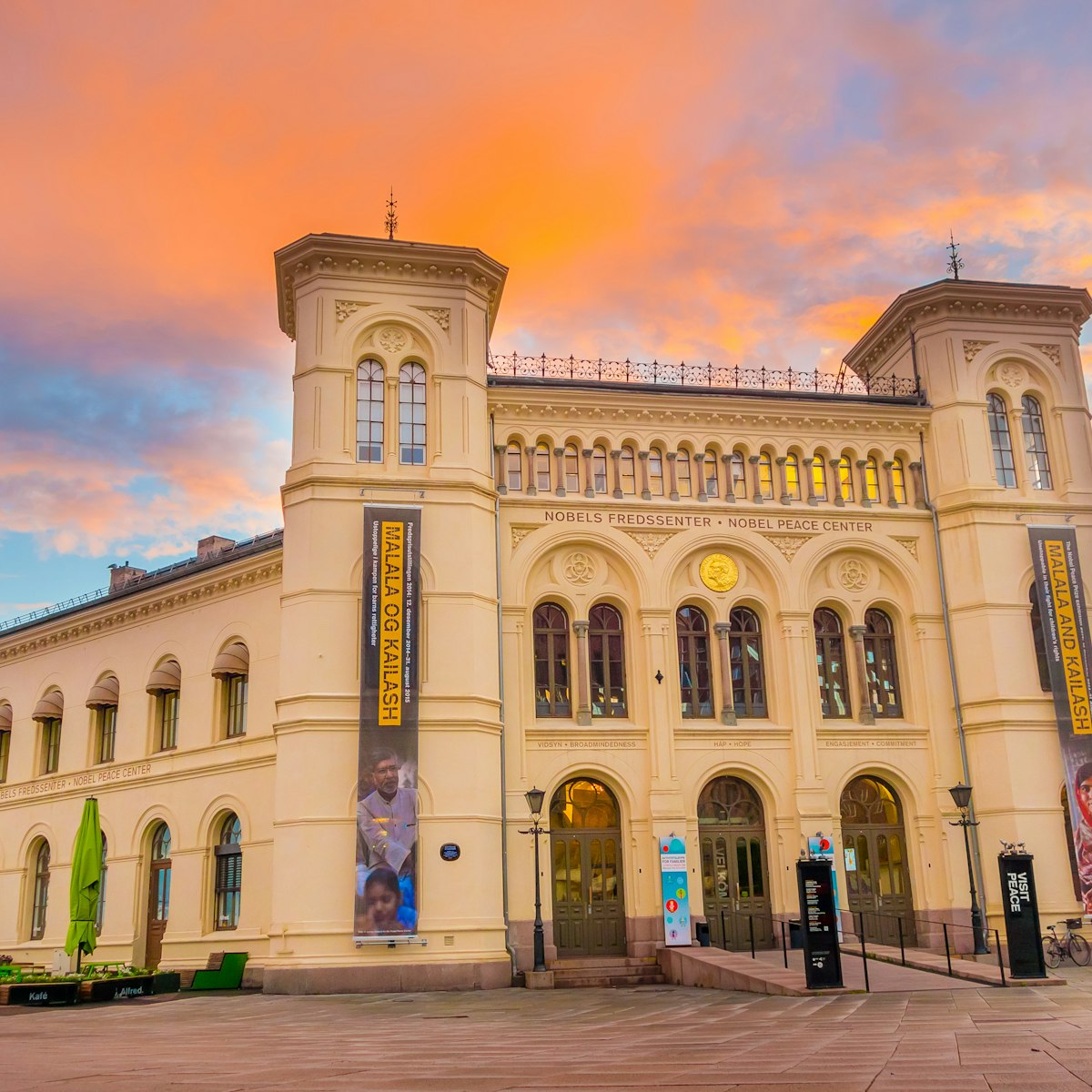
Nobels Fredssenter
Norwegians take pride in their role as international peacemakers, and the Nobel Peace Prize is their gift to the men and women judged to have done the…
Top picks from our travel experts
The 8 best things to do in oslo: art, culture and outrageously beautiful fjords.
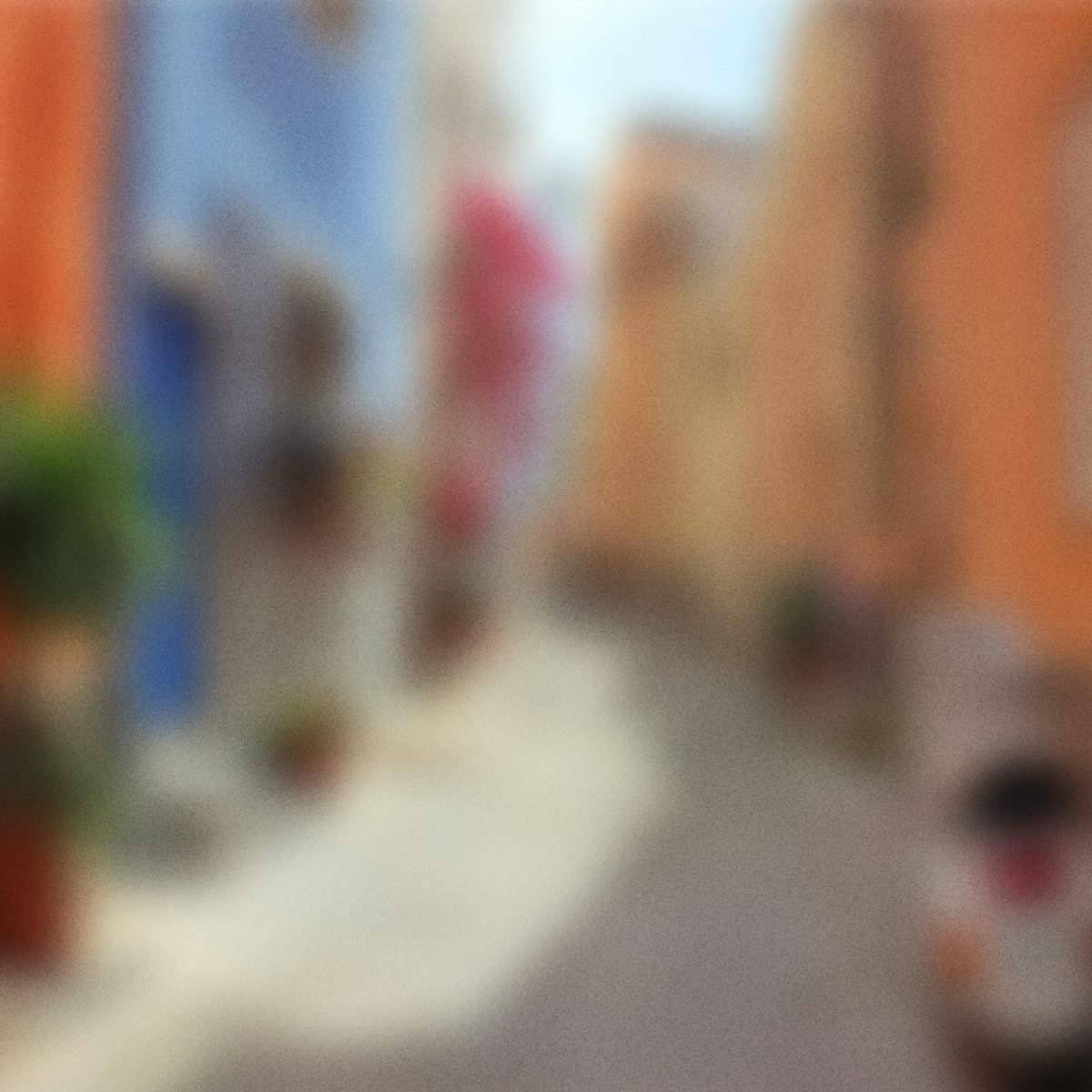
Oslo Opera House Guided Tours
In Norwegian, English or German, these tours take you into some of the building's 1100 rooms. The guide will explain the symbolism of the building, and…

Vigeland Museum
For a more in-depth look at Gustav Vigeland's work, this museum is just opposite the southern entrance to Frognerparken. It was built by the city in the…
Latest stories from Oslo

Destination Practicalities
Jun 12, 2024 • 10 min read
Norway’s capital has grand architecture, an artsy undercurrent and easy access to pristine nature. Here's all you need to know for your first visit.
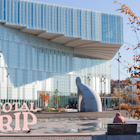
Oct 24, 2023 • 9 min read

Jul 27, 2022 • 7 min read
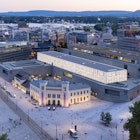
Apr 5, 2022 • 3 min read
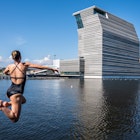
Oct 28, 2021 • 3 min read
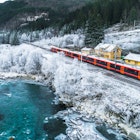
Jan 25, 2021 • 6 min read
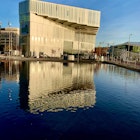
Jun 27, 2020 • 2 min read
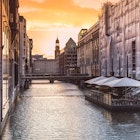
Aug 22, 2019 • 5 min read
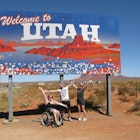
Jul 27, 2019 • 7 min read
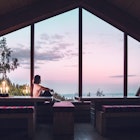
Jun 28, 2019 • 1 min read
in partnership with getyourguide
Book popular activities in Oslo
Oslo and beyond.

Awesome, you're subscribed!
Thanks for subscribing! Look out for your first newsletter in your inbox soon!
The best things in life are free.
Sign up for our email to enjoy your city without spending a thing (as well as some options when you’re feeling flush).
Déjà vu! We already have this email. Try another?
By entering your email address you agree to our Terms of Use and Privacy Policy and consent to receive emails from Time Out about news, events, offers and partner promotions.
Love the mag?
Our newsletter hand-delivers the best bits to your inbox. Sign up to unlock our digital magazines and also receive the latest news, events, offers and partner promotions.
- Los Angeles
Get us in your inbox
🙌 Awesome, you're subscribed!

The 12 best things to do in Oslo
The home of Scandi cool? The best things to do in Oslo cover everything from food courts to the hip Grünerløkka district
Ready for some Scandi cool? Oslo might not be cheap (okay, it's really not cheap), but the Norwegian capital is worth every single øre. Found between the mountains and the sea, Oslo has a little bit of everything you need for a weekend away.
It's a vibrant, bustling city, with world-class museums, innovative restaurants and a seriously friendly vibe (it frequently gets voted the most liveable city for a reason, you know). If you're ready to do things the Norweigan way, read on for the best things to do in Oslo right now.
RECOMMENDED: 🏨 The best Oslo hotels 🧳 The best city breaks in Europe ✈️ Europe's most underrated travel destinations
This guide was written by travel expert Ellie Ross . At Time Out, all of our travel guides are written by local writers who know their cities inside out. For more about how we curate, see our editorial guidelines .
An email you’ll actually love
Best things to do in Oslo

1. Oslo Fjord
What is it? In summer, the water bustles with sailboats and the islands that dot the inner Oslo Fjord – including Hovedøya and Gressholmen – are ideal for swimming, beach picnics and hiking.
Why go? It only takes five minutes by ferry to reach the main island, Hovedøya, with its lush forests, beaches and monastery ruins – and it costs just 38 NOK (the same as a bus). Buy a day pass, and jump from island to island, or book a guided tour.

2. Nobel Peace Centre
What is it? This interactive exhibition is dedicated to the acclaimed Peace Prize and its previous winners. While the permanent exhibition is about the winners, its ever-changing exhibits range from photos capturing extreme wealth to those examining anorexia.
Why go? The Nobel Peace Centre offers a fascinating insight into the significance of the Peace Prize, as well as issues relating to war, peace and conflict resolution. It’s also super family-friendly, and children under 16 get in free.

3. Oslo Opera House
What is it? One of Scandinavia’s most iconic modern buildings, the Opera House is a 21st-century marvel. Designed to resemble a glacier rising out of the fjord, its prime role is to showcase opera and ballet performances.
Why go? In many ways, this building was the start of a new era for Oslo and the regeneration of its waterfront. Don’t miss a walk on top of its roof for a superb architectural experience, with wonderful city views to boot.

4. Vippa
What is it? The city’s food court, located inside an old industrial building. Vippa 's various stalls serve a mixture of affordable, international cuisine, such as pulled pork tacos and crab sandwiches.
Why go? Its location at the tip of the city makes it slightly off the tourist route. It’s popular with locals who enjoy the eclectic mix of Oslo’s food cultures in a relaxed atmosphere with superb sea views.

5. Urban sauna
What is it? One of the coolest things to do in Oslo is to sizzle in an urban sauna. The harbour has a number of places where you can heat up besides the coals – before a refreshing plunge in the fjord.
Why go? The health benefits of saunas are well-documented and this is a great way of embracing local life. SALT is a nomadic art project where you can relax in water-filled barrels, while KOK is a floating sauna with epic fjord views.

6. Ekeburg Sculpture Park
What is it? Around a 30-minute walk from central Oslo, this wooded park featuring 31 sculptures beautifully overlooks the city and is where Munch found his inspiration for The Scream.
Why go? Always open and free to visit, Ekeburg Sculpture Park is home to works by artists including Salvador Dali and Damien Hirst and has a top-notch restaurant, Ekebergrestauranten (we recommend the mussels).

7. Tim Wendelboe
What is it? Oslo is having a coffee moment, with world champion baristas such as Tim Wendelboe importing, roasting and grinding coffee beans with pizazz. There are dozens of independent coffee shops popping up all over town, serving everything from black, filtered brews to espressos.
Why go? Norwegians are the world’s second-biggest coffee drinkers, so to skip sampling their ‘lightly roast’ drink is to miss a key part of local cuisine. Try it at Tim Wendelboe.

8. Bon Lío
What is it? A cute little local gem serving delicious and authentic Spanish tapas, wine and cocktails in a relaxed and friendly atmosphere. Head chef and owner Cato Wara was born in Norway but grew up in Mallorca, so his cooking is Nordic-Spanish.
Why go? Bon Lío is an intimate space – seating only around 35 diners – and is often packed, so book ahead. It’s not cheap, but for that, you get ten scrumptious courses made with the finest Spanish and Norwegian ingredients.

9. Holmenkollen
What is it? A huge Olympic ski jump, located within easy reach of the city by Metro, with a viewing platform and a museum that delves into skiing history and polar exploration, plus snowboarding and modern skiing.
Why go? No trip to Oslo is complete without taking in the panoramic vistas from the top of this impressive tower – the best views in the city. Book a whole day tour, including the ski jump.

10. Vaaghals
What is it? Located in the Barcode area, a short walk from Oslo’s central station, Vaaghals is a great place to come and sample traditional Norwegian dishes and share platters with friends in a laid-back atmosphere.
Why go? If you want to experience a uniquely Norwegian way of communal dining, this is it. The restaurant celebrates ‘skifte’, an old tradition where food is passed around the table, with sharing plates made using fresh, locally-sourced seasonal ingredients.

11. Akerselva River
What is it? The 5.1 mile-long Akerselva river starts at Lake Maridalsvannet and flows right through to downtown Oslo, dividing the east and west sides of the city. The trails along the river are perfect for hiking and cycling.
Why go? Strolling along the river is a great way to explore different neighbourhoods, including Grünerløkka, the hipster area, where you’ll find vintage boutiques, quirky cafes and pubs stretching along the riverbanks. Try Nedre Foss Gard for al-fresco dining and Ingensteds night club.

12. Himkok
What is it? Housed inside one of the oldest brick buildings in downtown Oslo, this ‘hidden’ speakeasy bar serves avant-garde cocktails made with spirits distilled on-site and featuring quirky ingredients, such as Norwegian brown cheese, ginseng and horseradish.
Why go? Himkok has frequently been named as one of the best bars in the globe. It also has a cider bar, outdoor kitchen and greenhouse growing plants and herbs used in drinks and food.
More great things to do in Oslo
[image] [title]
Discover Time Out original video
- Press office
- Investor relations
- Work for Time Out
- Editorial guidelines
- Privacy notice
- Do not sell my information
- Cookie policy
- Accessibility statement
- Terms of use
- Modern slavery statement
- Manage cookies
- Advertising
- Time Out Market
36 Hours in Oslo
By Lisa Abend Updated Jan. 26, 2023
- Share full article

Has a city ever remade itself so quickly, or so thoroughly? The Norwegian capital had embarked on a plan to refashion itself as a major cultural destination well before the pandemic struck, but it is only now that the full impact of the initiative is being felt. In the last few years, Oslo has opened two major museums and a stunning public library. Striking neighborhoods have sprung up along the city’s iconic fjord, united by a harborside promenade and dotted with new restaurants and bars. Yet for all the transformation, Oslo retains its most distinguishing feature: its celebration of the outdoors. This is a city that, even in frigid winter, incorporates the natural world into urban life.
Recommendations
- National Museum , the city’s newest major museum, has some 6,500 objects, from ancient Greek sculptures to works by Edvard Munch and the Sami artist Máret Ánne Sara.
- Savage , one of Oslo’s newest upscale restaurants, keeps the focus on the food, which includes Nordic ingredients like lumpfish roe and scallops with global flourishes.
- Nordmarka forest , just outside the city, is where to go for a taste of the snowy outdoors.
- SALT is a combination public sauna and entertainment center, where you can sweat it out, then listen to music or relax at the outdoor bar.
- Sukkerbiten offers saunas alongside the freezing waters of Oslofjord, where you can take a dip before warming up.
- Holzweiler sells sleek clothing, while Norwegian Rain specializes in lightweight rain gear, Devold in woolen garments and Dapper in Scandinavian men’s wear brands.
- Annis Oslobukta is an upscale butcher in Oslobukta that sells local cheeses, preserved fruits and other delicious items.
- Spikersuppa is an outdoor skating rink in the middle of the city, where people of all ages take to the ice.
- Korketrekkeren is a free, more-than-mile-long tobogganing track in the Nordmarka forest.
- The Munch Museum is where to get your Edvard Munch fix.
- Deichman Bjørvika is Oslo’s new main library, with plenty of work spaces, a children’s section and an installation called “Future Library.”
- Holzweiler Platz offers sandwiches and salads and dips, but go there for the sleek space by the Norwegian starchitect firm Snøhetta.
- Åpent , a well-regarded bakery, has a branch in the Oslobukta neighborhood, where sandwiches and cakes are a budget lunch option.
- Bar Amour turns out stellar dishes with minimal ado in an atmospheric bar setting.
- Becco draws a relaxed crowd who sip natural wine and listen to D.J.s and the occasional band.
- The Vandelay is a perfect weekend brunch spot: Griddled pancakes, and ricotta and lavender honey on toast are among the menu items.
- Frognerseteren , housed in a 19th-century chalet in the Nordmarka recreational area, offers coffee, cocoa and homemade sweets.
- Oslo is well connected by bus and tram. The easiest way to travel on them is to download the Ruter app and buy digital tickets (starting at 39 nok, about $4). The Oslo Pass (also an app) includes all public transport, including ferries, as well as admission to museums for 24 to 72 hours; prices for adults start at 495 nok. There is Uber in Oslo, but both it and taxis are expensive.
- Sommerro , in the elegant Frogner neighborhood, is one of Oslo’s newest hotels, housed in the former Art Deco headquarters of an electrical company. All velvet upholstery and curved polished wood, the hotel has a wonderful pool; doubles star at 3,900 nok, or about $393.
- Amerikalinjen , across from the train station, occupies the former headquarters of the passenger line that once took Norwegian immigrants to New York. Rates cover a terrific breakfast that, in a nod to its New York connections, includes decent bagels. (Doubles from 1,900 nok.)
- K7 , near the water in the old part of town, is both a hotel and hostel, with tasteful private rooms and group accommodations, complete with kitchen, laundry and TV room. A bed in a 12-bed dorm room starts at 345 nok; private doubles start at around 900 nok.
- With its street art, cafes and vintage clothing shops, Grünerløkka is a good choice for finding a short-term rental. Efficient public transportation means it's only a 25-minute tram ride to the new developments along the fjord.

Have a weekend to explore a destination? We’ve got the perfect travel itinerary.
Colorado Springs: Colorado’s second-largest city, which brims with outdoor activities , is enticing visitors with a new museum and revamped hotels.
Minneapolis: Springtime is best for exploring this Midwestern city’s lakeside trails, robust arts scene and top-notch restaurants .
Maui: The beauty and hospitality of this Hawaiian island, still recovering from last year’s wildfires, remain as vibrant as ever .
Toronto: Savor the diversity of this lakefront city through its hidden bars, small-but-fascinating museums and vibrant restaurants .
Cape Town: Take a food and storytelling tour, cruise one of the world’s most beautiful coastal drives and see contemporary African art in this city with stunning views in every direction .
Advertisement
Oslo Travel Guide
Courtesy of william87 | iStock

18 Best Things To Do in Oslo
Updated Jun. 8, 2023
Oslo attractions are refined and laid-back. Enjoy a coffee and snack at one of the many cafes (travelers recommend Tim Wendelboe), take a stroll through the city center on a warm summer's evening, head north to go skiing in the winter or gaze at
- All Things To Do

Oslo Fjord Oslo Fjord free
Occupying 766 square miles, Oslo Fjord attracts Oslo residents and tourists in droves, especially during the warmer months. Water vistas are available from many parts of the city, including popular attractions like the Oslo Opera House and Akershus Fortress . You can also opt to hit the water in a canoe or kayak, but to get the full experience, consider signing up for an Oslo Fjord cruise. Sightseeing and fishing excursions are available on everything from inflatable boats (known as RIBs) to sailboats and yachts to ferries throughout the year.
Traveler-approved cruise operators include RIB Oslo and Norway Yacht Charter , but the cheapest and most popular way to explore the fjord is via a tour with Båtservice Sightseeing . Affiliated with Norway Yacht Charter, this ferry company offers several fjord tour options, such as a two-hour daytime sightseeing excursion and three-hour crab-, jazz- and blues-themed cruises. Previous visitors suggest booking the evening boat tour, which includes three hours of sailing and a highly regarded all-you-can-eat shrimp buffet. But remember to bring extra money for drinks and a jacket if you plan on sitting outside.

Vigeland Park (Vigelandsparken) Vigeland Park (Vigelandsparken) free
Vigeland Park, which resides in Ullern and Majorstuen's Frogner Park, is the world's largest sculpture park featuring works by a single artist. The park is composed of five main areas: the Main Gate, the Wheel of Life, the Fountain, the Monolith Plateau and the Bridge. Its highlight is its 200-plus bronze, granite and wrought-iron sculptures created by the park's namesake, Gustav Vigeland. People come here to sunbathe, picnic and wander the beautiful grounds.
Travelers love this park's well-maintained grounds and, of course, its world-renowned sculptures. But remember, Vigeland Park is one of Norway's most popular attractions, so it can get crowded at times. To avoid hordes of tourists, consider arriving early in the morning or late at night. Some reviewers suggest timing your visit during summer's midnight sun.

Karl Johans gate Karl Johans gate free
U.S. News Insider Tip: Grab a gelato cone (popular flavors include mango and chocolate) at Paradis Gelateria Karl Johan – it's the perfect treat for walking through the city. – Leilani Osmundson
Karl Johans gate stretches between Oslo's downtown train station and Palace Park, an expansive park that surrounds the Royal Palace . Boutiques, cafes, bars, nightclubs and hotels are just some of the amenities you'll find lining this central thoroughfare. Inside the smaller Studenterlunden Park, which borders the street's western end, you can catch a performance at the late 19th-century National Theatre, go ice skating at the outdoor rink or simply enjoy a leisurely stroll. This section of the boulevard is also a block away from the National Gallery, one of four buildings that comprise the National Museum of Art, Architecture and Design .

Popular Tours

Guided Oslo Fjord Cruise by Silent Electric Catamaran
(283 reviews)
from $ 56.61

Oslo Combo Tour: Grand City Tour and Oslo Fjord Cruise
(349 reviews)
from $ 134.33

Oslo Highlights Bike Tour
(563 reviews)
from $ 45.97

Bygdøy Bygdøy free
U.S. News Insider Tip: Enjoy a delicious meal at Lille Herbern, a waterfront restaurant on an island at the southeastern end of the peninsula. You have to take a short ferry to reach the island and the restaurant is only open in the summer, but it's well worth a visit for tasty food and beautiful views. – Leilani Osmundson
Outdoorsy types and museum buffs should plan on spending at least one day on the Bygdøy peninsula. This region 3 miles west of central Oslo is home to some of the city's best museums, including the Fram Museum , the Viking Ship Museum and the Norwegian Museum of Cultural History . The peninsula's southern tip is especially popular in the summer when locals and tourists alike flock to the area's beaches and take advantage of its walking, jogging and bike trails. Huk beach also features a sand volleyball court available for free on a first-come, first-served basis.

Norwegian Museum of Cultural History (Norsk Folkemuseum) Norwegian Museum of Cultural History (Norsk Folkemuseum)
U.S. News Insider Tip: Allow plenty of time – at least two hours – to explore the large range of exhibits here, including "TIMESCAPE 1600-1914," which features gorgeous displays with digital explanations of unique items (such as a tiny sewing kit within a velvet-lined walnut). – Leilani Osmundson
At the Norwegian Museum of Cultural History, visitors can learn about traditional Norwegian architecture, early farm life and more. Several buildings are worth checking out at this open-air museum, including the 13th-century Stave Church from Gol and the medieval-style Setesdal Farmstead. Travelers will also spot reenactors in period attire participating in traditional dances, crafts and other activities every summer.

Royal Palace (Det kongelige slott) Royal Palace (Det kongelige slott)
Nestled within Palace Park at the western end of Karl Johans gate , the Royal Palace draws history buffs, architecture enthusiasts, political junkies and those who enjoy learning about European royals. This grandiose structure, which was first used by King Oscar I in 1849, continues to serve as the home and office of Norway's monarchs. Most members of the royal court also work here, and foreign heads of state regularly stay on-site during official visits.
Several previous visitors praised this expansive property, citing its beautiful gardens and exquisite exterior as highlights. Those who arrived in the summer and toured the palace also raved about the lovely rooms and informative guides. But remember, no photography is permitted inside and tours – which are only offered from late June to mid-August – fill up fast. To ensure availability, past travelers suggest buying tickets in advance on Ticketmaster's website . Tour passes are sold starting on March 1. If you're unable to snag a spot on a tour, consider visiting at 1:30 p.m. when the changing of the guard ceremony takes places.

Oslo Opera House (Operahuset) Oslo Opera House (Operahuset) free
U.S. News Insider Tip: You don't have to watch an opera to enjoy the opera house. Make sure to climb the building up to the roof for incredible views of the city and harbor. – Leilani Osmundson
Music lovers and architecture enthusiasts alike won't want to miss a visit to this modern opera house. Located in the western part of Gamle Oslo, the Oslo Opera House features a contemporary design inspired by glaciers floating in the adjacent Oslo Fjord . Noteworthy details include floor-to-ceiling windows, wooden interior accents and an asymmetrical roof that visitors can walk on. The venue hosts performances by The Norwegian National Opera and Ballet, Norway's largest music and performing arts organization, throughout the year.

National Museum of Art, Architecture and Design (Nasjonalmuseet) National Museum of Art, Architecture and Design (Nasjonalmuseet)
Established in 2003, the National Museum of Art, Architecture and Design is actually a merger of four formerly separate museums. Only the National Gallery, Villa Stenersen, Mellomstasjonen (the information center) and The National Museum – Architecture remain open to the public as the property works toward opening a new, larger facility in downtown's Vestbanen train station. In each of these buildings, travelers can admire extensive collections about art and architecture. Noteworthy items include Edvard Munch's "The Scream" and "Madonna" paintings.
All three buildings earn praise for their exhibits, but it's the National Gallery that woos the bulk of the National Museum of Art, Architecture and Design's visitors. Travelers say the museum's iconic Munch pieces can't be missed but also recommend perusing the other paintings, sculptures and drawings displayed inside. Lines to view "The Scream" can get long, especially in the afternoon on summer days, so consider arriving early. To save even more time, purchase your ticket in advance on Ticketmaster's National Gallery page .

Oslo To Sognefjord Private Full Day Roundtrip Including Flam Railway
(18 reviews)
from $ 982.31

Oslo Nature Walks: Island hopping
(140 reviews)
from $ 49.26

Oslo To Bergen Self-Guided Full Day Trip with Flåm Railway And Fjord Cruise
(58 reviews)
from $ 426.88

Fram Museum (Frammuseet) Fram Museum (Frammuseet)
Named after one of Norway's oldest vessels used for North and South Pole expeditions, the Fram Museum offers a glimpse at Norway's polar history. Inside, visitors will find exhibits about various polar explorers (think: Fridtjof Nansen and Roald Amundsen) and the Northwest Passage, but the museum's two polar ships are its highlights. Used in expeditions in the 19th and 20th centuries, the Gjøa and the Fram take up the bulk of the museum's floor space. Travelers are welcome to climb aboard and explore each vessel's decks. The Fram's cabins, lounges, cargo hold and engine room are also open to the public.
Whether you have an interest in polar history or just want to find an air-conditioned activity suitable for kids, reviewers say the Fram Museum is well worth a visit. Many museumgoers rave about the property's ships and accompanying information, describing the exhibits as so interesting that you could easily spend a few hours here. Several visitors also suggest taking the ferry to and from the property during the summer months since it docks across the street.

Holmenkollen Ski Museum (Holmenkollen Skimuseet) Holmenkollen Ski Museum (Holmenkollen Skimuseet)
Whether you love skiing or just want to temporarily escape the hustle and bustle of downtown, odds are you'll enjoy exploring the Holmenkollen Ski Museum. Located in Oslo's Holmenkollen neighborhood roughly 6 miles northwest of the city center, this museum is the world's oldest dedicated to skiing. More than 4,000 years of skiing history are explored in exhibits that display everything from skis used during polar explorations to information about how climate change is expected to impact future skiing conditions. The world's longest skis – which measure 147 inches long – and one of the oldest skis ever found – it's believed to be from around A.D. 600 – are also available for viewing.
Although a few recent visitors found the museum itself to be boring, many felt its displays were informative and thoughtfully laid out. However, the highlight for most former museumgoers was the adjacent Ski Jump. Built in the early 2000s to replace previous iterations of the original jump constructed in 1892, the current structure is made of steel and features a sleek, cantilevered design. Its glass facade protects skiers and spectators from the wind, and a tilted elevator travels up the jump to bring travelers to its public viewing platform. Past visitors highly recommend heading to the top to take in the city views and speed down the zip line – if you're feeling brave.

Oslo City Hall (Oslo radhus) Oslo City Hall (Oslo radhus) free
Across the street from the ferry pier in the heart of Oslo's Sentrum neighborhood lies Oslo City Hall, a government building best known for annually hosting the Nobel Peace Prize ceremony. This 20th-century building, which was designed by Norwegian architects Arnstein Arneberg and Magnus Poulsson, features a brick facade and two towers, including one with a 49-bell carillon that plays hourly. Inside, visitors will find multiple works of Norwegian art that depict scenes of the country's history and culture.
Travelers have mixed feelings about Oslo City Hall. Some were less than impressed with the structure's austere exterior. However, many praised the property's interior, especially its impressive marble walls and thought-provoking murals. In fact, several visitors describe the property as a surprising must-do. For a complete overview of the building, plan a summer visit. Between June and August, free guided tours are available at 10 a.m., noon and 2 p.m. daily.

Akershus Fortress (Akershus festning) Akershus Fortress (Akershus festning) free
Overlooking Oslo Fjord in downtown Oslo, Akershus Fortress – which is composed of a medieval fortress and a Renaissance castle – has been a fixture in the city for more than 700 years. For most of that time, its primary purpose was to defend the city from foreign invaders – something it did well, as no foreign military ever managed to capture it by force. The fortress also served as a prison, a church and a royal residence for a time. Now, it's home to a visitor center, government offices and two museums: the Norwegian Armed Forces Museum and the Norway Resistance Museum.
Previous travelers praised the property's breathtaking water vistas and impressive architecture. Others raved about the castle's interior, which reopened in January 2019 after undergoing renovations. Keep in mind, entry to the castle costs 100 kroner (less than $12) per adult and 40 kroner (about $4.50) for each child between 6 and 18. Visitors with an Oslo Pass and kids 5 and younger get in for free. Ticket prices cover use of an English audio guide.

Vigeland Museum (Vigeland-museet) Vigeland Museum (Vigeland-museet)
Just south of the sprawling Vigeland Park lies the Vigeland Museum, an art museum filled with sculptures, portrait busts, sketches and more. The property is named after local artist Gustav Vigeland, whose former studio and apartment were converted into a museum following his death in 1943. The attraction's collection primarily features works made by Vigeland, including approximately 12,000 drawings, 1,600 sculptures and 420 woodcuts. The museum's standout exhibit is its room of original plaster models Vigeland used to create the 200-plus sculptures in Vigeland Park.
Although a few former visitors were not impressed with Vigeland's sculptures, many suggest checking out the property, especially if you have an Oslo Pass (which covers the museum's entrance fee). One recent traveler noted that additional information (in English) is available on laminated cards inside each exhibit, but for even more background about Vigeland and his pieces, you can sign up for a guided group tour in English. Rates start at 500 to 1,000 kroner per group, depending on the number and age of participants.

Oslo Fjord 3 Course Dinner Sightseeing Cruise
(42 reviews)
from $ 123.77

Self-Guided 22-Hour Round Trip From Oslo To Sognefjord With Flåm Railway
(40 reviews)
from $ 506.79

2-Hour Oslo Fjord Sightseeing Cruise by Sailing Ship
(531 reviews)
from $ 45.19

Nobel Peace Center (Nobels Fredssenter) Nobel Peace Center (Nobels Fredssenter)
For an in-depth look at one of the world's most coveted awards, head to the Nobel Peace Center. This institution pays homage to the iconic Nobel Peace Prize, which is presented every year at Oslo City Hall , through various exhibits. Temporary collections touch on topics like the threat of nuclear weapons and individuals subjected to human rights abuses, while the center's permanent "Nobel Peace Prize and the Laureates" exhibit offers videos, photos, texts and animations about every Nobel Peace Prize winner's life and work. Prior award recipients include Nelson Mandela, Mother Theresa, the Dalai Lama and Martin Luther King Jr.
Reviewers describe their visits to the Nobel Peace Prize as hit or miss. Although some say its touching exhibits make it the best attraction in Oslo, others lament the poorly organized ticket desk and confusing tour guides. Overall, many travelers only suggest visiting if you have an Oslo Pass, since admission is covered in the pass fee.

Aker Brygge Aker Brygge free
Read More »

Astrup Fearnley Museet Astrup Fearnley Museet

Oslo Active Tours Oslo Active Tours

Munch Museum (Munchmuseet) Munch Museum (Munchmuseet)

Oslo Discovery Tour
(169 reviews)
from $ 94.03

Oslofjord Sightseeing
(110 reviews)
from $ 38.19

Taste of Oslo Walking Tour
(172 reviews)
from $ 143.92
Explore More of Oslo

Best Hotels

When To Visit
If you make a purchase from our site, we may earn a commission. This does not affect the quality or independence of our editorial content.
Recommended
The 28 Best Water Parks in the U.S. for 2024
Holly Johnson|Timothy J. Forster May 8, 2024

The 18 Best Napa Valley Wineries to Visit in 2024
Lyn Mettler|Sharael Kolberg April 23, 2024

The 25 Best Beaches on the East Coast for 2024
Timothy J. Forster|Sharael Kolberg April 19, 2024

The 50 Best Hotels in the USA 2024
Christina Maggitas February 6, 2024

The 32 Most Famous Landmarks in the World
Gwen Pratesi|Timothy J. Forster February 1, 2024

9 Top All-Inclusive Resorts in Florida for 2024
Gwen Pratesi|Amanda Norcross January 5, 2024

24 Top All-Inclusive Resorts in the U.S. for 2024
Erin Evans January 4, 2024

26 Top Adults-Only All-Inclusive Resorts for 2024
Zach Watson December 28, 2023

Solo Vacations: The 36 Best Places to Travel Alone in 2024
Lyn Mettler|Erin Vasta December 22, 2023

26 Cheap Beach Vacations for Travelers on a Budget
Kyle McCarthy|Sharael Kolberg December 4, 2023

- Norwegian Fjords
- Northern Norway
- Eastern Norway
- Itineraries & Inspirations
- Plan Your Trip
Things to Do in Oslo: 30+ Must-See & Tips from Locals
A curated and honest guide to the best things to do in Oslo : museums, attractions, best tours and places to eat and stay! You’ll find the best tips from the locals so you can explore Oslo just like a local!
Oslo is a vibrant city full of interesting attractions: top-notch museums , one of the most important artistic and architectural scenes in Europe, a remarkable gastronomic heritage and a pleasant, relaxed and cosmopolitan atmosphere . Oslo is increasingly establishing itself as one of the trendiest cities in Northern Europe and is a perfect destination for a few days’ stay, enough time to explore its most popular attractions.
Here you will find the best tips from the locals on the best things to do in Oslo : museums, attractions, places to stay and eat, the best tours and useful tips to save on tickets and public transport!
What you’ll find in this guide to the best things to do in Oslo:
Best Things to Do in Oslo
How to save on tickets for oslo museums and attractions, top 3 best tours and activities to do in oslo, things to know before visiting oslo, getting to and getting around in oslo.
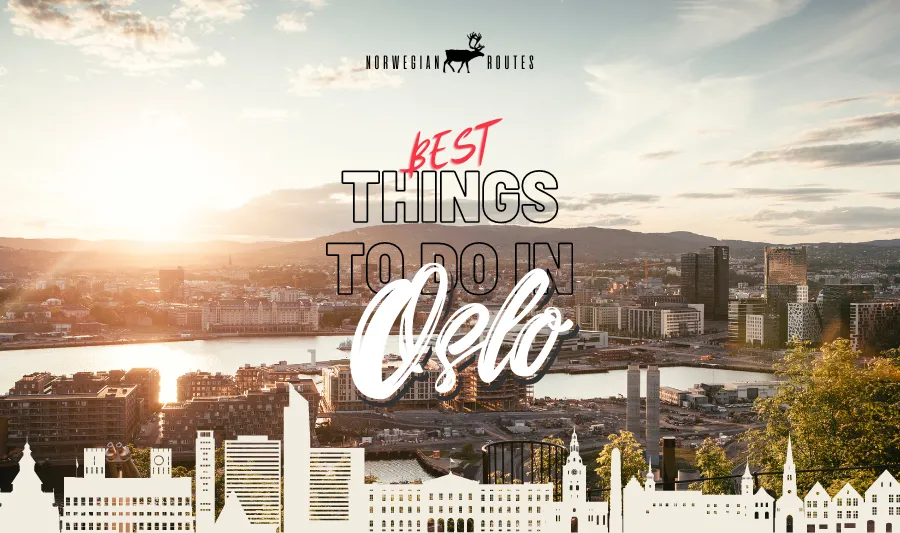
Oslo Opera House
The Oslo Opera House (Operahuset Oslo) is located near Oslo Central Station and is home to the Norwegian National Opera & Ballet . It is one of the most prestigious theaters in Europe and can accommodate over 1300 spectators.
The building, an eclectic example of contemporary architecture , was built entirely of white granite and Italian Carrara marble and its external shape resembles a huge iceberg rising over the fjord. Its interiors are decorated in precious oak wood, which creates a warm and welcoming atmosphere.
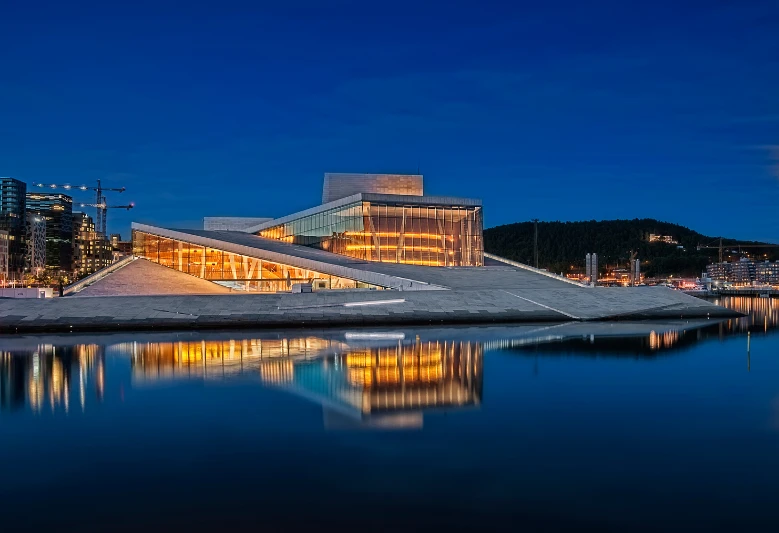
The theater hosts many theatrical and musical performances, not only of classical but also more modern works, featuring shows by internationally renowned artists from all over the world. You will be able to attend ballets, concerts, classical plays and opera performances.
The modern and iconic Oslo Opera House can be visited on a guided tour that includes a visit to the backstage and scenography workshops. Tours are held daily in Norwegian and English (on Saturdays also in German), last 50 minutes and tickets can be purchased on site. Ticket prices from 120 NOK. From the rooftop of the Oslo Opera House , which can be visited for free , you will have a nice view of the fjord and the city center.
Munch Museum (MUNCH)
Arguably the most famous museum in Oslo, the MUNCH Museum is a brand new museum entirely dedicated to the most famous Norwegian artist: Edvard Munch .
This museum – which is now the main place to see Munch’s works – is located in Bjørvika , one step away from the Oslo Opera House . Previously, the artist’s works were located in the Norwegian National Museum in Tøyen (Old Munch Museum) , near the Botanical Garden . Since October 2021 the Munch Museum has been moved to this new modern venue, entirely dedicated to his history and his works.
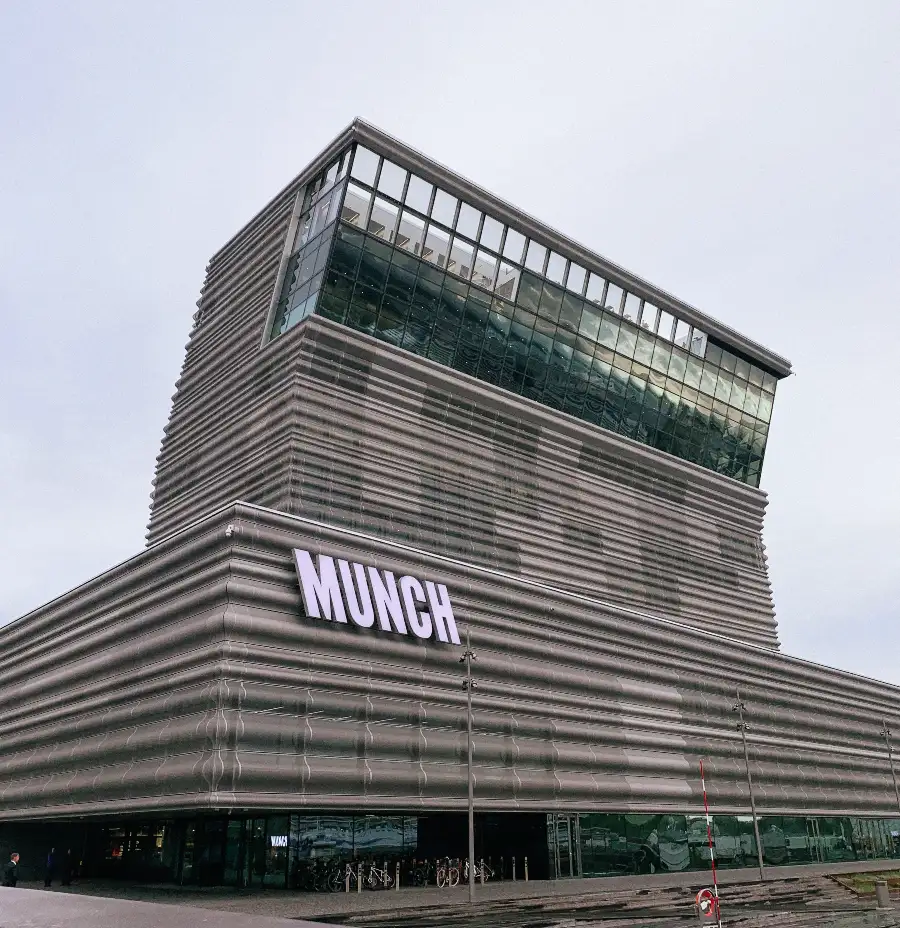
The MUNCH Museum is surprisingly huge: 13 floors and 11 exhibition halls. Many spaces are for events and temporary exhibitions, while the top 4 floors are a sort of observation deck over the city. You will be able to see thousands of works by Munch and other famous contemporary European artists. The collection of the MUNCH Museum in Oslo boasts over 26,000 works, including paintings, drawings, lithographs and sculptures, but also photographs and an exhibition on the artist’s life, with a reconstruction of his studio.
You will be able to see some of Munch’s most famous masterpieces, such as “The Scream” and “Madonna” , but also “Night in Nice” , “Puberty” and “Ashes” and many more.
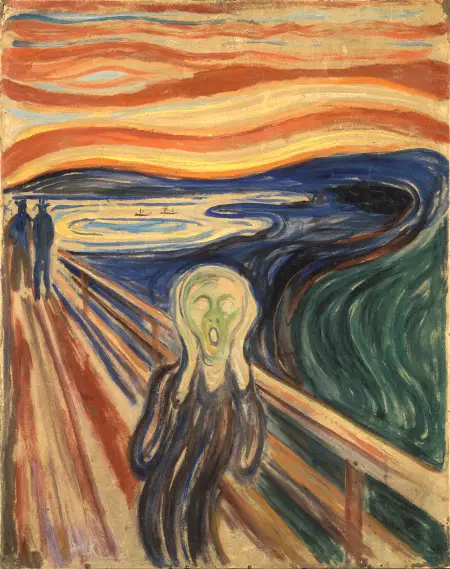
Seeing “The Scream” is a bit tricky: the museum exhibits the three most famous versions of the painting, but these are covered by a black protective panel. This is due to the fact that these paintings are extremely fragile and are damaged by the light. The three works are exhibited in rotation : every hour you can see one, but there is no schedule. This is a bit crazy: the paintings are unveiled randomly, so you’ll have to run around the museum for at least three hours to see them all.
However, MUNCH Museum is undoubtedly one of the best things to do in Oslo, and can be visited for free with the Oslo Pass City Card . Otherwise, ticket prices start from 160 NOK.
Akershus Fortress
Akershus Fortress is a medieval castle located near the port and is one of the main attractions of the city. It was built in 1300 by King Håkon V , when Olso became the capital of Norway. Its purpose was to protect Oslo from attacks by sea and was part of a complex system of mighty fortifications located around the harbor.
The fortress became even more important after the fire of 1624, when Oslo was rebuilt entirely within the defensive walls. Over the centuries, their function ceased and the walls and external bastions were demolished to allow the expansion of the city. Akershus Fortress then became a prison and then a military base. It currently houses several government offices, is the official seat of the Norwegian Prime Minister’s offices and has several venues for concerts and shows.
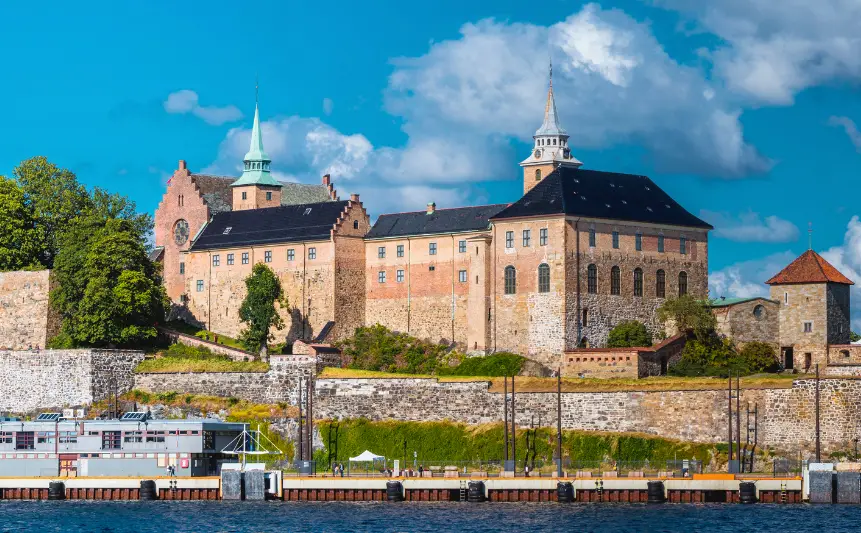
It has kept its medieval appearance almost intact, while its interiors have beautiful Renaissance decorations. You will visit the royal halls , the castle chapel , the royal crypts with the tombs of King Håkon VII and Olav V and the interesting Norges Hjemmefront Museet , a museum dedicated to the Norwegian Resistance during WWII. Here are exhibited objects, newspapers and photographs that tell the story of the Nazi occupation of Norway.
Among the artifacts on display are several devices used by spies and partisans to smuggle information. I was impressed by a denture that belonged to a Norwegian prisoner of war: inside it hid a mechanism used to receive radio transmissions!
You can walk around the ramparts and gardens of the fortress for free. It is open from 6.00 AM to 9.00 PM. Tickets for visiting the interior of Akershus Castle start at NOK 100. Free entry with the Oslo Pass City Card .
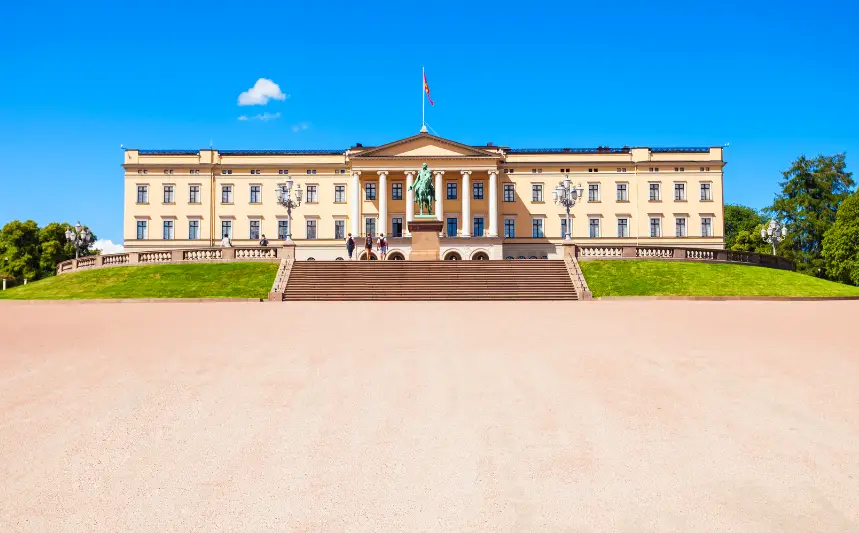
OSLO Royal Palace
The Royal Palace is located on the top of Bellevue Hill , at the end of Karl Johans , Oslo’s main street. This fabulous palace dates back to the 1800s and in 1849 became the official residence of King Oscar I . Even today this is the official residence of the Norwegian royal family , where King Harald V and Queen Sonja live. It is also the seat of the King’s office, where he holds hearings and official banquets and where the meetings of the Council of State are held.
Set in a lush garden, the Royal Palace boasts 173 rooms. Its fabulous rooms can be visited on a guided tour held daily in summer , from from late June until the middle of August. You will be able to visit some of the most beautiful rooms, such as the White Parlor , the Hall of Mirrors where royalty usually take afternoon tea, the Great Hall used for special occasions as a ballroom and the Banqueting Hall . You can also admire some of the private bedrooms for guests, such as the beautiful King Haakon VII Suite .
Tickets start at NOK 175 and tour times (which are also held in English) vary from year to year. Timetables and tickets on the official website of the Royal Palace . There are no tours in winter . The palace gardens are open to the public all year round and at 1.30 PM you can watch the exciting changing of the guard ceremony .
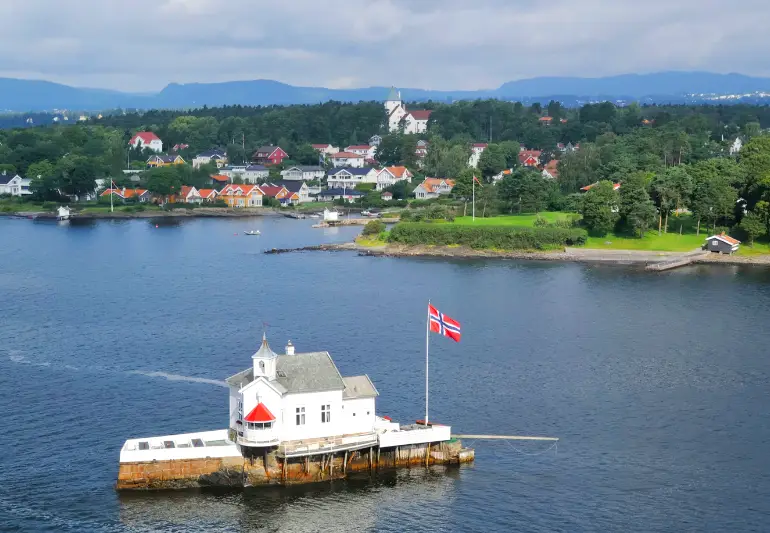
Oslo overlooks the picturesque Oslofjord , a peaceful fjord bordered by green grasslands, forests and villages dotted with traditional colorful wooden houses . You can go up to the rooftop of the Oslo Opera House for a nice view of the fjord.
But one of the best things to do in Oslo is undoubtedly an unforgettable cruise through Oslo’s fjords , which allows you to see the sensational surrounding landscape characterized by bays, narrow sounds and a maze of islands dotted with picturesque summer homes.
From the Oslofjord you will have amazing views over the city and its most iconic sites, such as the Opera House , the Dyna Lighthouse , the Bygdøy peninsula and the ships of the Maritime Museum . From the Aker Brygge pier there are connections to neighboring islands, such as Hovedøya and Gressholmen , which in summer are the ideal place for swimming, picnicking on the beach or hiking.
One of the best things to do in Oslo is a stroll along the beautiful Bygdøy peninsula , located west of the city center. This was once one of the quietest and most exclusive places in the city and still today you can see two of the most beautiful royal residences in Norway here.
The Bygdøy neighborhood is covered in forests, gardens, parks and paths where locals go for a jog. There are many opportunities for nature walks , as well as some beautiful beaches, such as Huk, which is very popular with locals in the summer.
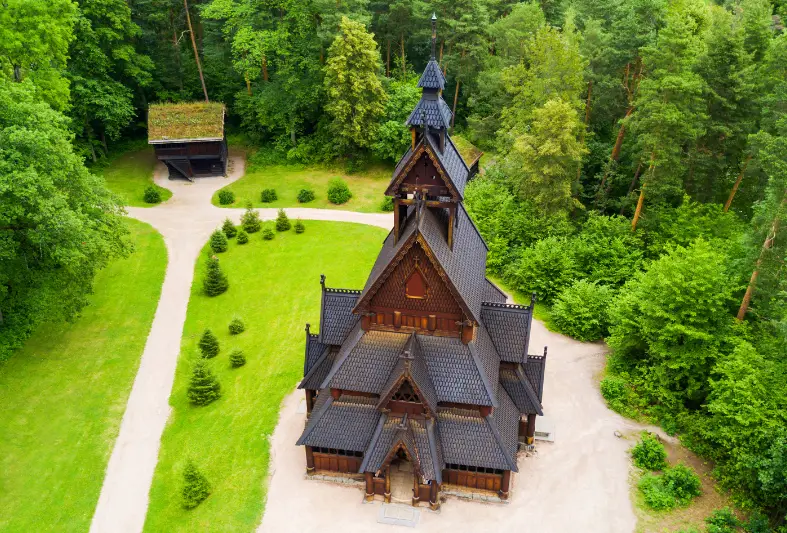
However, Bygdøy is famous for being Oslo’s museums’s island , because here there are 5 of the most famous museums in Oslo : the Kon-Tiki Museum , the Fram Museum and the Viking Ship Museum , the Norsk Folkemuseum and the Norsk Maritimt Museum . Below you will find a detail of each of them. There is also an interesting museum on the history of the Holocaust housed in a large noble villa, called Villa Grande .
You can also visit two fabulous royal residences: the Oscarshall , which can be visited with guided tours only in the summer, and the Bygdø Kongsgård which includes the large royal dairy farm , a good place to walk and see farm animals, recommended for families. There is also a café and shop where you can try the excellent locally produced organic cheese.
To go to Bygdøy you can take the public ferry which leaves from Pier 3 of Aker Brygge , in front of the Town Hall . Or you can go there by bus no. 30, which stops in front of the National Theater (Nationaltheatret) . Or you could go on foot or by bicycle, from Oslo Central Station it is about 6 km, or 1.5 hours walk (one way).
Norwegian Folk Museum
One of the best things to do in Oslo is a visit to the Norwegian Folk Museum (Norsk Folkemuseum) , the perfect place to learn more about the local culture. Far from being a boring museum, this is a family-friendly place as well, as it is a large open-air museum of traditional Norwegian culture, art and architecture. Over 160 authentic historic buildings are preserved here.
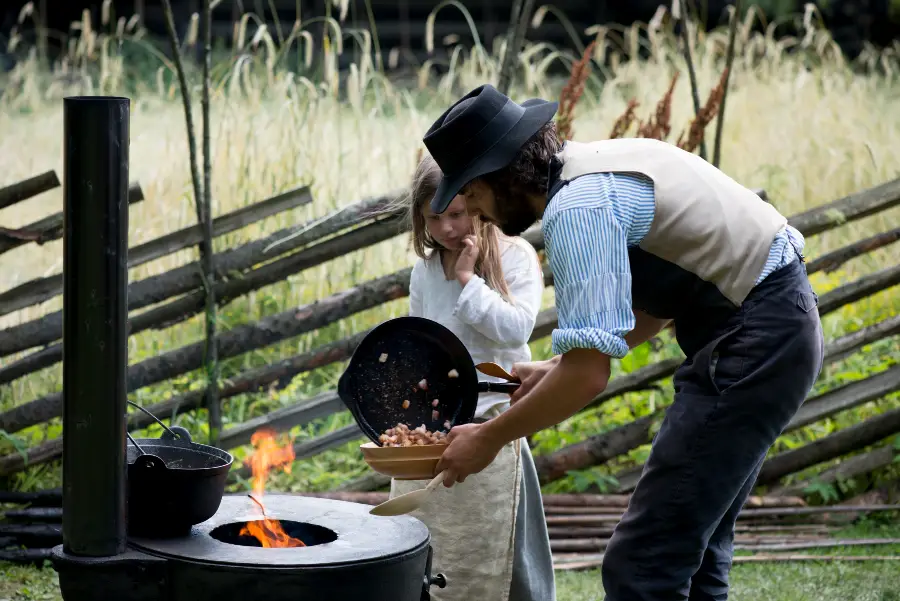
Located on the Bygdøy peninsula, the Norwegian Folk Museum allows visitors to stroll through centuries-old old houses, including the stunning Gol Stave Church , built in the 12th century and moved to the museum in 1884. You can visit the interiors of each building. so as to find out more about its history and different aspects of the local culture. Inside the buildings there are some exhibitions on Norwegian folk art and traditional costumes. The exhibits on the history of medicine , local crafts and Sami culture are also very interesting.
In summer, the Norwegian Folk Museum is one of the best things to do in Oslo with kids, as there are plenty of activities for children, such as feeding farm animals, horseback riding, seeing figures in traditional costumes and learn how to cook the famous Norwegian potato flatbread called Lefse .

Here you are also in the heart of the royal summer residence and you can visit Bygdø Kongsgård , the dairy farm that produces excellent organic cheeses. You will be able to take a look at the farm with its many animals: cows, sheep, ponies and rabbits. Here you can also see some rare native breeds, such as the Old Norse Spælsau sheep, the Fjord Horse and the cuddly Trønder Rabbit . In the heart of the farm there is also a small restaurant, Kongsgården Gardening , which serves good local specialties made with locally grown ingredients.
The Norsk Folkemuseum is undoubtedly one of the must-do in Oslo. Ticket prices start at NOK 180. Admission is free with the Oslo Pass City Card .
Fram Museum
One of Oslo’s most famous attractions is the Fram Museum , located on the Bygdøy peninsula. This museum tells the compelling history of polar exploration and provides an insight into the life of 20th century explorers. An unmissable destination for arctic lovers.
Here you can admire the Fram , which is the authentic ship used by explorers Fridtjof Nansen , Otto Sverdrup and Roald Amundsen for their Arctic and Antarctic expeditions between 1893 and 1912. The Fram boasts an incredible history: it is the wooden ship that has sailed further north and south than any other. Her hull was made to be wide, but with a shallow draft, so that she floated on the ice.
You will be able to visit the ship and learn about life on board and polar exploration. The Fram Museum also houses another ship, called Gjøa , with which Roald Amundsen sailed for the very first time through the Northwest Passage . Tickets start at NOK 140. Admission is free with the Oslo Pass City Card .
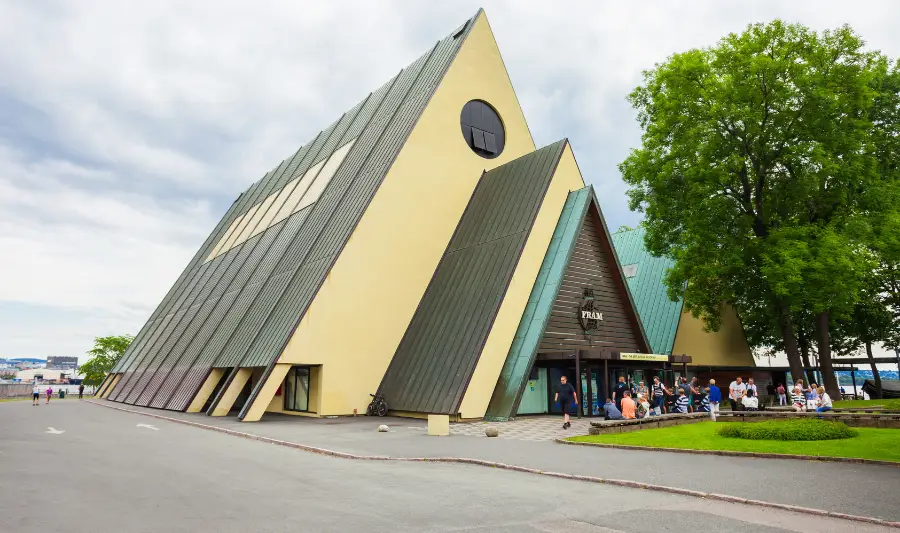
Norsk Maritimt Museum
The Norsk Maritimt Museum is another popular museum in Bygdøy and is located right next to the more famous Fram Museum . The museum is dedicated to Norway’s maritime heritage. Here you can learn more about local culture, fishing and maritime trade. You’ll also see an exhibition of historic ships ranging from ancient Stokkebåten to more modern steamboats and boats, as well as temporary exhibits on the sea and navigation. Ticket prices start at NOK 180. Admission is free with the Oslo Pass City Card .
Kon-Tiki Museum
A popular thing to do in Oslo is a visit to the Kon-Tiki Museum , also located on the Bygdøy peninsula. This is a small museum – you can visit it in less than an hour – dedicated to the history and life of Thor Heyerdahl , an explorer who crossed the Pacific Ocean in 1947 on a balsa-wood raft called Kon-Tiki .
His incredible adventure is narrated through photos and objects from the exotic islands visited by the explorer. You will be able to see the authentic raft , as well as other boats and artifacts. Every day at noon you can watch the screening of the famous film “Kon-Tiki” which tells the story of the expedition and which won an Oscar in 1950. Ticket prices start at NOK 180. Admission is free with the Oslo Pass City Card .
Viking Ship Museum and Viking Era Museum in Oslo
A famous attraction in Oslo was its Viking Ship Museum (Vikingskipshuset) , located on the Bygdøy peninsula. This museum exhibited three perfectly preserved authentic Viking ships. The most famous is the 9th century Oseberg ship, which is 21 meters long. In addition to the ships, the museum also housed an exhibition of artifacts and archaeological finds that once were inside the ships, including chariots, sculptures, furnishings and even skeletons.
The Viking Ship Museum is now permanently closed . In its place will be the new and larger Viking Era Museum , scheduled to open in 2026.
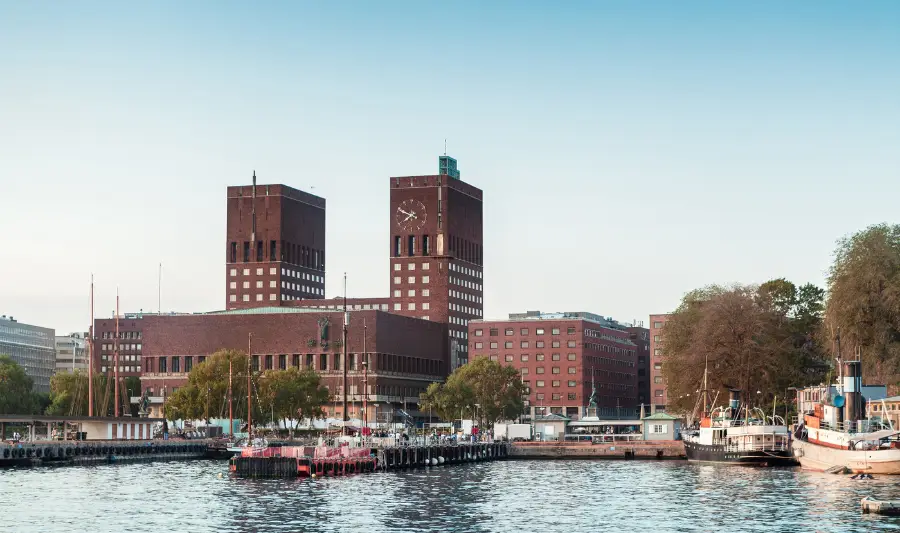
Oslo City Hall
Oslo City Hall (Rådhuset) is one of the most famous buildings in the city, known for being the venue for the Nobel Peace Prize ceremony. Dating back to 1950, this building with an impressive and austere facade – an excellent example of the Scandinavian functionalist style – still houses the City Council and the city administration.
It is located in the heart of Oslo, in the district called Sentrum , right in front of the public ferry pier. Its red brick facade is dominated by two towers, from which a carillon with 49 bells plays every hour from 7.00 AM to midnight. Don’t be fooled by the stern exterior though: its interior is fabulous, and well worth a visit! This by the way is one of the best things to do in Oslo for free , so just go in and take a look!
There are also affordable Oslo walking tours that allow you to visit Oslo City Hall , as well as other popular city attractions, with an English-speaking local guide. It is a great way to explore the city and learn more about its culture, history and eclectic architecture.
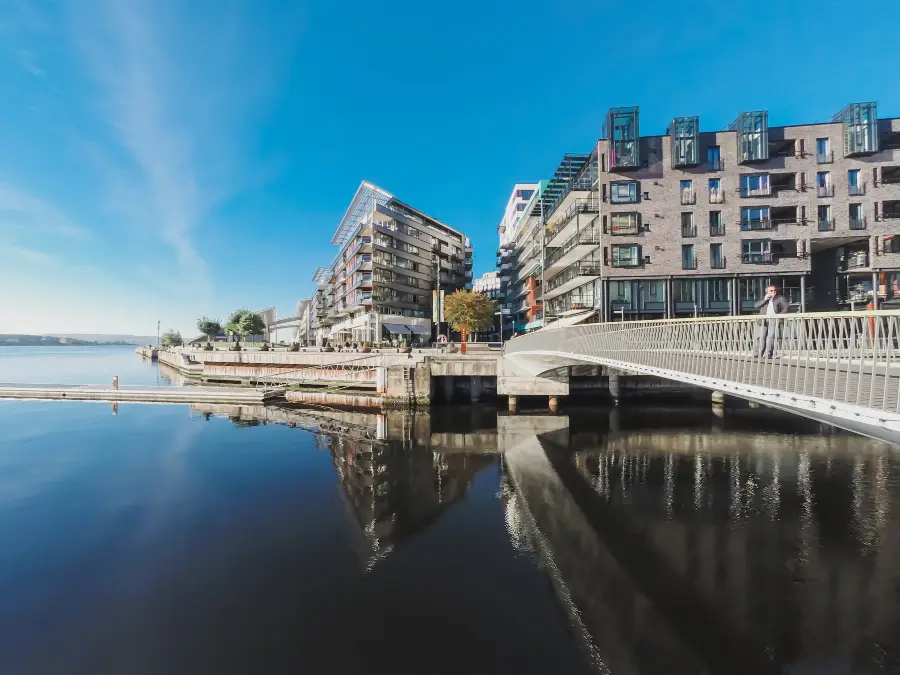
Aker Brygge
Aker Brygge is one of the most popular and vibrant areas in Oslo. It is located next to the harbor and is where most of the ferries leave for Bygdøy and other destinations in the fjord. Once there were old disused shipyards here, but recently it has become one of the trendiest areas of the city.
This is the ideal place for shopping and nightlife lovers. Along the Aker Brygge promenade there are hundreds of shops, as well as dozens of good restaurants and bars. In the summer there are outdoor terraces to eat or drink, while in the winter there is a magical atmosphere here – especially around Christmas time – and it’s a good place to relax and warm up.
This is a place that locals love , bustling with families, couples and groups of friends in every season. This is the place where you often meet with friends and go out for a drink. Plus, here are some of Oslo’s best seafood restaurants.
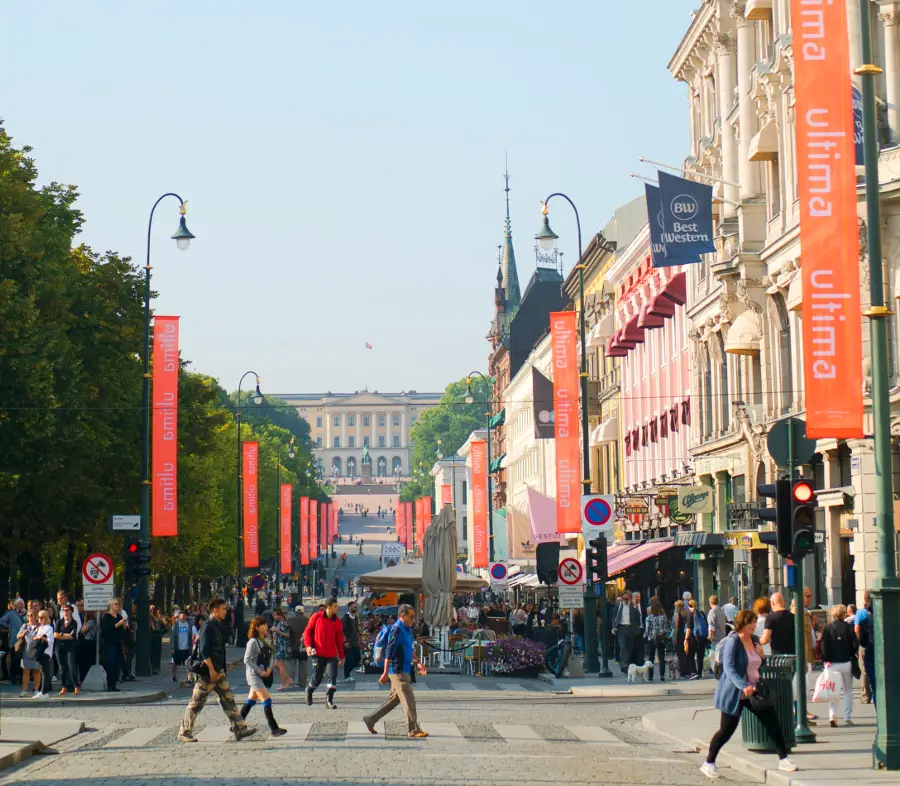
Karl Johans Gate
Karl Johans Gate is Oslo’s main street, named after King Charles III John of Norway . This is the real heart of the city: following it you can see most of the main attractions, from the University to the Historical Museum , up to the Stortinget , the large building that houses the Norwegian parliament, and the Royal Palace with its gardens. The boulevard is lined with shops, restaurants and cafes.
Oslo Cathedral
Oslo Cathedral is located in the heart of the city, near the Karl Johans Gate which is one of Oslo’s main streets. Dating back to 1627 it was heavily damaged during WWII and rebuilt soon after. The facade features a mighty bell tower and richly decorated bronze doors. The interiors are richly frescoed, with works by Hugo Lous Mohr and a beautiful altar and Baroque stained glass windows by Emanuel Vigeland . The Cathedral is the place where the official royal ceremonies take place and also hosts classical music concerts.
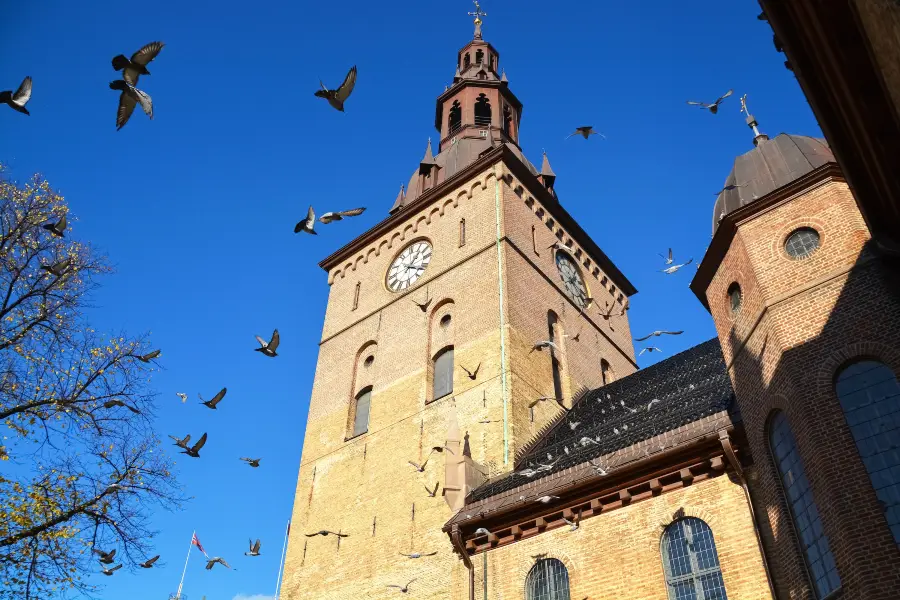
Gamle Aker Kirke
Located in the north of the city center, the Gamle Aker Kirke is the oldest building in Oslo , dating back to 1150 . This is the only medieval church in the city that has survived practically intact to the present day and looks like an austere building in stone with three naves in Romanesque style. The oldest part is the churchyard, while over the centuries the baptismal font, the baroque pulpit (1715) and the bell tower (1861) have been added.
Damstredet and Telthusbakken
In the surroundings of Gamle Aker Kirke there are two other districts whose visit deserves to be included among the best things to do in Oslo. Indeed Damstredet and Telthusbakken are among the oldest districts of the city and keep their old charm intact, with their traditional wooden houses dating back to 1700-1800 .
You could start your walk from Fredensborgveien , which is just a 15-minute walk from the city center. From here you will take Damstredet , where you can see its quaint wooden houses. You will continue on Akersbakken to Gamle Aker Kirke . Along the way you will pass the Vår Frelsers Gravlund Cemetery , where you can see the graves of numerous Norwegian artists, including Edvard Munch and playwright and theater director Henrik Ibsen .
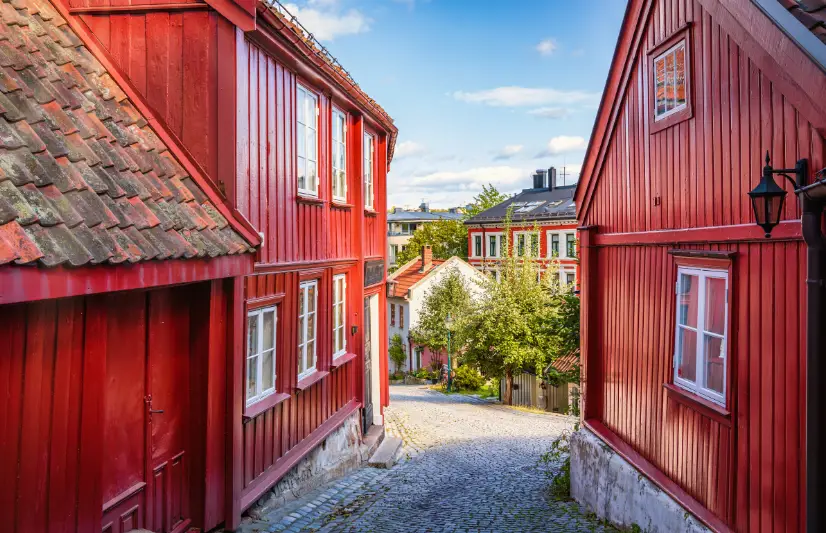
Tjuvholmen and Astrup Fearnley Museum
Tjuvholmen is one of the most modern, exclusive and glamorous neighborhoods in Oslo. This is the place for art lovers, as it is teeming with art galleries and art installations . You will enjoy a calm stroll along its streets, gardens and beaches overlooking the fjord. It will be like walking into an open-air art gallery .
The heart of this eclectic neighborhood is the contemporary building by the famous architect Renzo Piano , which houses the Astrup Fearnley Museum . This is the most important contemporary art museum in Oslo and one of the most important in Europe.
It exhibits works by leading artists such as Andy Warhol, Francis Bacon, Sigmar Polke, Janine Antoni, Jeff Koons, Sherrie Levine, Damien Hirst, Bruce Naumann and Olafur Eliasson. It can be reached with a short walk from Aker Brygge . Ticket prices start at NOK 140. Admission is free with the Oslo Pass City Card .
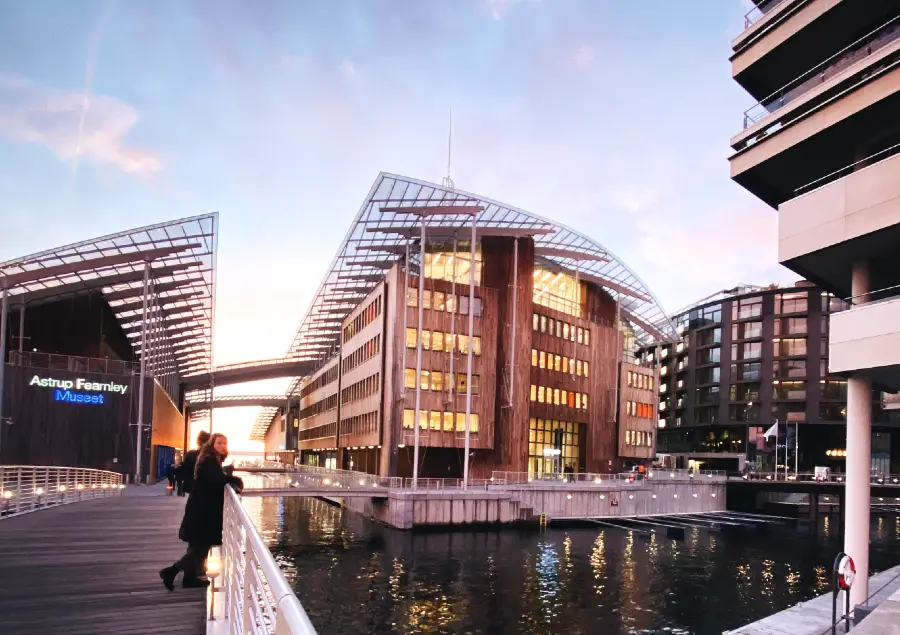
Frogner Park and Vigeland Park
Frogner Park , located in the district of the same name, is the largest and one of the most important parks in Oslo. In the 19th century the park was bought by the German industrial entrepreneur Benjamin Wegner , who had several buildings and monuments built, as well as some large sculptures.
In the southern part there are several mansions and manor buildings , which now house the Oslo City Museum (Oslo Bymuseum) . The heart of the park is Vigeland Park , where a series of sculptures by local artist Gustav Vigeland , dating back to the 1900s, are exhibited. There are over 212 works in bronze and granite , including a granite bridge with statues of men, women and a child – who is nicknamed Angry Boy . Also noteworthy is the bronze fountain, the 17-meter high monolith decorated with 121 human figures and the Wheel of Life . Either way, this is a good place for a quiet stroll. Admission is free.
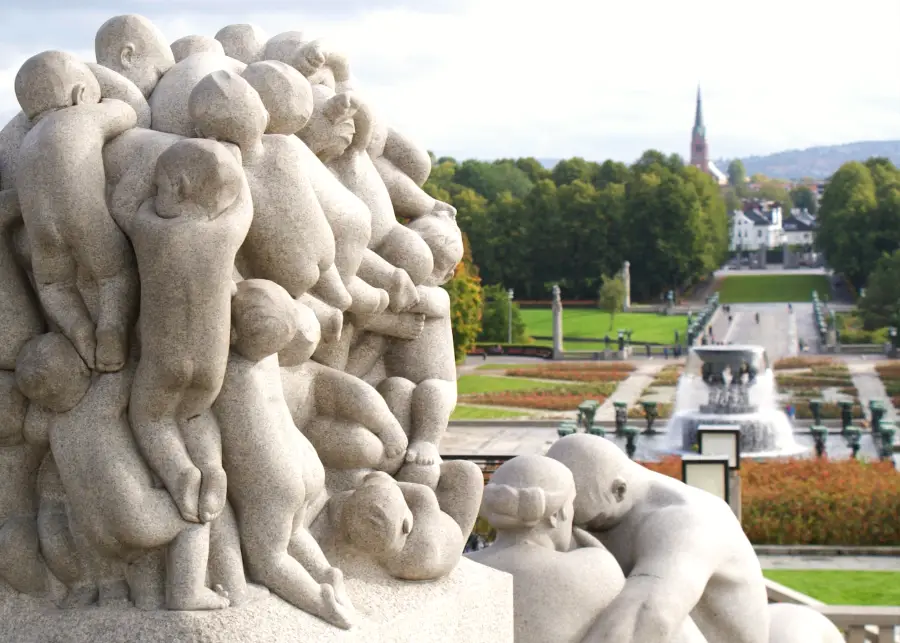
Grünerløkka
Grünerløkka is another vibrant district of Oslo, located north east of the city center. This was a decadent working-class neighborhood in the 19th century, built around large factories. This is where Munch spent his childhood and walking through the streets you will see many traces of what inspired his works.
Although at first glance the graffiti-covered alleys might make you think this is a dodgy neighborhood, Grünerløkka has recently become one of Oslo’s trendiest neighborhoods and one of its hottest nightlife spots . This area is full of restaurants and bars and is very popular with students. It is also a popular area for alternative lifestyle and shopping, filled with stalls and shops selling vintage and second-hand items.
The large building located at the edge of Karl Johans Gate avenue is called Stortinget and houses the seat of the Norwegian parliament . Built in 1866, the Stortinget features a yellow brick and red granite facade, a mixture of Norwegian and Italian architecture.
The large amphitheater hall where the assemblies of Parliament are held hosts 165 members and features a large painting located behind the President’s seat. This, created at the end of the 19th century by Oscar Wergeland , depicts the constituent assembly of Eidsvoll , held in 1814. In summer, some guided tours are held in English, which depart at 10.00 AM from the rear entrance in Akersgata.


Ibsen Museum
This small museum is located in the former home of Henrik Ibsen , a famous Norwegian playwright and theater recorder, near the Royal Palace . Here Ibsen lived for 11 years until his death, and today the museum tells his life and his works through a collection of objects that belonged to him, photographs and documents. You’ll see his perfectly preserved studio where he wrote some of his most famous plays: John Gabriel Borkman and When We Dead Awaken .
Norwegian Museum of Science and Technology
The Norwegian Museum of Science and Technology is located in the suburb of Kjelsås , easily reachable in just 10 minutes by train from Central Station. It is the largest museum of technology and science in Norway, with an interesting section dedicated to natural sciences and medicine .
It boasts dozens of permanent and temporary exhibitions, also suitable for families with kids. Its interesting interactive installations will allow you to learn many curious and interesting things. You will be able to see an electron microscope and test your skills in building electronic devices and machines. One of my favorite attractions is the National Museum of Medicine , which displays an interesting collection of medical instruments and tells the history and development of medicine from 1850 to the present day.
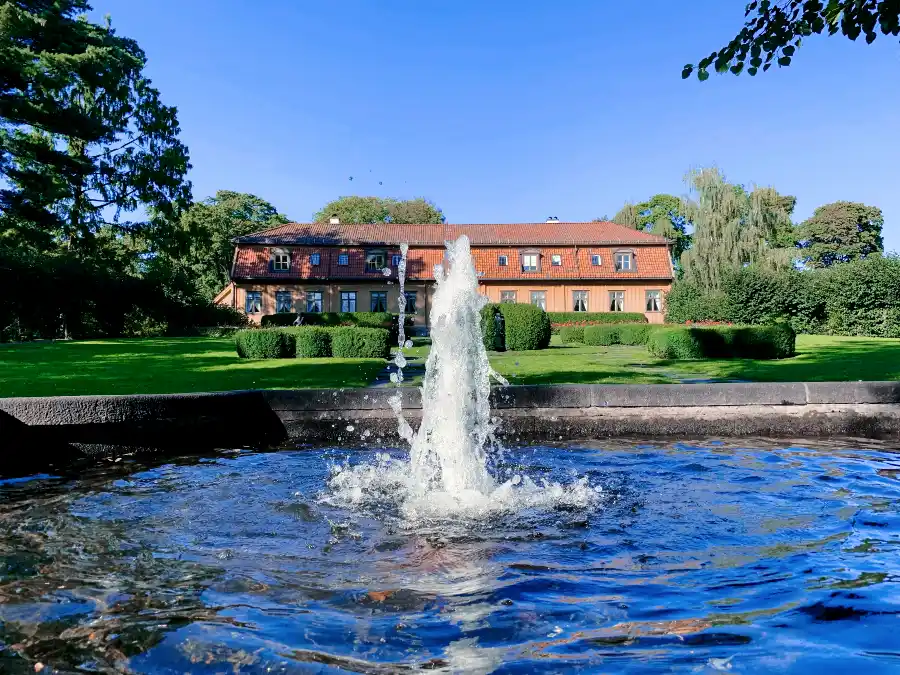
Natural History Museum at the University of Oslo
Located in the Tøyen district, the Natural History Museum is the most important in the country and boasts an interesting Geological Museum , a Zoological Museum and the large University Botanical Garden . It boasts a valuable collection of minerals and meteorites, as well as an interesting section dedicated to fossils and dinosaurs, including Stan : a huge life-size Tyrannosaurus Rex.
The Zoological Museum offers an interesting overview of Norwegian and polar fauna, while the Botanical Garden boasts over 35,000 plants including thousands of rare species. It was founded in 1814 and is the oldest botanical garden in Norway. Among its historic pavilions stand out two greenhouses dating back to the mid-19th century, the Palm House built in 1868 and the Victoria House in 1876. The last one houses a pond with wonderful Victoria water lilies. Do not miss the Scents Garden , an olfactory path among fragrant plants and flowers, designed for visually impaired visitors.
Mathallen Food Hall
The Mathallen Food Hall is a large food hall, which is the perfect place for foodies . Here you will find over 30 restaurants and bars, as well as several shops selling local specialties. Several cooking classes are also held here, just in case you want to learn some local recipes.
Housed in an old industrial building from 1908, built in red brick and iron, Mathallen Food Hall is the heart of the vibrant Vulkan district in the northern part of the city center. This is a popular neighborhood among young couples and families. There are dozens of great restaurants , street food stalls and you can find the best of international cuisine, especially Asian and American. There are also several good restaurants serving local cuisine, such as the 1-Michelin Star Restaurant Kontrast , which serves interesting gourmet tasting menus.
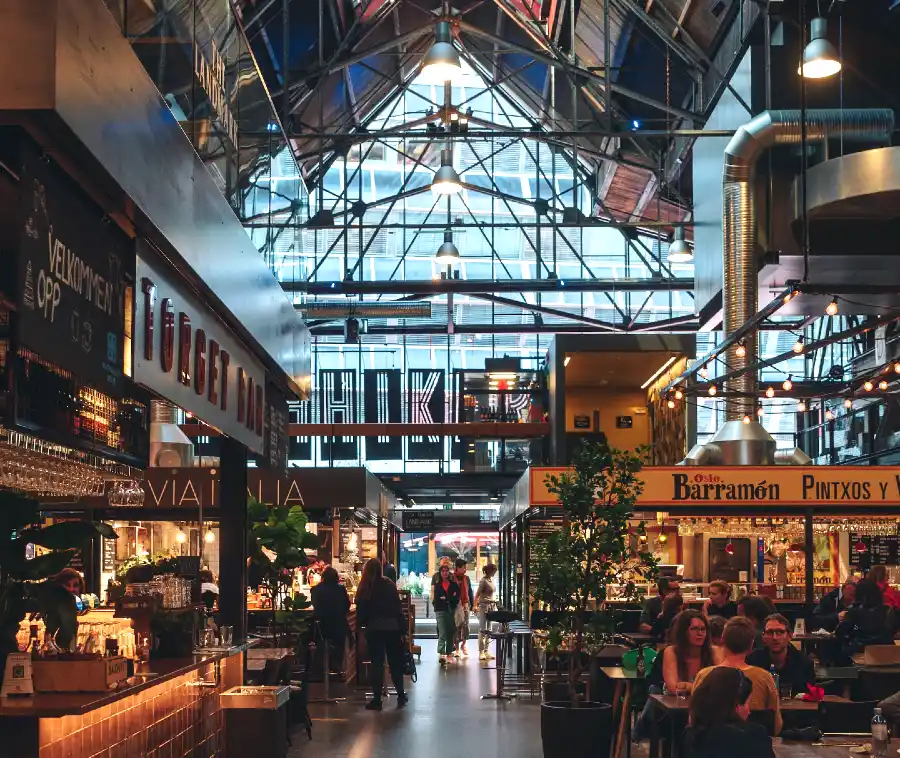
Another famous, albeit tiny, food hall in Oslo is Vippa . It is located in what used to be an old port warehouse, with the facade covered with graffiti, right next to the Akershus Fortress . It houses several street food stalls and food trucks ranging from local cuisine to the best of exotic cuisine . You will be able to taste a wide choice of Asian, Middle Eastern and American specialties.
It closes early, 9.00 PM, but is a good place for a drink or meal. It is very popular with locals : here you will find some of the best tacos, spring rolls, Chinese dumplings and Norwegian seafood. A journey through the flavors and cultures of the world! There are shared tables inside, but many prefer to enjoy their meal or drink while enjoying the peaceful fjord views .
Holmenkollen Ski Museum & Tower
Just 10 km from Oslo the landscape becomes mountainous and features forests and lakes . In summer this is a pleasant place to relax and take long nature walks , while in winter it is one of Norway’s most popular ski resorts .
The Holmenkollen Ski Museum & Tower is located right on top of Holmenkollen Hill in the Nordmarka region, just below the famous olympic ski jump . This museum is dedicated to the history of the Norwegian national sport: skiing! Through an extensive collection, which boasts over 2,500 pairs of skis that belonged to the best Norwegian skiers and members of the royal family, this museum collects over 4000 years of skiing history.
An interesting section is dedicated to polar expeditions , with skis and other equipment belonging to Nansen and Amundsen. There is also an interesting exhibition on snowboarding and modern skiing. From the museum an elevator takes you to the top of the ski jump, from where there is an observation deck with a view that sweeps across the valley, the city and the fjord.
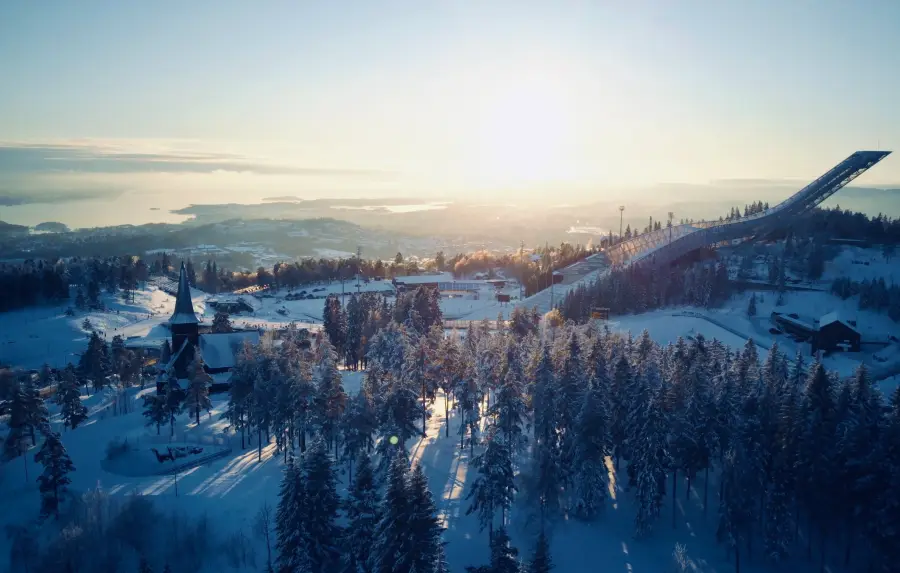
The region north of Oslo is called Nordmarka and is a fabulous area covered with forests , lakes and grasslands. It is a fantastic place to visit in any season and offers plenty of opportunities for nature walks, mountain biking and views of scenic lakes and mountains.
Here is also one of the most popular ski destinations around Oslo, the Tryvann Vinterpark , which boasts 14 slopes and six ski lifts. In the surroundings of the tall Tryvannstårnet television tower there are many paths and from here you have a beautiful view of the surrounding valley.
You could also hire a car and travel northwest to the picturesque village of Noresund , overlooking the mountains and a peaceful lake. Here you could stay overnight at the fabulous Norefjellhytta Restaurant & Overnatting , a Nordic-style log cabin offering quaint accommodations and a restaurant serving delicious regional cuisine .
Ekebergparken
The place that inspired Munch’s “The Scream” is located at Ekebergparken , although it won’t be easy to recognize at first glance. This park is located just east of Gamle Oslo and can be reached within a 30-minute walk. Today it is a place where locals like to stroll leisurely, there are several sculptures , including some by Salvador Dali and Damien Hirst . The entrance to the park is free and from here you also have a nice view over the city.
Deichman Bjørvika Library
Deichman Bjørvika is Oslo’s new public library and is located between Central Station and the Opera House . It is housed in a beautiful contemporary building featuring six entirely transparent floors. The walls are made of glass and let in the light, creating a sense of union between the inside and the outside. It is a modern library, with large spaces dedicated to cultural events. It boast a collection of over 450,000 volumes and large reading rooms, as well as a cinema, an auditorium, recording studios and a restaurant.
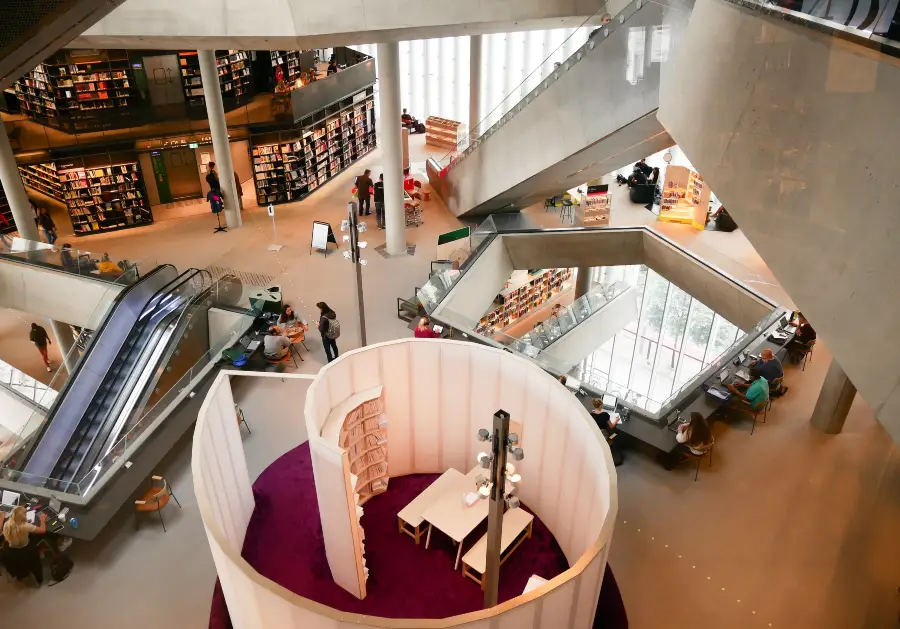
Historisk Museum
The Historical Museum of Oslo (Historisk Museum) offers a good overview of local and Northern European history and boasts interesting sections dedicated to the Viking Era and local folklore. Surprisingly, you will also find extensive collections dedicated to the history of Ancient Egypt and the native peoples of Latin America .
KOK Floating Sauna
An unusual thing to do in Oslo is KOK’s floating saunas . Located right on the Oslofjord , these saunas are a kind of floating barge with a small wooden house on top that houses a changing room, a sauna and a terrace from which you can dive into the cold waters of the fjord. Each floating sauna can accommodate 10 to 14 people and you can book it all for yourself and your friends, or join a shared experience. They are located near the Aker Brygge and Langkaia Pier , next to the Oslo Opera House .
Norway’s largest and most popular amusement park is located about 20km south of Oslo in the village of Vinterbro , easily accessible by car or train. The Tusenfryd only opens from April to October and boasts over 30 family-friendly rides and attractions. There are six roller coasters and other adrenaline-pumping rides, as well as children’s rides such as toy trains, bumper cars and the like. It might seem rather modest when compared to other mega amusement parks in the world, but for locals this is the best! In summer there is also a water park with water slides and swimming pools.
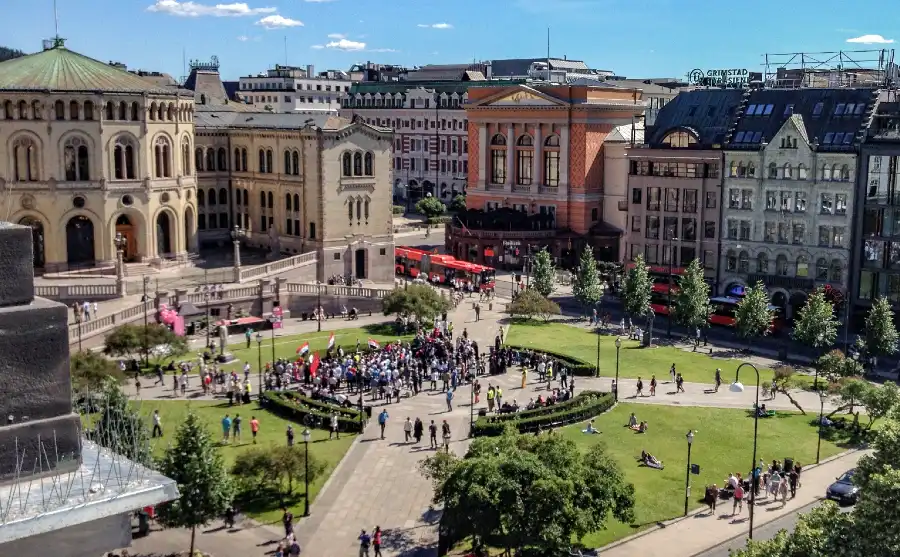
There are tons of things to do in Oslo: medieval forts, parks and top-notch museums , which are among the best in Europe. The city is easily explored on foot and with the excellent public transport system , so in a few days you can easily visit all the best attractions.
To make the most of your visit to Oslo you will need to explore at least the most famous museums, which offer an interesting insight into local life, culture and history, Arctic exploration and the Viking Age. You will visit several museums per day, as many can be visited in less than an hour.
This means that if you visit at least 5 of the best things to do in Oslo in one day, you will spend a lot of money on tickets. At an average rate of NOK 150 for each museum, you will spend at least NOK 750 , which means € 75 ! Plus the cost of tickets for buses, ferries, trams, etc.
This is why most travelers opt for the affordable Oslo Pass City Card , the official pass that allows you to visit all the main attractions of the city at its best and includes:
- FREE admission to ALL Oslo’s Best Museums and Attractions
- FREE admission to over 30 attractions in Oslo (including the ones you read in this guide!)
- UNLIMITED FREE TRIPS on Public Transport (Bus, Trams …)
- UNLIMITED FREE TRIPS on Ferries to and from Bygdøy
Plus: OSLO FREE WALKING TOUR with Official English Speaking Guide from Oslo Guidebureau
You can choose an Oslo Pass City Card that is valid for 24 , 48 or 72 hours from the time of first use. Prices start at NOK 273 per day (for the 72-hour Oslo Pass City Card) or NOK 445 (for the 24-hour card).
Discounted passes are available for children 6-17 (under 6 is free), students (up to 30, with valid student ID) and seniors (over 67). The child pass starts at NOK 136 per day (for the 72-hour Oslo Pass City Card) or NOK 235 (for the 24-hour one), which is pretty cheap! On average, travelers to Oslo visit at least 15 attractions during a short stay (1-3 days), so the Oslo Pass City Card will save you a lot – you’ll spend less than half the price of the tickets!
Sightseeing Cruise through Oslo’s Fjords
This is undoubtedly the most popular thing to do in Oslo: a cruise on the calm waters of Oslo’s Fjords , from which you can get a nice view of the city , its harbor and main attractions. You will explore the coast around the city, with its coves and scenic bays and even a fabulous lonely lighthouse . You will pass through a maze of islands , dotted with picturesque colorful wooden houses, and you will be able to see the many seabirds that populate the fjord, such as the white-tailed sea eagle . This tour is very popular and in demand, so it’s best to book in advance.
For a few extra bucks you could join an evening cruise , which includes a good and hearty dinner buffet of delicious Norwegian shrimps.
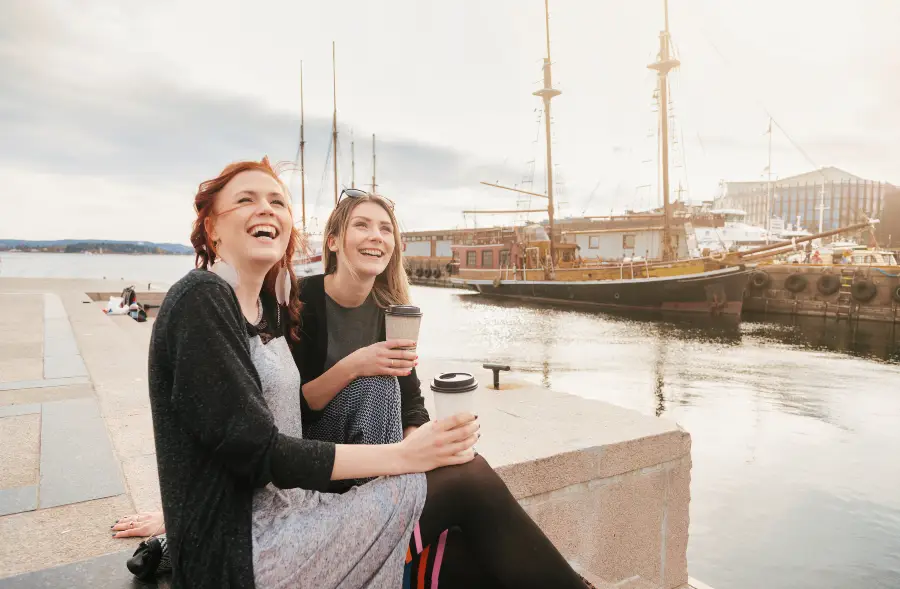
Guided tours of the city by bus, bicycle or on foot
There are so many things to do in Oslo and a good way to catch the city’s highlights and learn more about its compelling history, stunning buildings, contemporary art and architecture is to join a guided tour.
If you are short on time, an excellent solution could be a Hop-On Hop-Off Bus Tour : the big red buses pass through the most beautiful places in the city , connecting all the main attractions and museums. Buses run frequently and at each stop you can simply get off, visit, take photos and spend as long as you want there, then take the next bus and continue to the next stop. The ticket is valid for 24 hours and includes an audio guide available in several languages.
A very pleasant alternative could be an Oslo Bike Tour : you will explore the most beautiful corners and the most hidden gems of the city, led by an expert local guide. You will enjoy the city just like a local, riding your bike. The rental of a comfortable hybrid bike and all the necessary equipment is included in the price.
Otherwise you could book a Private Oslo Walking Tour which in just 2 or 4 hours allow you to discover the best of the city , see the main monuments and learn more about its history. The tour can be a good way to see the most beautiful corners of Oslo, and then maybe explore the museums you want to visit at a more leisurely pace.
Kayak tour in the Oslofjord
One of the best things to do in Oslo for outdoor enthusiasts is a kayaking tour of the beautiful fjord . This activity lasts 3 hours and is also suitable for beginners : you will be accompanied by a professional instructor, who will guide you through some of the most scenic bays of the fjord with a beautiful view over the city. During the tour you will be able to see some of Oslo’s most famous sights from a rather unusual perspective. It is a good way to get in touch with the adventurous local culture!
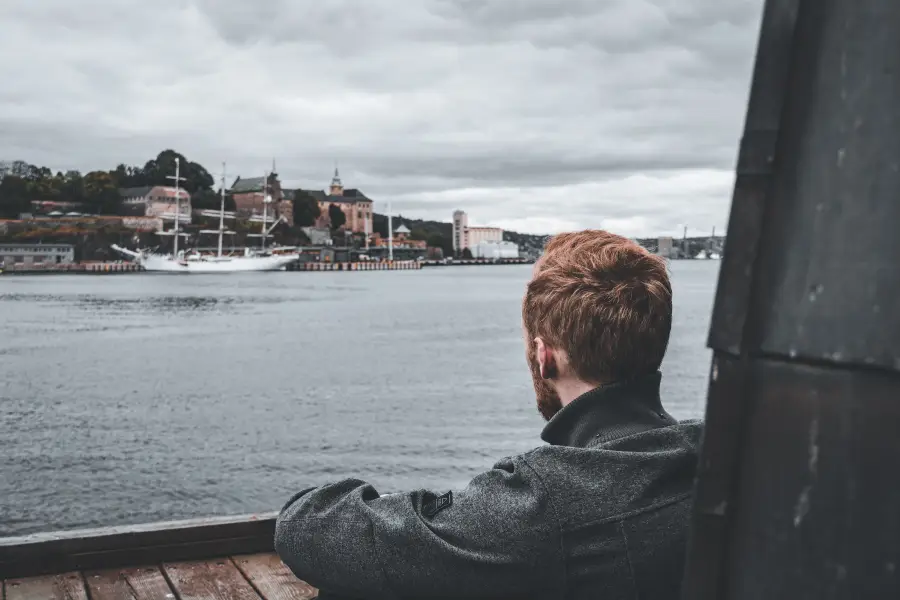
Oslo is Norway’s bustling capital city and sits nestled in the scenic Oslofjord , a fjord located in southeastern Norway, not far from the Swedish border. Surrounded by forests and mountains renowned for winter sports, Olso is Norway’s largest and most populous city, as well as being its main cultural, financial, economic, political and scientific hub.
With a population of just 630,000, Oslo is a modern, vibrant and cosmopolitan city. It is full of great trendy hotels , restaurants and bars . It also has a pleasant nightlife, which is quite rare in Norway. Unsurprisingly, there are tons of things to do in Oslo – you’ll discover the city’s most scenic corners, fabulous fjord views and interesting museums, which are among the best in Europe.
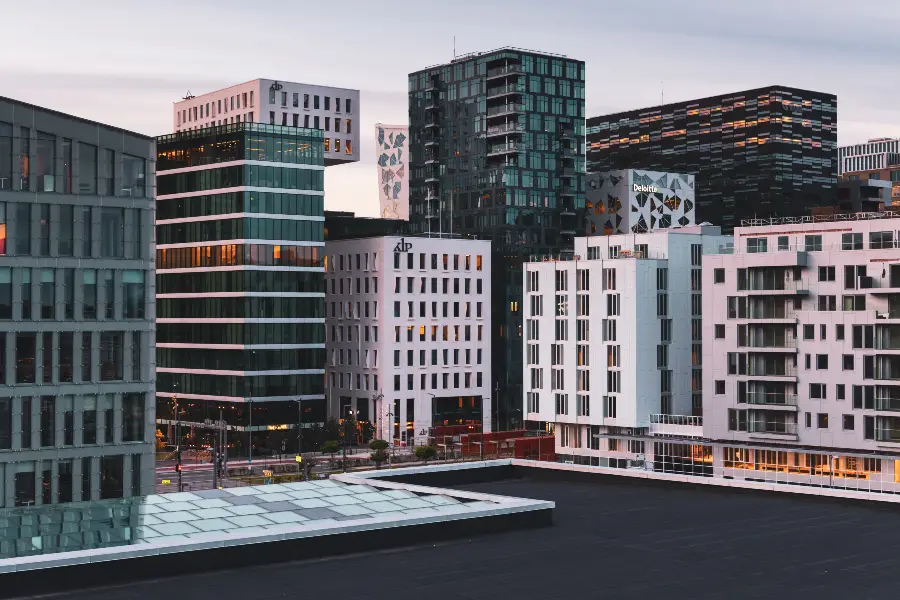
Oslo boasts a thousand-year history : its name until a few years ago was Kristiania or Christiania . Do you know why? Oslo was founded in 1050 by King Harald Hardraade , along the banks of the Akerselva River , where today there is the district of Gamle Oslo , which means Old Oslo. This was a calm bay, called Bjørvika , protected by the nearby hills of Ekeberg , and there was an old Viking port. In 1624 a fire completely destroyed Oslo and King Christian IV decided to rebuild it just a few kilometers to the west, where the Sentrum district is now located. He then changed its name to Christiania , from his name.
In the following years, Norway was merged with the Kingdom of Sweden and in 1877 the name of the city began to be written as Kristiania , this until the independence of Norway in the early 1900s. Only in 1925 the Norwegians decided to return to the old name and the city was once again called Oslo .
After the Second World War, Oslo developed and expanded rapidly, incorporating the surrounding villages. In 2000 it was classified as Europe’s fastest growing city , and still is today. Plus, it’s recognized as one of the best cities to live in , thanks to its good quality of life , decent wages, great public transport, and a relatively compact size.
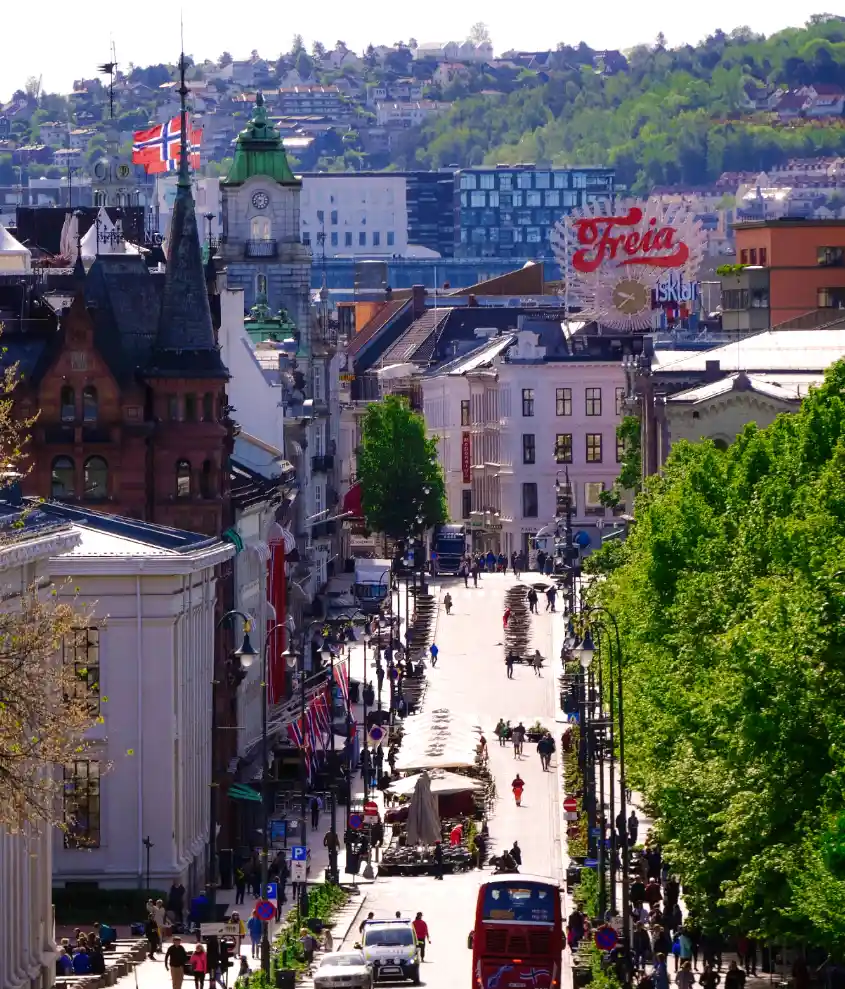
Oslo is one of the major capital cities in Northern Europe and is well connected with all major European cities and many international destinations. It has two international airports : Gardermoen and Torp .
Gardermoen is located 50 km north of Oslo, while Torp is 120 km south. Both are connected by bus and Gardermoen is also easily accessible by train.
Getting to Oslo by Cruise or Ship
Many tourists arrive in Oslo on one of the large cruise ships that sail along Norway’s southern fjords. The pier is located near the Town Hall and Akershus Fortress in the city center. Cruise passengers have little time to visit the city, so it is advisable to book one of the convenient (and inexpensive, especially when compared to the overpriced tours sold on the cruises) tours of the city.
In Oslo there are ferry connections to and from Kiel (Germany), Copenhagen (Denmark) and Frederikshavn (Denmark). These are large car ferries and take between 19 and 22 hours. it could be a good option for those coming to Oslo by car.
Getting to Oslo by Train
Oslo Central Station is located right in the city center and has international connections to Sweden . It is a popular stop for those taking an Interrail trip to Scandinavia or Norway . The famous Oslo-Bergen railway departs from here, crossing stunning mountainous landscapes and connecting Norway’s two major cities. There are also some connections to Trondheim and Stavanger .
Getting around Oslo is quite easy: public transport covers all the main attractions and districts of the city, it is efficient and punctual. There are several buses and trams and the main ones run through Oslo Central Station . Anyway, the city is compact and can be easily explored on foot or by bicycle.
Other Helpful Tips for Your Trip to Oslo (From a Local!)
Are you planning a trip to Oslo? Then you might want to take a look at our guide on Oslo Airport Hotels , which could come in handy if you have an early morning departure or a late evening arrival. If you’re traveling on a tight budget and looking for an affordable, clean, and comfortable place to stay in the heart of Oslo, you should check out our guide to the best Hostels in Oslo .
- Search Please fill out this field.
- Manage Your Subscription
- Give a Gift Subscription
- Newsletters
- Sweepstakes
- Where to Go in 2024 Overview: Where to Go in 2024
- The 50 Best Places to Travel in 2024
- An Insider's Guide to Paris — Luxury Hotels, Vintage Shops, and the City's Best Restaurants Included
- This Southern U.S. City Was Named One of the Best Places to Travel in 2024
- 5 Coastal Towns in Alaska That Are Adorable in Any Weather
- T+L's Review of Regent Seven Seas Cruises’ Seven Seas Grandeur
- This Exclusive Helicopter Dining Experience Is the Best Way to See the 'Grand Canyon of Mallorca’
- Belmond Brought Back Its Most Thrilling Trains Through Asia – Here's What to Expect
- How to Plan the Perfect Trip to Montreal
- Georgia May Be Getting Its First National Park Soon — and It Has More Than Just Scenic Trails
- How to Plan the Perfect Trip to Costa Rica
- How to Plan a Trip to Italy's Amalfi Coast
- This Stunning Region in Portugal Is a Wine Lover's Dream
How to Visit Oslo, According to Someone Who Spent 6 Years in Scandinavia
- This South American City Is One of the Best Places to Travel in 2024 — Here's How to Visit
- The Caribbean's 'Nature Island' Has Rain Forests, Luxury Hotels, and a Rich Creole Culture
- This Midwestern Gem Is Home to Barbecue, Music, and a Flourishing Womens’ Sports Scene
- Where to Go in 2024 The 50 Best Places to Travel in 2024 An Insider's Guide to Paris — Luxury Hotels, Vintage Shops, and the City's Best Restaurants Included This Southern U.S. City Was Named One of the Best Places to Travel in 2024 5 Coastal Towns in Alaska That Are Adorable in Any Weather T+L's Review of Regent Seven Seas Cruises’ Seven Seas Grandeur This Exclusive Helicopter Dining Experience Is the Best Way to See the 'Grand Canyon of Mallorca’ Belmond Brought Back Its Most Thrilling Trains Through Asia – Here's What to Expect How to Plan the Perfect Trip to Montreal Georgia May Be Getting Its First National Park Soon — and It Has More Than Just Scenic Trails How to Plan the Perfect Trip to Costa Rica How to Plan a Trip to Italy's Amalfi Coast This Stunning Region in Portugal Is a Wine Lover's Dream How to Visit Oslo, According to Someone Who Spent 6 Years in Scandinavia This South American City Is One of the Best Places to Travel in 2024 — Here's How to Visit The Caribbean's 'Nature Island' Has Rain Forests, Luxury Hotels, and a Rich Creole Culture This Midwestern Gem Is Home to Barbecue, Music, and a Flourishing Womens’ Sports Scene CLOSE Part of Where to Go in 2024
Oslo, Norway, is a year-round destination — with saunas, fjord cruises, and fascinating museums.
Best Hotels and Resorts
Best things to do, best restaurants, best time to visit, how to get there, best neighborhoods.
The mere idea of a summer day in a place like Oslo — home to subzero waters and black-metal music — might seem like a mirage. But the summers here are famously light and hot, with the Norwegian capital being an ideal playground for sunbathing, swimming, fishing, and hiking, replacing the darker months’ skiing, ice bathing, and roaring fireplaces.
Beyond its outdoor pursuits, Oslo 's eco-conscious efforts exceed most cities. In 2016, it introduced a “climate budget” with a goal of reducing emissions by 95 percent by 2030; two years later, 1,000 trees were planted for the Future Library project ; and in 2019, the city was crowned the European Green Capital .
Oslo’s young professionals and creatives may scatter themselves among the hip, diverse neighborhoods of Grünerløkka and Tøyen, or the more upscale Frogner and St. Hanshaugen (picture Parisian-like facades and tree-lined streets with mansions), but the main thing this city’s dwellers have in common is their commitment to time spent in nature. Visitors will find eco-friendly hotels committed to eliminating waste and championing reusable materials, restaurants that support third-world communities, and spas and saunas dispersed between the city’s central harbor and the dense surrounding forest.
Christopher Larson/Travel + Leisure
At a time when travelers are becoming aware of how their leisure choices impact the environment, it’s interesting to see Oslo’s dedication to learning about and introducing the bigger ideas behind eco work. September’s Oslo Innovation Week, for example, is largely digital, with the aim of solving real global challenges through entrepreneurship, innovation, and green tech — the subjects of its panels include energy, circular economy, and life-science investment. For anyone interested in such, its panels and events make it a good time to visit.
For me, having spent six years in Scandinavia, and long summers and winters in Norway , Oslo became a base for months at a time. Most favor Danish and Swedish coastal cities for their accessibility. Like any capital, the Norwegian city is fast-changing and home to global diasporas that help shape the identity of this fjord-laden delight.
Top 5 Can’t Miss
- Any trip to Oslo calls for a bracing ice dip and sauna session.
- History buffs might note the elaborate original fixtures of Sommerro, a former electricity factory
- Restaurant Alex is the newest place to see and be seen, yet it's ultra-welcoming.
- Marvel at Vigeland, a park displaying nude sculptures.
- Go cross-country skiing or hiking, or simply enjoy the view from the top, at Nordmarka.
Francisco Nogueira
Not long after Sommerro's fall 2022 opening, the hotel and spa made its way on Travel + Leisure' s list of the 100 best new hotels in the world . Its electricity factory history is felt while the mid-century interior design and moody lighting offer a polished feel. The 231 rooms of various sizes include annexes, sloped ceilings, and exquisite upholstery, plus top-tier amenities and service. Don't miss the newly opened Izakaya, which serves a Nordic-Japanese menu.
Villa Inkognito
The next-door sibling property of Sommerro, Villa Inkognito is housed in a former private residence dating back to 1870. It was transformed into offices for the city’s first electrical company, and later served as the Algerian embassy. The 11-room retreat is also available on a full buyout basis for an ultra-special trip, and each room is meant to feel like a home away from home.
Amerikalinjen
This revved-up former Norwegian America Line headquarters toots its own stylish horn. The cheery staff resurrects the bustling energy of the storied spot , which is decked out in snappy tailoring from Norwegian fashion favorite Holzweiler. Guests can also expect a chic library, original elevators, and ceiling stuccos that remain across the rooms.
The Well Spa & Hotel
The Well Spa & Hotel provides a holistic approach to health — meaning uniform bathing suits and gowns, a zero-digital policy in restaurants and communal areas, excellent menus, relaxing treatments, and a decidedly tranquil feel in the stunning sculpture garden. Located in Sofiemyr, about 20 minutes from Oslo's city center via its own shuttle, the impressively vast property makes for a divine solo sojourn or a social spa trip.
Clarion Hotel The Hub
Located close to Oslo Central Station, Clarion Hotel The Hub stands out with its magnificent lobby showcasing marble features, a sumptuous bar, and refurbished rooms.
Taylor McIntyre/Travel + Leisure
With rugged natural terrain skirting the entire city, it’s no wonder most extra-curricular activities here revolve around getting outdoors. A winding, 20-minute tram ride up Nordmarka takes visitors to the place where the trees for Future Library are planted. Take the lift to ski jump Holmenkollen, then stop by Holmenkollen Restaurant for tartare, a hot toddy, and mountaintop views.
Sauna and Swim
In the winter, the adrenaline rush is rewarding, and come summer, the waters are refreshing. At Badstuforening , it's $25 for a two-hour communal seat; enjoy the peaceful camaraderie (and views) of this sweet setup. Just make sure to bring a towel. Alternatively, try Salt , a sauna and art space that's set opposite the Snøhetta-designed opera house and hosts concerts, plays, and exhibitions.
Museum Hopping
Explore the intricate history of explorer life at the Fram , which contains the reconstructed remnants of the ship that raced to the South Pole, headed by Norwegian adventurer Roald Amundsen. In the center of town, check out the Nobel Peace Center for its permanent and roving collections of significant human rights accomplishments. An unsung gem is the Emanuel Vigeland Museum , complete with frescoes and gong bath concerts. Tip: Plan in advance planning due to the location's unusual opening hours.
Silent Fjord Cruise
Take a silent electric fjord tour on the Brim Explorer , with multiple options to suit your mood. There’s yoga on the deck, an elegant brunch, or a dinner cruise. Other perks of this slick and small liner include less crowds and an intimate setting for your crew.
Courtesy of Restaurant Alex
Restaurant Alex
An overnight success with everyone from students to billionaires, this restaurant calls for advance reservations. Emerging chef Alexandra Ek guides a well-priced brasserie-style menu, while the resident DJs don’t frown upon dancing on tables after hours.
Sabi Omakase
Japanese cuisine this far from East Asia has a terrific head start thanks to the abundance of cold sea. At Sabi Omakase , guests can expect a carefully composed seasonal menu that's served in a harmonious, low-lit space. Interestingly, the chef used to be a surgeon — the locale and its offerings are not remiss of precision, and, yes, you’re safe in his hands.
Solsiden Restaurant
Solsiden is a fail-safe institution for seafood on the water, dapper and light-filled with its glass structure. Put on a pretty dress or shirt and enjoy the harbor breeze at this summer-only restaurant. Order the renowned shellfish tower and the Champagne.
It’s no secret Norway can whip the wallet. This fresh and lovely Asian noodle joint is a way of preserving splurges for another day while still giving you the opportunity to eat well. Plus, every purchase feeds a child in Africa, where founder André Evju spent lots of time.
Plant-filled with kitschy white tiles and pink lighting, Njokobok offers Senegal-style community dining. Order the jollof rice, grilled dorada, or whole lamb and indulge in the location's famous onion sauce three ways. Oslo has a sizable African diaspora, so you'll find good Ethiopian, Eritrean, Moroccan, and Somali restaurants throughout the city.
While winter is for snow and snuggles, summer in Oslo is all about swimming and seafood.
Spring (or shoulder season), meanwhile, is ideal for soaking up art, history, opera, and the boutique shops. June through September sees music festivals such as By:Larm and Øya , and winter is prime time for ski tournaments, cozying up in a cabin, and cold-weather rituals like ice bathing and relaxing in a sauna.
The main thing to consider is winter's darkness — there are nearly 20 hours under cover, compared to summer’s two-hour nights.
Flying into Gardermoen is ideal for easy access into the city — it's about 20 minutes via speed train. Arriving at another airport means a long bus ride to the city, so don't be duped by the cheaper inter-European flights to Torp Sandefjord Airport. Another way to arrive is by cruise — check out eco operators such as Hurtigruten. You might also consider the spectacular, nearly eight-hour, cross-country Bergen Line route — often dubbed one of the most beautiful train rides in the world. If you're arriving from elsewhere in the country, domestic airline Widerøe is a great option.
Andrea Pistolesi/Getty Images
This east-of-central pocket is having a resurgence, thanks to the introduction of some trendy bars and restaurants, but its leafy, suburban feel is enduring. In addition to its waterside location, there are gorgeous local bistros, Frogner Church, grand foreign embassies, and lots of indie cinemas here. Plus, you're still a stone's throw from the theaters, palace, Litteraturhuset (House of Literature), and Vigelandsparken (Vigeland sculpture park).
The peninsula of Bygdøy has not only amassed some of the capital’s best museums and relics, but it’s also home to idyllic beaches — Huk, Paradisbukta, and Bygdøy Sjøbad — for swimming and picnicking. For something a bit more cultural, browse the collections at the Fram, Norwegian Maritime Museum, Oscarshall, or Norwegian Museum of Cultural History. The Gol Stave church is also a must-see.
Day Trip to Drøbak
The wider area of Oslofjord is full of small towns, and picturesque-as-they-come Drøbak is a wonderful jaunt for the day. Just a 40-minute drive (or 90-minute scenic ferry ride) outside of Oslo, Drøbak is home to the dramatic Oscarsborg Fortress , great shellfish in cute old buildings, a summertime opera, and even a quirky year-round Christmas shop.
How to Get Around
Once you arrive in Oslo via the Flytoget airport transfer, walking is doable and preferable to most. An Oslo Pass is handy for riding the tram, train, bus, and ferry. E-scooters can be less arduous than biking if you need to dash somewhere, but locals prefer a more relaxed and measured approach to getting around.
Where to Go in 2024
Related articles.

The Perfect 2 to 3 Days in Oslo Itinerary
Last Updated on February 26, 2024
by Emily Marty
Disclaimer: This article contains affiliate links. That means if you click a link and make a purchase, we may make a small commission. As an Amazon Associate we earn from qualifying purchases. For more information, see our privacy policy.

Norway is one of the world’s most beautiful and tourist-friendly countries. If you’re planning on mapping out a 2 to 3 days in Oslo itinerary, then read on.
The charming city is located on Norway’s southern coast. A compact, cosmopolitan metropolis, Oslo has an air of laidback sophistication to it; with a thriving bar and craft beer scene, plenty of interesting galleries, great restaurants, gorgeous natural surrounds, and beautiful architecture to take in, there’s so much for tourists to do and see here.
Table of Contents
How Many Days in Oslo?
If you’re currently planning a trip to Norway , you may be wondering how many days to spend in Oslo. While it’s true that the city is very compact and most of the main attractions are in the centre of the city, it’s worthwhile trying to spend 2 days in Oslo, at least.
Having two days in the city is virtually a must if you’re thinking of visiting some of the larger museums on the Bygdøy Peninsula, for example, which is worth devoting a whole day to on its own.
And, if you can, planning to spend 3 days is an even better idea.
A third day in the Norwegian capital gives you the opportunity to go on a day trip or explore some of the gorgeous nature areas surrounding Oslo, which, frankly, are a massive part of what makes it such a special place to begin with.

Getting To & Around Oslo
Oslo and the wider Akershus region are primarily served by the Gardermoen and Torp airports. Both are connected to a variety of domestic and international flight routes, with Gardermoen being the larger of the two.
The quickest way to reach Oslo Sentrum from Gardermoen is with the Flytoget express trains service; trains run throughout the day and night and take approximately 20 minutes to reach Oslo Central Station. You can also book private transfers here .
Torp is the preferred airport of the two for several budget airlines, including Ryanair, and is a short drive from the nearby city of Sandefjord; bus and train transfers from Sandefjord to Oslo are available, with fairly frequent departures throughout the day.
Several carriers also operate bus routes from Gothenburg in Sweden to Oslo; this is a great option for budget travellers, as the journey only takes a few hours and costs a fraction of the price of flying into Norway. You can view schedules here .
It’s also possible to reach Oslo from other parts of Norway via train (the Bergen -Oslo railway, Bergensbanen , is particularly well-known, thanks to its stunning scenery).
However, this is a more time-consuming option than flying, so it might not be the most pragmatic choice if you’re, say, trying to see as much as you can of Oslo in 2 days.
Public transport in Oslo is reliable, comprehensive, and easy to use, and central Oslo itself (or Sentrum, as it’s known locally) is compact and very walkable. Because of this, renting a car for travelling within Oslo or its surrounds isn’t necessary.
Public transit services run frequently and, on many routes, operate fairly late into the night. Downloading the Ruter app is highly recommended; it can be used for planning your journey, viewing departures and timetables, buying tickets, and more.
If you intend to use the public transit system frequently along with visiting a number of the city’s museums, it can be worth it to purchase an Oslo Pass .
This will give you access to the public transport network along with entry into a number of museums and attractions, such as the Akershus Fortress, the National Museum, the Fram Museum, the Nobel Peace Centre, the Munch Museum, the Norwegian Museum of Cultural History and more!

2 to 3-Day Oslo Itinerary
The following itinerary suggests a range of activities and locations that you might want to check out if you’re planning on spending 2 days in Oslo or more.
Not only does it cover most of the city’s museums and cultural highlights, but it also provides a few recommendations for hiking trails on the outskirts of the city, in the Oslomarka recreation areas.
Day 1 – Exploring Oslo Sentrum
The first day will take you to some of the city’s best-loved attractions, all of which are within easy walking distance of each other. If you want to learn more about the history of the city, you can consider booking a walking tour or going on a bike tour .
It’s worth noting that one of the city’s top attractions, the Viking Ship Museum, is currently closed for renovations for the next few years. Keep this in mind when planning out your time in Oslo to avoid any disappointment!
The National Museum
Oslo’s National Museum is home to Norway’s largest and most comprehensive collection of art, architecture, and design.
Perhaps most noteworthy is the museum’s Edvard Munch Room, which is home to some of the artist’s most important and groundbreaking works, including The Scream , Madonna , and The Girls on the Pier . It also boasts historic and more contemporary works from a range of both Norwegian and international artists.
Additionally, the Museum hosts a range of temporary exhibitions and is open throughout the year.
The Royal Palace
Initially built in the 19th century for King Charles III John, who was the ruler of Norway and Sweden at the time, Oslo’s Royal Palace is easily one of the entire country’s grandest, most impressive buildings.
The current residence of Norway’s King Harald V, the Royal Palace is typically open to visitors from June to August, while its grounds ( Slottsparken) are open year-round and make for a fantastic place for a picnic in the warmer weather.

Oslo Domkirke
While certainly humbler in appearance than other, major European cathedrals like Notre Dame in Paris or St. Paul’s in London, Oslo’s Domkirke (the Oslo Cathedral) – located at the end of Karl Johans gate – has significant historical value, as well as being a striking example of typical Norwegian architecture.
Built in 1697, Oslo Domkirke was Norway’s third-ever cathedral and is still used by the royal family for weddings and other events of significance.
Admission into Oslo Domkirke is free, and the richly-decorated ceiling in particular, with its multitude of frescoes, is well worth checking out.
Akershus Festning
Akershus Festning is a fortress and castle complex built to protect one of Oslo’s royal residences, with the fortress itself having been constructed all the way back in the early 1300s. While still in use as a military base, the fortress is open to the public and guided tours are available in the summer.
And, thanks to its being placed on a hill just above the water, Akershus Festning also offers lovely views of the Oslofjord (Oslo Fjord) below. You can even take a short boat ride for views and you’ll also pass by the Oslo City Hall while en route to the fortress, which is the host of the Nobel Peace Prize.
Oslo Opera House
Famed for its ultra-modern design, no trip to Oslo is complete without heading here. The Oslo Opera House is found right on the waterfront in the Bjørvika district.
Also home to art installations and a distinct, serene atmosphere, the Opera House is definitely worth a visit even if you aren’t planning on attending any concerts there.
It’s also home to some great restaurants which, paired with the building’s fantastic view over the Oslofjord, make for the perfect place for lunch or dinner.

Neseblod Record Shop
While unlikely to appeal to everyone, fans of heavy music (and vinyl in general) will want to make sure to check out Neseblod Records, an infamous record shop-cum-museum dedicated to Norway’s black metal scene.
Black metal has become a bonafide cultural export for the country, and Neseblod was founded and initially run by Euronymous, a central member of the Norwegian band Mayhem, until he was brutally murdered by a member of a rival band.
Despite its grim backstory, the shop is a place of pilgrimage for metal fans from around the world, and it’s not hard to see why.
In addition to stocking an enormous array of hard-to-get merch and records, Neseblodwas featured in the 2018 feature film Lords of Chaos ; if you do go, make sure to check out the notorious ‘black metal’ painted wall in the shop’s basement.
Day 2 – Vigeland Park and Bygdøy Museums
If you’re looking to spend 2 days at least, a great way to make use of your second day in the city is by visiting the beautiful Vigeland Park, as well as some of the fascinating museums on Bygdøy Peninsula, which is easily accessed via public transit from Oslo Sentrum.
Vigeland Sculpture Park
One of Oslo’s absolute highlights no matter what the season, Vigeland Park is a subsection of Frogner Park that is home to a diverse collection of statues by the artist Gustav Vigeland.
These artworks are scattered throughout the Park, which offers free admission, and provide plenty of entertainment and opportunity for reflection; it’s worth setting aside a few hours to be able to see the whole display.
Norsk Folkemuseum/Gol Stavkirke
Found on Oslo’s Bygdøy peninsula, the Norsk Folkemuseum (the Museum of Cultural History) is a museum dedicated to the social and cultural history of Norway. Part of its collection incorporates the world’s oldest open-air museum, which aims to recreate scenes from Norwegian urban and rural life throughout different historical periods.
Gol Stavkirke is one of the museum’s highlights; Norway is known for its distinctive, stunning stave churches, and Gol Stavkirke is one of the oldest examples of these, having been originally built in the 1200s and relocated to Bygdøy in the early 1900s to save it from being demolished.
With exquisite wooden carvings and painted murals, this humble church is a far cry from the colourful splendour of Oslo Domkirke, but is just as, if not more interesting to visit.
The Norsk Folkemuseum is fairly large; you can probably devote up to half a day to it, depending on how much time you aim to spend in the museum’s open-air display.

Fram Museum
Also located on Bygdøy, the Fram Museum is dedicated to Norway’s lengthy history of polar exploration.
With a particular focus on the explorers Otto Sverdrup, Fridtjof Nansen, and Roald Amundsen, the Fram Museum’s permanent collection is also home to displays of arctic wildlife, including penguins and polar bears, as well as housing the ship Fram , which was used in a number of Arctic and Antarctic expeditions.
The museum is also home to Gjøa , a sloop which, captained by Roald Amundsen in 1906, was the first ever vessel to successfully navigate the Northwest Passage, a treacherous sea route that stretches from Greenland to Alaska.
Dinner at Fiskeriet
Located in Oslo Sentrum, specialty seafood restaurant Fiskeriet is a must-visit for (non-plant-based) foodies. The restaurant’s menu is expansive and varied, and the ingredients used are some of the freshest money can buy. Booking in advance is strongly recommended, as Fiskeriet tends to be packed.
Day 3 – Hiking in Oslomarka
One of Norway’s most unique attractions is the country’s stunning, varied natural landscapes.
While the sloping hills and forests of southern Norway are perhaps less dramatic than the towering mountains and glaciers of the western and northern parts of the country, Oslomarka (an umbrella name for all of the recreational/wilderness areas surrounding the city of Oslo) is the perfect place for hiking/walking day trips, most of which are accessible via public transport.
If you’re planning on spending 3 days in Oslo, then tackling one (or all) of the hikes suggested below is a fantastic way to enjoy your final day here. Getting out into nature is absolutely one of the best things to do in Oslo.
Option #1 – Bygdøy Loop
Not far from Oslo Sentrum, there is a number of pleasant walks that you can take in Bygdøy, a peninsula in the western part of Oslo. The easiest way to reach Bygdøy from Oslo Sentrum is via the 30 bus; with frequent departures from Nationaltheatret, the journey takes around 15 minutes.
Disembark at the Karenslyst Allé stop, where you’ll find the start of the walking trail. From there, you can branch off in a number of directions; walking out to Huk, a beach on the far end of Bygdøy, is especially recommended for the views.
Option #2 – Grefsenkollen
Grefsenkollen is a fairly popular walk and viewpoint with minimal elevation gain that offers pleasant views of the greater Oslo area. Take the tram or bus from Oslo Sentrum to Grefsekollveien; from there, the walk to the viewpoint (Grefsenkollen utsikt) is fairly straightforward.
This is a fairly short route which will likely take no longer than two hours to complete, so you might like to combine it with another walk or activity to get the most out of your final day in Oslo.
Option #3 – Kolsåstoppen
Kolsåstoppen is said to be the most popular hike in Oslomarka, and for good reason. Offering views of the Oslofjord and Bærum, the walk is 7.5 km long and provides plenty of stunning scenery. If you want to get the most that you can out of Oslo in 3 days, then Kolsåstoppen is probably going to be the hike for you.
There are multiple routes to Kolsåstoppen, but it’s easiest to start the walk from a farm called Stein Gård; the 150 bus will take you there from Oslo Sentrum, with a journey time of roughly 40 minutes. From Stein Gård, there’s a looping track that will take you to the viewpoint on Kolsåstoppen and back to the farm again.
Expect the hike to take somewhere between three or four hours, though this will depend on conditions on the path and what time of year you’re visiting.

Evening Activity – Craft Beer at Røør
Another haven for craft beer enthusiasts, Røør is a popular local haunt perfect for sampling unusual or rarer craft beers.
The bar has a constantly changing selection of 70 craft beers and 4 kinds of mead, 71 of which are on tap. Note that Røør doesn’t have a food menu, so you’ll need to make other arrangements for either eating out or self-catering.
Where to Stay in Oslo
Hotell Bondeheimen – Mid-range travellers will love this 3-star hotel in the centre of Oslo. There are a number of comfortable rooms on offer along with a number of other great amenities for guests to enjoy.
Clarion Hotel Oslo – This chic and sophisticated hotel in central Oslo is great for those travelling on a bit of a higher budget in Norway. They have a number of modern and comfortable rooms on offer, a great location for exploring the highlights of the city and plenty of other amenities available for guests.
Frogner House Apartments – If you’d like your own flat while visiting Oslo, then this aparthotel is a great choice. They have a range of different apartments available while also being located centrally. Thre are also a number of other great amenities to choose from.
K7 Hotel Oslo – Backpackers and those travelling solo will love this sleek hostel in central Oslo. Offering both dorms and private rooms, there are also great common areas and self-catering facilities for guests to use.
Not quite what you’re looking for? Click here to browse more Oslo hotels!
Planning to visit Oslo is one of the best things you can do when mapping out your trip to Norway. The capital has a lot to offer visitors and it is truly a joy to explore.
Are you planning a trip to Oslo? Have any questions? Let us know in the comments!

Related Posts:

The Perfect 7 to 10 Days in Norway Itinerary

Oslo or Bergen: Which Norwegian City to Visit?

The Perfect 1, 2 or 3 Days in Stavanger Itinerary

About Emily Marty
Emily is a writer for The World Was Here First. Originally from Melbourne, Australia, she is currently based in the UK. She enjoys exploring Northern & Western Europe and Southeast Asia and has a bit of a thing for islands in particular.
Leave a Comment Cancel reply

17 Top-Rated Attractions & Places to Visit in Oslo
Written by Bryan Dearsley and Lura Seavey Updated Dec 25, 2023 We may earn a commission from affiliate links ( )
Oslo, the beautiful capital city of Norway, is one of the world's largest capitals in terms of area. But interestingly, only 20 percent of this land mass has been developed. The remainder consists of parks, protected forests, hills, and hundreds of lakes. Parks and open spaces are an integral part of Oslo's cityscape and are easily accessible from almost anywhere in the city.
The city center is a joy to explore on foot thanks to the numerous pathways and trails connecting its public spaces. It also has many pedestrian-friendly areas, including the city's main street, Karl Johans gate . Stretching from Oslo Central Station near the waterfront all the way up to the Royal Palace , this wide avenue passes many of Oslo's tourist attractions, including the palace, the National Theatre , the old university buildings, and Oslo Cathedral .
Regularly ranked as one of the best cities in the world in which to live, Oslo boasts a rich cultural scene and numerous fun things to do, and is famous for its theater, museums, and galleries. To learn more about these and other places to visit in Norway's capital, be sure to read through our list of the top attractions and things to do in Oslo.
See also: Where to Stay in Oslo
1. Explore Vigeland Sculpture Park
2. see the museums in akershus fortress, 3. norsk folkemuseum (folk museum of norway), 4. get ready for the "new" national museum, 5. visit the munch museum, 6. tour the royal palace, 7. historical museum at the museum of cultural history, 8. explore oslofjord by boat, 9. the fram museum, 10. norwegian maritime museum, 11. kon-tiki museum, 12. holmenkollen ski jump and museum, 13. oslo cathedral, 14. city hall (rådhuset), 15. aker brygge, 16. natural history museum & botanical gardens, 17. oslo opera house and annual music festivals, where to stay in oslo for sightseeing, tips and tours: how to make the most of your visit to oslo, map of attractions & things to do in oslo.
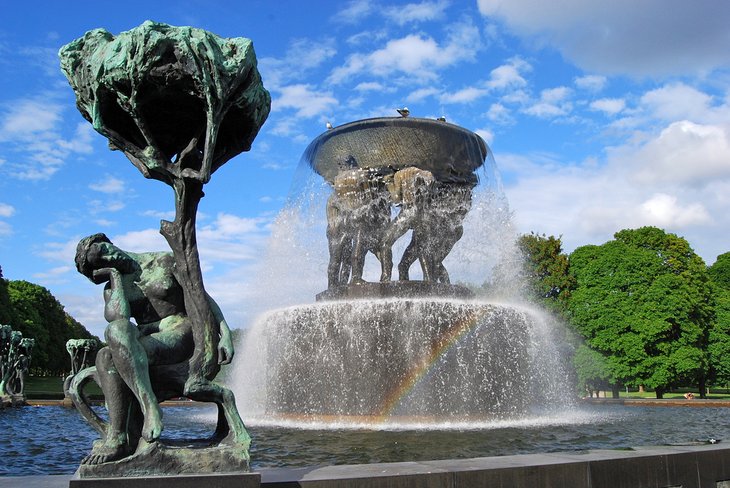
The iconic Vigeland Sculpture Park (Vigelandsanlegget), which sits inside Oslo's famous Frogner Park (Frognerparken), is one of Norway's most famous tourist attractions. Open year-round, this unique sculpture park is Gustav Vigeland's lifework and contains 650 of his dynamic sculptures in bronze, granite, and wrought iron.
The majority of the sculptures are in five themed groups along a 853-meter-long axis. The oldest is the fountain group, depicting the cycle of human life, beyond which can be seen the 16-meter-high Monolith, comprising 121 intertwined human bodies.
Tourists will want to spend time exploring the rest of Frogner Park, where there are ample green spaces for picnics, recreational facilities, an enormous rose garden, and the nation's largest playground. Here, you can also find the Oslo City Museum (Oslo Bymuseum), as well as the Vigeland Museum (Vigelandmuseet), which is just outside the park.
Address: Nobels gate 32, N-0268 Oslo
Official site: https://vigeland.museum.no/en
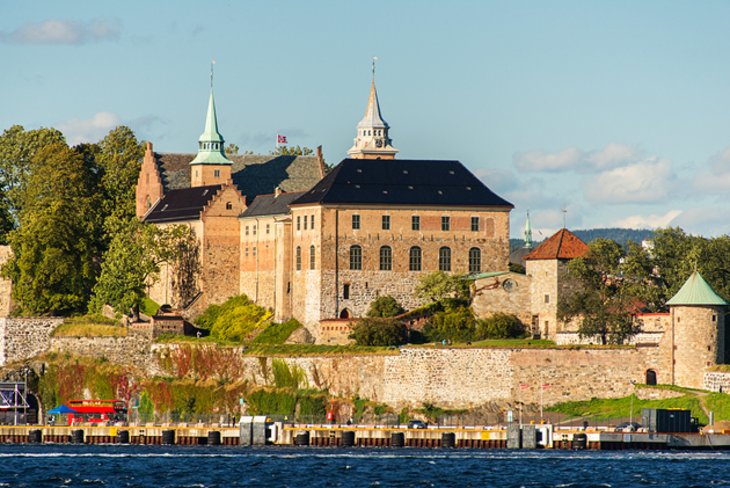
Rising above the Oslofjord , on the promontory of Akernes , sits the majestic Akershus Fortress (Akershus Festning) built by Håkon V at the end of the 13th century. You can easily spend the best part of a day sightseeing here.
Take your time to wander the grounds and ramparts with their wonderful harbor views before exploring the quaint chapel with its tomb of Håkon VII (1872-1957) and the remains of the original medieval castle. Also located in the grounds is the Museum of the Norwegian Resistance , also known as the Norwegian Home Front Museum ( Norges Hjemmefrontmuseum ). Be prepared to spend a few hours here learning about the German occupation of 1940-45.
If you've any energy left, head over to the Norwegian Armed Forces Museum (Forsvarsmuseet) in Oslo's old Arsenal. This fascinating museum features numerous displays of weapons and exhibits illustrating the history of the Norwegian forces and the defense of Norway over the centuries.
Address: Akershus Festning, 0015 Oslo
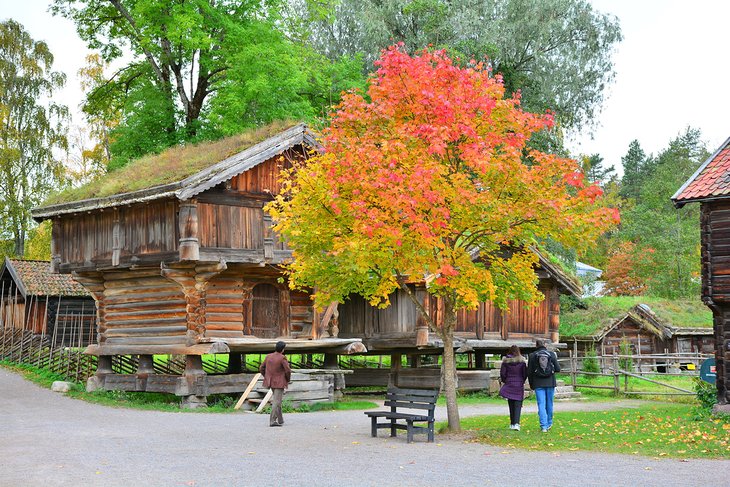
Located in Olslo's Bygdøy area, the Norsk Folkemuseum is an excellent open-air museum that offers a range of permanent exhibits covering 500 years of Norwegian folk culture. The museum's buildings are divided into several areas that highlight various time periods and settings. One of the largest areas is the rural "Countryside" area, which features typical farmhouses from different points in history, including re-creations of goahti , a traditional Sami structure.
The museum also has an "Old Town," largely comprised of historic buildings that were relocated from Christiania, an early 17 th -century settlement. The museum also offers daily programs for all ages, including hands-on folk craft activities, and costumed interpreters can be found throughout the property carrying on with daily life in a bubble of history. While here, be sure to sample the lefse , a traditional cinnamon sugar bakery treat.
Address: Museumsveien 10, Bygdøy, 0287 Oslo, Norway
Official site: www.norskfolkemuseum.no/en
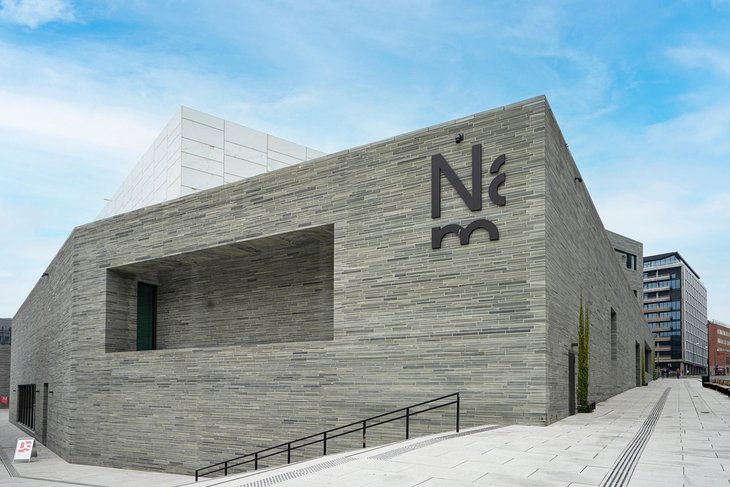
Slated to open in June 2022, Oslo's new National Museum will consist of collections from the National Gallery and the National Museum - Architecture , as well as additional collections of contemporary art and design. The largest such museum in Scandinavia, it will house the country's biggest art collection, featuring the works of Norwegian artists from the 19th century through the present, including J. C. Dahl and several works by Edvard Munch, including his most famous work, The Scream .
The new National Museum will eventually also house collections from the currently closed Museum of Contemporary Art and the Museum of Decorative Arts and Design, and will become the home for the National Gallery collections. Tourists should be aware that various exhibits may not be open during the move, so check the museum website prior to planning a trip.
Address: Universitetsgata 13, Oslo
Official site: www.nasjonalmuseet.no/en/
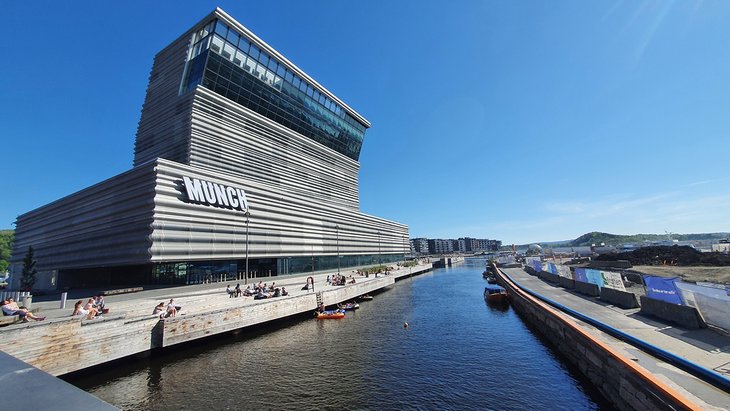
Dedicated to the life and work of Norway's greatest painter, Edvard Munch (1863-1944), the Munch Museum (Munch-museet) contains a vast collection of paintings, graphic art, drawings, watercolors, and sculptures from the great artist's life.
Containing almost 28,000 works of art in addition to personal effects and tools - even his private library - the museum also puts on special exhibits devoted to particular aspects of Munch's work through film screenings, concerts, guided tours, and lectures.
Please note: The Munch Museum is relocating to a new facility near the city's opera house. While the move is expected to be complete by the end of 2021, be sure to check first for information on their official website, below.
Address: Tøyengata 53, 0578 Oslo
Official site: http://munchmuseet.no/en
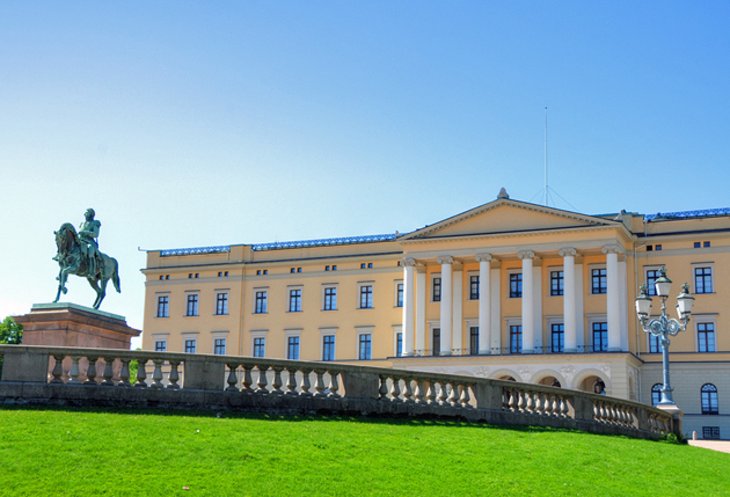
Located high up on the northwest end of Karl Johansgate , the Norwegian Royal Palace (Slottet) was built in 1825 and dominates the cityscape. The impressive 173-room building is open to the public for guided tours during the summer only, with English-language guides available four times daily.
Tours include the Cabinet Parlour and Cloakroom, the White Parlour, Mirror Hall, Great Hall, Banquet Hall, and other significant rooms in the palace. Visitors are also free to wander the grounds and gardens or watch the regular changing of the guard year-round. Just to the south of the palace sits the Norwegian Nobel Institute (Det Norske Nobelinstitutt) where the Nobel Peace Prize is presented.
Address: Slottsplassen 1, 0010 Oslo
Official site: http://www.kongehuset.no/seksjon.html?tid=28697
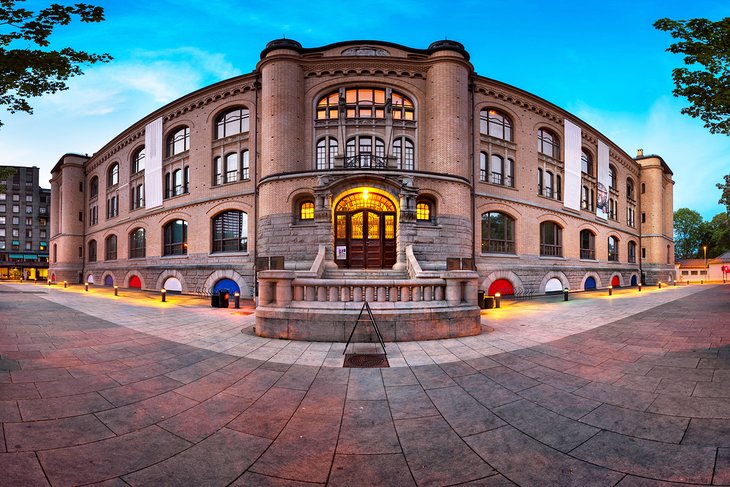
The Museum of Cultural History (Kulturhistorisk museum) oversees the city's Historical Museum , which explores various aspects of human history. It houses the largest assembly of Egyptian artifacts in Norway, including mummies and funerary objects.
The museum's Medieval Gallery is also extensive, exhibiting an impressive collection of daily items, as well as several examples of church art and religious artifacts. There is also a large exhibit dedicated to the history of gold coinage, including examples of coins from the past 2,600 years.
Other areas of the museum focus on looking at people, exploring the lives of indigenous peoples, as well as a thought-provoking exhibit about humanity's ability to overcome threats and challenges beyond its control. The museum also hosts a variety of temporary exhibits and continues to add to its Viking Age Exhibition , which contains rare items, like a preserved Viking helmet.
Address: Frederiks gate 2, 0164 Oslo
Official site: www.khm.uio.no/english
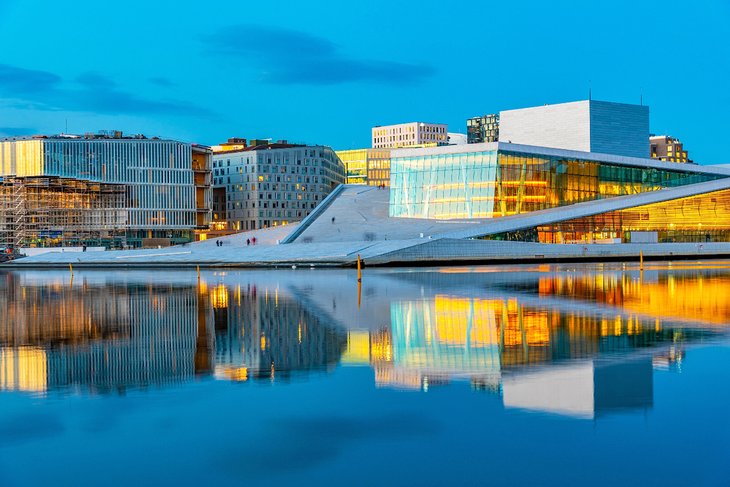
Olsofjord connects the city of Oslo to the North Sea , providing over 750 square miles of protected waterway to enjoy. There are a wide range of cruise options, from fully guided tourist boats with full amenities to more rustic options featuring sailboats.
If you are short on time but still want a chance to see the city's landmarks from the water, consider booking a dinner cruise; some float passively in the Inner Olsofjord around the Bygdøy Peninsula , while others set sail to explore the many islands beyond. Most of these can be found at or near the piers by City Hall .
More adventurous travelers can rent a kayak or canoe and explore the water on their own or hop aboard a less formal "cruise" by riding one of the many ferries that regularly connect to various surrounding towns.
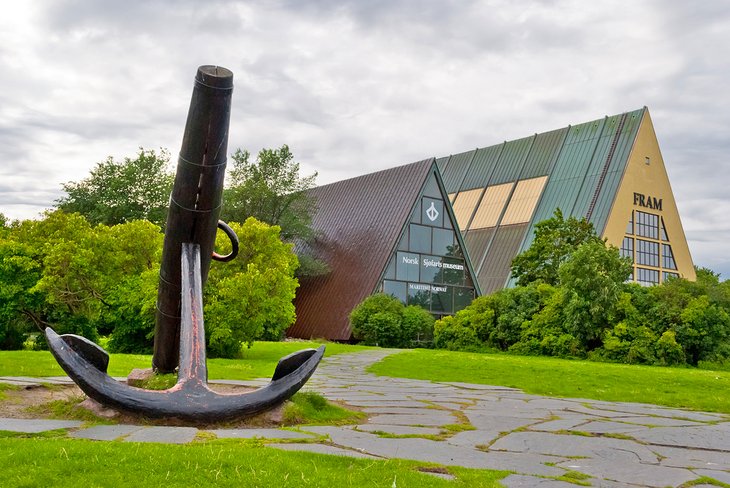
Named after the first Norwegian ship built specifically for polar research, the Fram Museum ( Frammuseet ) is a must for anyone with an interest in Arctic exploration. The museum's star attraction is the Fram , an icon due to its many successful polar voyages, as well as Gjøa , the first ship to navigate the Northwest Passage .
Visitors can board the Fram and explore its engine room, crew cabins, and other areas which have been preserved and restored to accurately depict life aboard the ship.
Exhibits throughout the museum include information on the voyage, as well as items of interest, including navigational instruments and the ship doctor's medical equipment. Other exhibitions explore topics including the life of Fram Captain Fridtjof Nansen, as well as the efforts and accomplishments of the pioneers who paved the way for him.
Address: Bygdøynesveien 39, 0286 Oslo
Official site: http://frammuseum.no
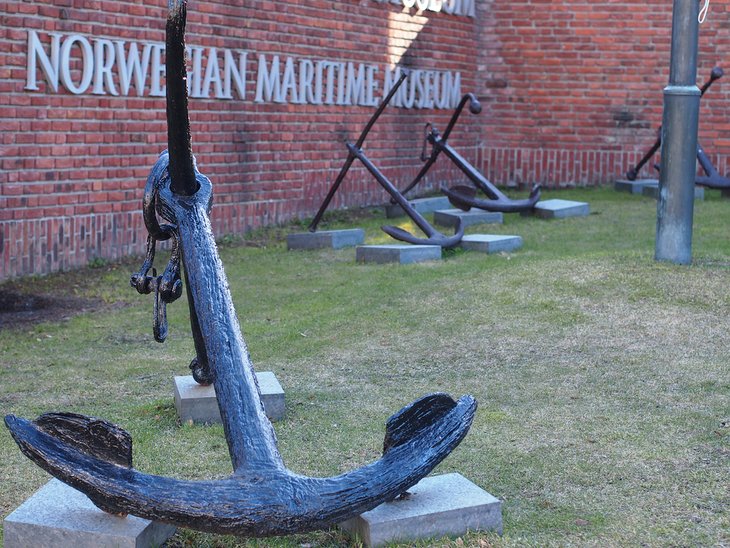
The Norwegian Maritime Museum (Norsk Maritimt Museum) features exhibits geared for all ages, which encourage visitors to step back in time to imagine the lives of seafaring Norwegians over the past thousand years. This includes an expansive section dedicated to Vikings, as well as exhibits dedicated to maritime life during later centuries when pirates roamed the sea.
Kids will love the fully interactive Queen of Congo exhibit, where they can board the ship, play with instruments, and even play supper time in the galley. With its fascinating exhibitions about fishing, shipbuilding, and marine archeology, as well as an impressive collection of models and paintings, a visit here is time well spent.
Address: Bygdøynesveien 37, Oslo
Official site: https://marmuseum.no/en

Set in an adjoining building to the Fram Museum stands t he Kon-Tiki Museum (Kon-Tiki Museet), with its displays dedicated to Thor Heyerdahl. This Norwegian sailor, explorer, and adventurer captured the hearts and minds of the world when, in 1947, he sailed from Peru to Eastern Polynesia on a raft made entirely of balsa wood to demonstrate how he believed the Pacific region was settled.
Opened in its present location in 1957, this fascinating attraction offers plenty of details both about Heyerdahl and his famous ship. In addition to seeing the famous Kon-Tiki up close, other vessels used by the legendary Norwegian are also on display, including the 14-meter-long Ra II, made of papyrus and in which he sailed across the Atlantic Ocean in 1970.
English language guided tours are available, and be sure to catch a viewing of the Academy Award-winning documentary that propelled Heyerdahl to fame.
Address: Bygdøynesveien 36, 0286 Oslo
Official site: www.kon-tiki.no
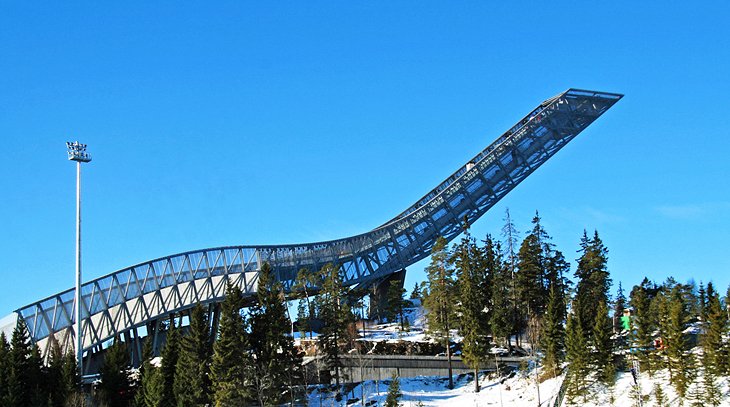
Located at the base of Holmenkollen Ski Jump (Holmenkollbakken), the Ski Museum is the oldest of its kind in the world, open since 1923. Here, ski enthusiasts will find exhibits and artifacts chronicling nearly 4,000 years of ski history and exploring various related topics, including weather and polar exploration.
The oldest ski on display here dates back to AD 600, and there are several other examples, including skis from the 8th, 10th, and 12th centuries. Other skis in the collection represent a wide variety of terrain and uses, from mountain skis to fast skis, and even the longest skis.
The museum also has a Hall of Fame dedicated to great Norwegian skiers, interactive exhibits about modern skiing and snowboarding, and information about Fridtjof Nansen's polar explorations on the ship Fram. Guided tours include the Ski Jump and its Jump Tower Observation Deck, which has excellent views over the city.
Address: Kongeveien 5, 0787 Oslo
Official site: www.skiforeningen.no/en/holmenkollen
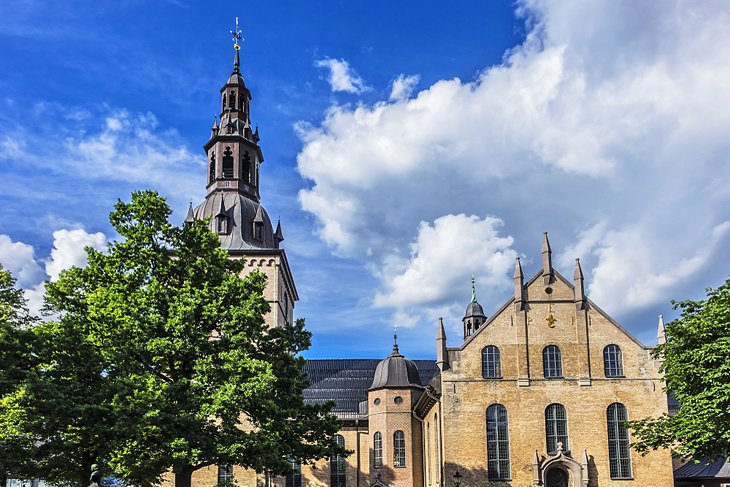
Although consecrated in 1697, Oslo Cathedral (Oslo domkirke) has been rebuilt and renovated numerous times. Its tower was rebuilt in 1850, while its interior was renovated soon after the end of WWII.
Notable features include the main doorway with its decorated bronze doors, as well as the ceiling paintings by H. L. Mohr, the Baroque pulpit and altar (1699), and the stained glass by Emanuel Vigeland. Afterwards, be sure to visit the Oslo Bazaar along the old church walls. Dating back to 1841, these fascinating halls are now occupied by galleries, cafés and antique dealers.
Address: Karl Johansgt. 11, 0154 Oslo
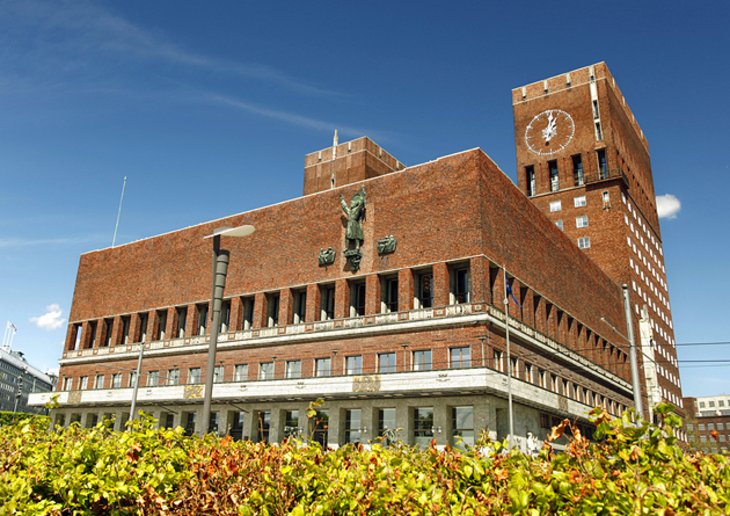
Oslo's enormous City Hall (Rådhuset) is undoubtedly one of the city's great landmarks. This imposing square building, built of concrete faced with brick, was designed by Arnstein Arneberg and Magnus Poulson and has two towers, one of them adorned with a huge clock face. One of the towers houses the 38 bells that can be heard chiming throughout the harbor area.
As well as its fascinating facade with its sculptures and reliefs, the interior is also worth a visit. Here, you'll see a rich fresco created by Henrik Sørensen, Per Krohg, Edvard Munch, and other famous Norwegian artists.
Address: Rådhuset, 0037 Oslo
Official site: www.oslo.kommune.no/oslo-city-hall/
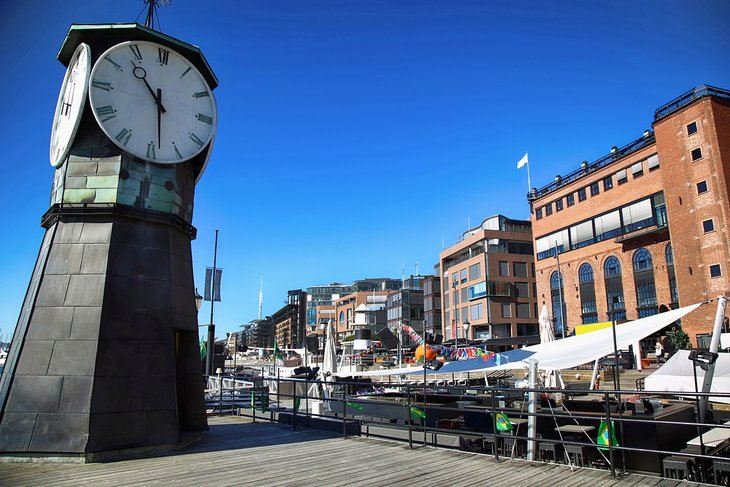
Built around an abandoned shipyard, Oslo's Aker Brygge area is the heart and soul of the city. Bustling and vibrant day and night, its stunning architecture - that magnificent blend of new and old that perfectly compliments Norway's stunning natural beauty - is everywhere on display, and everywhere breathtaking.
It's estimated that 12 million visitors find their way to Aker Brygge every year, drawn by its sea-front boardwalk, fine shopping, great restaurants, and cozy year-round patio bars with their snug rugs and fireplaces.
While visiting, be sure to pop into the newly opened Astrup Fearnley Museum of Modern Art . The museum consists of two buildings: one for its own collection of works by such greats as Andy Warhol, Damien Hirst, and Jeff Koons, the other for rotating exhibitions.
Address: Bryggegata 9, 0120 Oslo
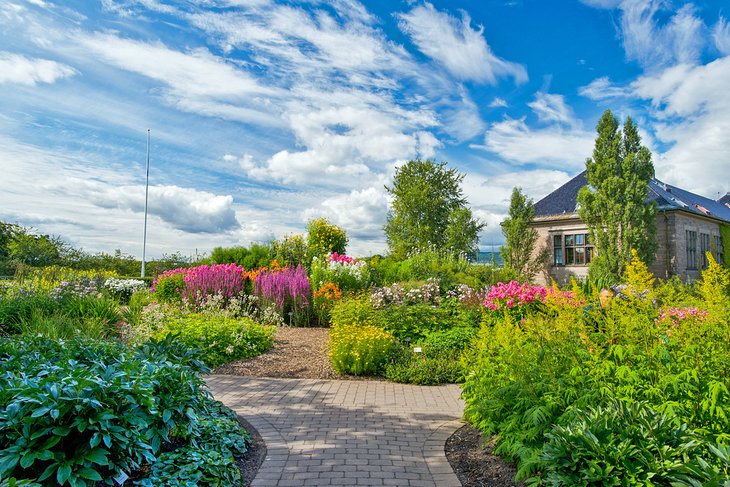
Oslo's Natural History Museum (Naturhistorisk museum) - consisting of the Geological Museum , the Zoological Museum , and Botanical Gardens - is Norway's largest natural history collection. The Geological Museum includes minerals, precious metals and meteorites, plus an impressive collection of dinosaur skeletons, while in the Zoological Museum you'll find dioramas of Norwegian fauna. Best of all, however, is the exquisite Botanical Garden.
Founded in 1814, the garden features 7,500 different plant species from Norway and other parts of the world, 1,500 of them located in the beautiful Rock Garden with its waterfalls.
Address: Sars gate 1, 0562 Oslo
Official site: www.nhm.uio.no/english/
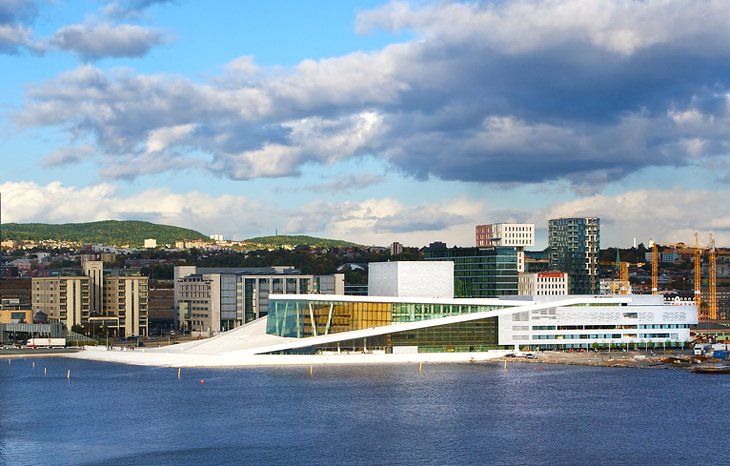
Home to the Norwegian National Opera and Ballet , as well as the National Opera Theatre , the 1,364-seat Oslo Opera House (Operahuset) seems to almost want to slip into the city's harbor, an effect exaggerated by its angled exterior surfaces. Clad in Italian marble and white granite, the Opera House is the largest cultural building constructed in Norway since Trondheim's Nidaros Cathedral in the 14th century.
In addition to its many performances, visitors can also participate in a variety of interesting public programs and behind-the-scenes tours, as well as enjoy the views from a stroll on the building's roof.
If you are visiting Oslo during August, be sure to spend some time enjoying the month-long Festival of Chamber Music , which includes dozens of chamber music concerts drawing internationally acclaimed musicians from around the globe. Performances take place in the spectacular Akershus Fortress , with the stunning Oslofjord as a backdrop.
Taking place in the same month and in the same location, the Oslo Jazz Festival is another huge draw for musicians and fans alike. Oslo also hosts the Ultima Contemporary Music Festival in mid-October, which features a competition for new orchestral works.
Address: Kirsten Flagstads Plass 1, 0150 Oslo
If you're visiting Oslo for the first time, the best place to stay is in Central Oslo, preferably close to Karl Johans gate, the city's main street. Here, you'll find attractions such as the Royal Palace, National Theatre, and Oslo Cathedral, as well as an impressive array of museums and galleries. Most of the city's top attractions are within walking distance of each other. Below are some highly rated hotels in this central location:
Luxury Hotels:
- Minutes on foot from some of Oslo's top museums and galleries, central station, and the Royal Palace, the eco-conscious Thon Hotel Rosenkrantz Oslo sports bold, contemporary decor, and the good-value rates include a breakfast.
- Within walking distance of Aker Brygge, the National Gallery, and Royal Palace, the family-run Hotel Continental Oslo is adorned with distinctive works of art and elegant furnishings. Each room is unique.
- The pet-friendly Clarion Collection Hotel Bastion is also in a handy location, near Central Station and the opera house. Rates include an organic breakfast and a light buffet dinner.
Mid-Range Hotels:
- In the heart of the city, near central station and the National Gallery, Clarion Collection Hotel Folketeateret sits at the top-end of the mid-range hotels, with its cozy, contemporary rooms and a free breakfast.
- The earthy, textural decor is a standout feature of the eco-friendly Oslo Guldsmeden , 100 meters from the Royal Palace, near Aker Brygge. Rates include breakfast made with produce from local farms.
- On a quiet side street in the city center, Thon Hotel Munch has crisp white rooms with bold splashes of color and an organic buffet breakfast.
Budget Hotels:
- Central Oslo has few budget options, but the Cochs Pension is one of these. Set in a great location near the Royal Palace, rooms come with fridges, and some have kitchenettes.
- Smarthotel Oslo is another central option. The rooms are small, but the hotel lies just around the corner from Oslo's main shopping street .
- About 20-minutes away from the city center by tram, Oslo Hostel Haraldsheim is also budget friendly. Rates include breakfast and parking.
Hopping around Town:
- The City Sightseeing Oslo Hop-On Hop-Off Tour is the perfect way to visit Oslo's top tourist attractions and includes an on-board commentary by a knowledgeable guide. This 24-hour pass allows access to 18 major sights, including the National Theater , Vigeland Sculpture Park , the Viking Ship Museum , and Oslo Cruise Ship Terminal , ensuring that you are able to get the most out of your trip.
All-Access Pass:
- Especially handy for those who want to visit multiple tourist attractions, the Visit Oslo Pass is a fantastic way to ensure you don't go over budget with admission fees and transportation costs. The pass is valid for admission to a staggering 36 attractions, and entitles the bearer to significant discounts at additional attractions. It also includes sightseeing tours and restaurants, and grants unlimited use of public transportation within zone 2, including tram, boat, bus, and trains. Those who opt for the 72-hour pass will also get a complimentary pass for the Hop-On Hop-Off Tour .
The Best of Oslo in One Day:
- Tourists with limited time in Oslo will appreciate the Oslo Combo Tour with a Grand City Tour and Oslo Fjord Cruise . This seven-hour experience includes photo-op stops at Vigeland Park and the Holmenkollen Ski Jump , as well as visits to several top museums, including the ship museums at Bygdøy Peninsula . To finish a perfect day, passengers will transfer to a boat and enjoy the last two hours on the water of Oslo Fjord while learning more about the area from the knowledgeable guide.
More Related Articles on PlanetWare.com
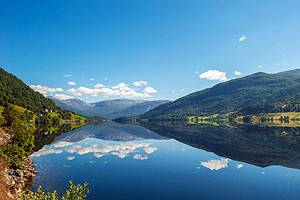
Norway's Biggest Fjords: Located on the western coast of Norway, Sognefjord is the country's largest fjord, stretching for 204 kilometers. Sognefjord is a three-hour drive from Bergen, a picturesque city with plenty of attractions and activities for tourists . Just south of here is the Hardangerfjord area , home to Norway's second-largest fjord. This was Norway's first international sightseeing destination, enjoyed by Victorian travelers as early as 1875.
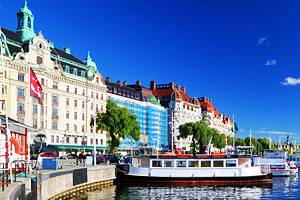
Exploring Sweden: Although it is a six-hour train ride to Stockholm, those staying in Oslo for an extended time may want to plan a day exploring all the highlights of this city , which is often called the Venice of the North. Sweden is also home to many fascinating sites, including Kansen , the world's oldest open-air museum.
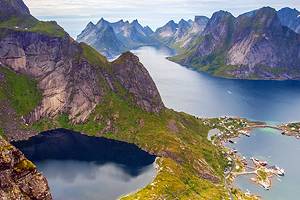
Norwegian Islands: If you are feeling adventurous and have the time, consider visiting the Lofoten Islands , which have an amazingly mild climate despite being inside the Arctic Circle. The country's northernmost city is Tromsø , a major port city, which is visited by tourists hoping to see the aurora borealis , or northern lights, because if its location in the Arctic Circle.
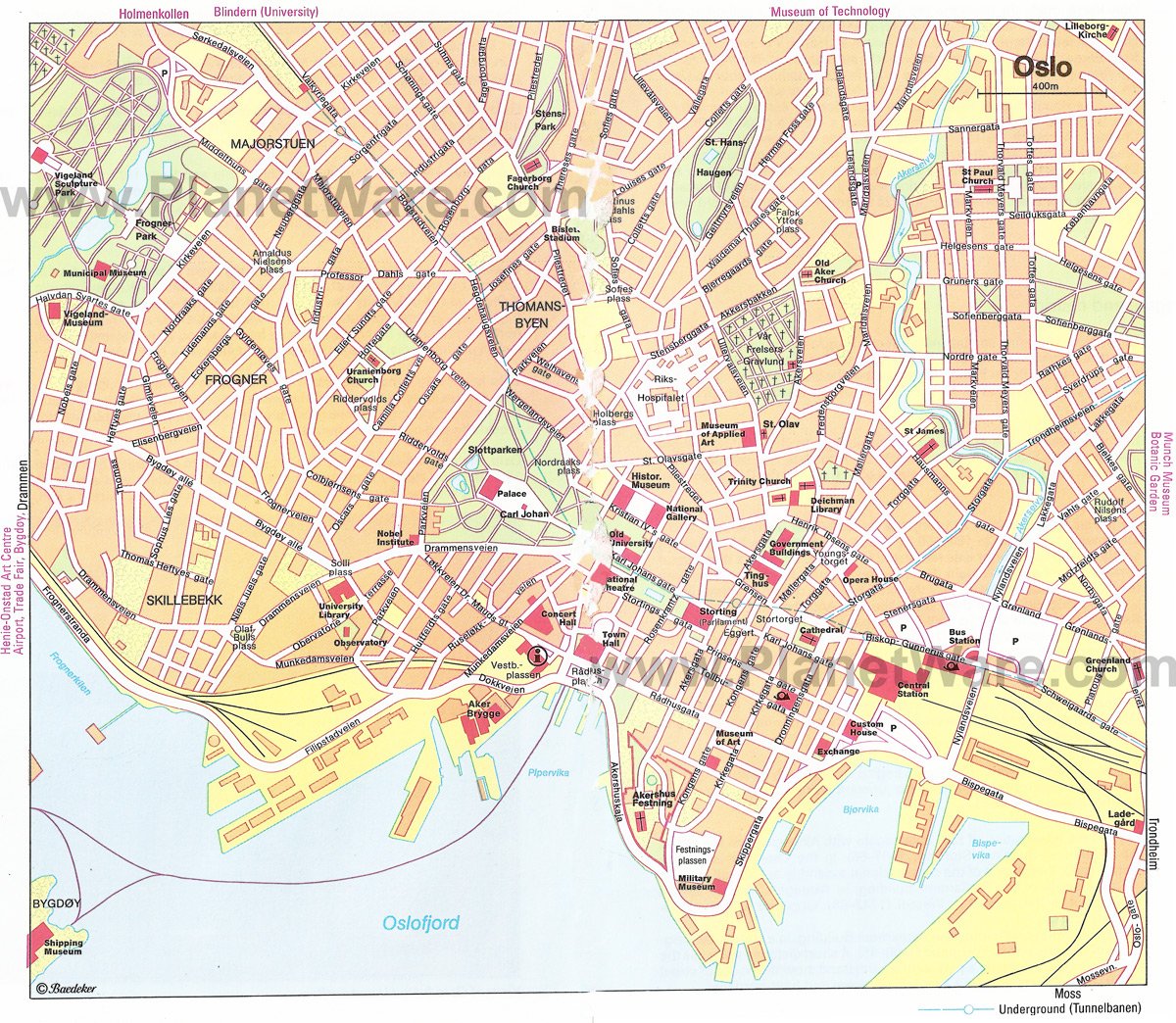
More on Norway
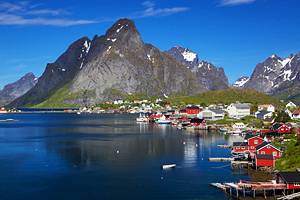
The Best Time to Visit Oslo – and When to Avoid it!

Oslo; it’s the land of hygge, beautiful fjords, and thriving nature. It’s a city of many faces. To some, the perfect destination for a romantic weekend getaway; to others, it’s the ideal place to spend an action-packed summer holiday. To me? Well, it’s a bit of both.
Travelers come from all over the world to experience Norway’s Viking capital, but there’s one question on everyone’s mind – when exactly is the best time to visit? The answer, unfortunately, is not so simple. Oslo is a city that experiences all four seasons, and each has its own unique charm.
The good news is that there really is no wrong time to visit Oslo. But, depending on what you’re looking for in a vacation, there are certain times of year that are better than others. To ensure you make the most of your trip, I’ve put together the ultimate seasonal guide to the best (and worst) times to visit Oslo.
Read on to find out when is the best time for you to travel to Norway’s picturesque capital city!
Hint: See if you can figure out what the missing month is!
You might also like: My Top Hotel Recommendations for Bergen
Fall ( Mid-August – October)

Say hello to crisp air, beautiful autumn colors, and long walks along the Aker River. Fall is a wonderful time to visit Oslo if you’re looking to escape the crowds but still enjoy all the city has to offer.
There are significantly fewer tourists than in peak season, which means shorter lines at attractions, cheaper accommodation rates, and a more authentic experience overall. Just be sure to pack a jacket – the weather can be unpredictable!
You might also like: One of My Favorite Hotels in Oslo
The fall season may start in mid-August or early September. The average fall temperature is +12C, but it begins to get even colder as October approaches. There’s no doubt that some of the most beautiful months in Oslo, Norway, are September and October, when the sky often glows in warm hues, the air is crisp, and leaves start to turn yellow.
Best things to do in Oslo during the Fall season:
● Visit the Oslo Opera House – One of Oslo’s most iconic buildings, the Opera House is worth a visit even if you don’t plan on seeing a show. The sloping white exterior is made from Italian marble and granite, and offers incredible views of the surrounding fjord. The Opera House is free to visit, but tours cost 120 kroner (about $15) for each adult and 70 kroner (around $8.50) for children between the ages of 4 and 16. Oslo Passholders get a discounted rate.
● Appreciate Art and Nature at Vigelandsparken ( Frogner Park ) – This is one of the most famous landmarks in Oslo, with thousands of people uploading photos of the sculptures in the park every year. It has more than 900 distinct works of art by Norwegian sculptor Gustav Vigeland, making it the world’s biggest sculpture park. It’s a beautiful spot to spend an afternoon, especially in September when the roses are in full bloom. If you visit in October, you’ll be able to see the leaves changing color.
● Explore the VÍKINGR – This is an immersive exhibit that transports visitors to the Viking Age and immerses them in the daily life of Vikings. See if you can spot the Gjermundbu helmet while you’re there, it’s the best preserved Viking helmet in the world! Check out my previous article to learn more about this incredible exhibition.
● Hiking in Nordmarka – Nordmarka is Oslo’s green lung, and it’s the perfect place to escape the hustle and bustle of the city. There are numerous hiking and biking trails to explore, but you’re also sure to find a quiet spot to relax. The hiking trails in Nordmarka are usually well-marked, but a map is recommended for lengthier stretches.
● Sample Norwegian Comfort Food – Kjøttkaker (meatballs) , Pølse i Lompe (hot dog in a potato tortilla) and Vafler (Norwegian waffles) are just three of the many delicious Norwegian dishes you’ll find in Oslo. Be sure to also try out a shot of Aquavit – Norway’s national spirit!
Winter (December – Mid(end)-March

Photo: Michael Ankes – @w83design
Hibernation mode is real in Oslo during the winter months. From December until March, the city is often blanketed in snow, and temperatures hover around the freezing point. This might not sound appealing, but wintertime in Oslo, Norway, can actually be quite magical.
If you’re lucky enough to visit during the Christmas season, you’ll be treated to festive markets, twinkling lights, and gingerbread galore. However, even if you’re not visiting during December, winter is still a great time to experience Oslo’s unique culture. Ice skating, cross-country skiing, and sledding are just some of the fun activities you can enjoy in the snow.
Best things to do in Oslo during the Winter season:
● Visit the Christmas markets – One of the best things to do in Oslo during winter is to visit the Christmas markets. You’ll find them in various locations around the city. Expect to find handicrafts, gifts, and, of course, plenty of festive food and drink. Check here for 2022-2023 Christmas festival dates!
● Go Skiing, Sledding, or Skating! – Oslo is the perfect place to enjoy winter sports. There are several ski resorts within a day-trip distance, and cross-country skiing is also popular in the Oslo forest. If you’re looking for something a little more low-key, go ice skating at one of the city’s many rinks. Some of the most popular downhill ski resorts near Oslo include Winter Park, Tryvann, and Grefsenkollen ski slope. For cross country skiing start out at Sognsvann or Frognerseteren.
● Embrace Nature – Just because it’s cold outside doesn’t mean you have to stay indoors. One of the best things about Oslo is its proximity to nature. There are several parks and forests within the city limits, so you can easily escape into the wilderness for a day of hiking or cross-country skiing. Nordmarka is a particularly popular spot for outdoor enthusiasts.
● Hibernate With a Good Book – If you’re not a fan of the cold, you can always hibernate indoors with a good book. Oslo has many cozy cafes where you can relax with a cup of coffee and a good read. Deichmanske Bibliotek in Bjørvika is one of my favorite places to curl up with a book. It’s the city’s main public library, and it has an extensive collection of both Norwegian and international literature.
● Rent a Cabin or a Hotel room In the Snowy Oslo Forest – For a truly Norwegian experience, rent a cabin in the Oslo forest. There are many cabins to choose from, and they’re the perfect place to relax after a long day of skiing or hiking. It’s a truly magical experience, and it’s one you won’t soon forget.
From the Voksenasen Hotel , the cross-country ski trails of Oslomarka (the Oslo forest) are directly accessible from just outside the front door.
You might also like: My Top Hotel Recommendations for Bergen
Spring (April – Mid-June)

As the snow begins to melt and the days get longer, Oslo comes alive. The city is filled with blooming flowers, and the trees are starting to turn a lovely shade of green. Spring is the perfect time to visit if you’re looking for a more relaxed atmosphere. Easter is particularly lovely in Oslo, as many flock to the mountains.
The 17th of May is our national day and a big celebration in Oslo. The streets are filled with people in traditional dress, and there are parades and celebrations throughout the city.
If you’re planning a trip to Oslo in the Spring, be sure to pack your walking shoes. This is the perfect time of year to explore the city on foot, and you’ll have plenty of opportunities to take in that fresh flowery air. Spring is also an excellent time for outdoor activities, so don’t hesitate to get out and about. Hiking, biking, and kayaking are all popular activities in Oslo at this time!
Some of the best things to do in Oslo during the springtime include:
● Take a Boat Ride on the Oslofjord – As the weather gets warmer, the Oslofjord becomes a popular spot for boat rides. This is a great way to see some of Oslo’s best scenery; you’ll have the opportunity to see charming landscapes, fantastic city views, and the beautiful hills surrounding it. There are several boat tours to choose from, so you’re sure to find one that’s perfect for you.
Find cruises on the Oslo fjord here .
● Explore the Akershus Fortress – The Akershus Fortress is a must-see for any history buff. This medieval castle is one of Oslo’s most popular tourist attractions, and it’s definitely worth a visit. Be sure to explore the fortress grounds, as there is a lot to see.
● Visit the Munch Museum – The Munch Museum is one of Oslo’s most famous museums. This museum is home to a collection of paintings by Edvard Munch, one of Norway’s most renowned artists. You’ll also find several other artworks on display, and you’re sure to learn something new.
● Hike to Holmenkollen – One of the best things to do in Oslo is to hike to the top of Holmenkollen. This is one of Oslo’s most popular tourist attractions, and it’s definitely worth the effort. The views from the top are absolutely breathtaking, and you’ll have the opportunity to see some of Oslo’s best scenery. Oslo Hiking actively plans scenic trips in the area for whoever wants to join; you can book via their website for 75 euros.
● Kayak on the Oslofjord – As the weather gets warmer, the Oslofjord becomes a popular spot for kayaking. This is a great way to get some exercise, and you’ll have the opportunity to take in some of Oslo’s best scenery. Throughout it, you’ll see the beautiful city sights and wilderness highlights like bays, beaches, and islands. No prior kayaking experience is required.
Find available kayaking tours on the Oslofjord here.
Summer (Mid-June – Mid-August)

My personal favorite; Summertime. In Oslo, late Summer is often referred to as “sensommer.” The days begin to get longer, the weather is warm, and the city is filled with people enjoying the outdoors. This is the perfect time to visit if you’re looking for some fun in the sun. Swimming in the fjord, fishing, park life, staying up late, and enjoying the summer nights should all be on your to-do list.
In the Summer, you can pretty much do everything you can do in the Spring, but better. The weather is nicer, so you can enjoy all of the outdoor activities without worrying about the cold. This is also the busiest time of year for tourism, so be sure to book your hotel room in advance.
Some of the best things to do in Oslo during the summertime include:
● Swim in Oslofjord! – As the weather gets warmer, the beautiful fjord becomes a popular spot for locals and tourists alike. The fjord is incredibly clean and refreshing, and there are plenty of places along the waterfront to just dive right in! This is a great way to cool off, and you’ll have the opportunity to take in some of Oslo’s best scenery. You can find entrances either from the docks, or from some public beaches. There is one at Bygdøy, one next to the Opera House, or jump off the docks right next to the Astrup Fearnley Museum of Contemporary Art!
● Fjord Galore – Oslofjord is unsurprisingly lovely in the Summer. As I mentioned above, this is a great time to swim, but it’s also awesome for fishing, or just simply enjoying the views. On Oslofjord, you can also take a boat ride, kayak, or splish splash while taking in all of the beauty Oslo offers. Many people also enjoy taking the small ferries out to the islands for swimming and a BBQ!
● Visit the Norsk Folkemuseum Open-Air Folk Museum – The Norsk Folkemuseum, located on Bygdøy in Oslo, Norway, has one of the world’s most comprehensive collections of artifacts from all social classes and areas of the country. It also features a large open-air museum with more than 150 reconstructed structures from across Norway.
● Rooftop Concerts at the Opera – During the summertime, the Opera House hosts a number of rooftop concerts, which are a great way to enjoy some live music. Sit back and relax as you let the sweet sounds of the city wash over you.
You might also like: The Best Low Budget Hotel in Oslo
So, Did You Figure it Out?
If you remember correctly, I mentioned that there would be a missing month at the beginning of this post. Did you figure it out?
It’s November! But why November, you ask?
Well, in my opinion, it’s just not a great time to visit Oslo. The weather is starting to get colder, and the days are shorter. There are also fewer things to do, as many of the tourist attractions are closed for the winter. It’s cold, it’s dark, and it’s often raining. So, in my opinion, it’s just not worth it.
With that being said, if you would still love to visit Oslo and don’t want to wait until December or for the weather to get warmer, then you still have the option to embrace yourself in the history of it all. For example, you can check out two fantastic museums in Bygdøy:
● Kon-Tiki Museum : This museum is about the adventures of the famous explorer Thor Heyerdahl. The museum is located in a beautiful setting, and has plenty to see and do!
● Fram Museum : The Fram museum is also located in Bygdøy, and is a great place to visit if you are interested in the history of polar exploration. This museum has a lot to offer, including a huge ice-breaking ship called FRAM, as well as an impressive amount of artifacts!
You can also take a walk to the beautiful Oslo City Hall, where you can see architecture at its finest and take in the views of the city. Read all about Oslo City Hall in my previous blog, “ Visit the Oslo City Hall – A public living room .” Or, enjoy a Sauna by the fjord, which is a great way to relax and bond with your friends or family, and they’re open all year round! Check out my blog post Enjoy Sauna by the Oslo Fjord , to learn more about this remarkable experience.
If you’re looking for the best time to visit Oslo, I would recommend either Summertime or Wintertime. Both have their own unique charm, there is plenty to do, and the seasonal weather is perfect for enjoying all that the city offers.
Thanks for reading! I hope this ultimate seasonal guide has provided you with all the information you need to plan the perfect trip to Oslo. Happy and safe travels!
Traveling to Oslo soon? Check out my YouTube videos for visuals, and tips, and join me on my many adventures!
Your friend in Norway,

Pål of Norway With Pål
Norway native, veteran travel guide, sailor, filmmaker, and writer (you might have seen me in one of Rick Steves’ guidebooks!). I want to help you enjoy Norway the right way — like a local. Learn more about me.
DISCLAIMER: Products on this page may contain affiliate links, and I might make a small sum per purchase. For you this does not affect the product price, but supports me and my work, and makes me able to continue sharing my passion for Norway with you. Read the Disclaimer policy . Thank you, tusen takk!
Join on Patreon
Donate on paypal, watch on youtube.
Maybe we should come and stay for a year!!! but go away in November. LOL Actually your November sounds like our November – just not a fun month. I have to say this is a great article. Kudos to you. Ha en fantastisk Sommer!
haha that sounds like a great plan! I’m glad you enjoyed the article, tusen takk! Hope you’ll have en fantastisk sommer as well
I’ve been reading July is always overcast and very very rainy . Is they true ?
Usually in July there are both rainy and sunny days.
Leave a Comment Cancel Reply
Save my name, email, and website in this browser for the next time I comment.
Join the Newsletter

Get my digital recipe book with seven traditional and tasty Norwegian delights!
Your privacy is important to me. View my Privacy Policy.

Become a part of the virtual viking Norway With Pål family, support, and get exclusive content and perks!
Looking for something?
Norwegian culture, travel in norway, travel planning, countryside, norway travel tips, norwegian food, norwegian history, norwegian language, norwegian traditions, places to stay, things to do.

Your support helps me to continue sharing my passion for Norway with you. Tusen takk! Thank you!
Oslo Travel Guide: A Comprehensive Guide to Oslo, Norway
Publisher description.
Oslo, the vibrant capital of Norway, is a city that seamlessly blends natural beauty with urban sophistication. Nestled between the Oslofjord and the forested hills, it offers a unique combination of modernity and tradition, making it an exceptional destination for both residents and visitors. Known for its green spaces, rich history, and cutting-edge architecture, Oslo is a city that constantly evolves while preserving its heritage. Oslo's charm lies in its diverse appeal. For nature enthusiasts, the city's parks, fjords, and nearby forests provide ample opportunities for outdoor activities. In contrast, those inclined towards culture will find a wealth of museums, galleries, and historic sites. The city's culinary scene is equally impressive, with a variety of dining options ranging from traditional Norwegian fare to international cuisine. A defining feature of Oslo is its commitment to sustainability and innovation. The city is a leader in green urban planning, with extensive public transportation networks, eco-friendly buildings, and initiatives aimed at reducing its carbon footprint. This dedication to the environment not only enhances the quality of life for its residents but also makes Oslo a model for other cities worldwide. As we delve deeper into the story of Oslo, we will explore its rich history, its dynamic present, and its promising future. Whether you are planning a visit, considering relocation, or simply curious about this fascinating city, understanding Oslo's unique character and development will offer valuable insights.
More Books by Daniel Windsor

IMAGES
COMMENTS
Find out what to see and do, where to eat and drink, and how to get around in Oslo. Explore attractions, events, local tips, and more on the official website of Visit Oslo.
Things to see and do in Oslo, the capital of Norway; acitvities, attractions, museums, shopping, sightseeing tours and much more. ... Oslo Convention Bureau Press and media Cruise Travel trade Visitor. Oslo Visitor Centre. OPENING HOURS JUNE. Monday-Friday: 9-17 Saturday-Sunday: 10-16. The tourist information's call centre
Oslo is a walkable city with innovative architecture, world-class museums, hip bars and heavenly eateries. Plan your trip with our guide to attractions, events, day trips and more.
Discover the most visited sights in Oslo, from historic forts and museums to ski jumps and sculpture parks. Find out how to get free entrance, discounts and public transport with Oslo Pass.
Discover Oslo's world-class food, music, museums, and green spaces. Learn about the city's history, culture, and attractions, and plan your trip with tips and offers.
Find tips on top attractions, activities, and areas to explore in the Norwegian capital. Discover Oslo's architecture, museums, nightlife, outdoor life, and more with the Oslo Pass and Entur.
Norway's premier city has always had grand architecture, a subversive artistic undercurrent and unfettered access to pristine nature. But a two-decade-long harborfront glow-up has catapulted Oslo from under-the-radar Scandi city to certified culture capital. Exceptional museums covering art, maritime exploration and ancient and modern history ...
Discover Oslo's attractions, from the new National Museum to the historic Vigeland Park, and enjoy the stunning scenery of the Oslo Fjord. Learn about the city's heritage, creativity and nature with tips on museums, saunas, libraries and more.
Bygdøy Peninsula. 1,471. Bodies of Water. One of most delightful, romantic two-wheel rides in Oslo. Lush woods, park-like countryside, view of the sea, swimming areas, historic buildings and the royal cows are some of the sights to see along….
Discover Oslo, a compact, cultured and fun city surrounded by mountains and sea. Find the best attractions, activities, articles and guidebooks for your Oslo trip.
Discover the best attractions, hidden gems, and local favourites in Oslo, the capital city of Norway. From the iconic Holmenkollen Ski Jump to the tranquil islands of the Oslofjord, explore the city's culture, history, and nature.
Official travel guide for Oslo with updated info on hotels and accommodation, map, tourist information, congress, attractions, activities and concerts. ... Fill your time in Oslo with all sorts of activities. Oslo has got just the thing for you, whether you're an art aficionado, a nature lover or a shuffleboard champion.
Best things to do in Oslo. Viator. 1. Oslo Fjord. What is it? In summer, the water bustles with sailboats and the islands that dot the inner Oslo Fjord - including Hovedøya and Gressholmen ...
Instead of a dip in the frigid sea, participants dunk themselves in barrels of cold water before sweating it out in Norway's largest sauna, where the festive atmosphere is fueled not only by the ...
26 Cheap Beach Vacations for Travelers on a Budget. Ranking of the top 18 things to do in Oslo. Travelers favorites include #1 Oslo Fjord, #2 Vigeland Park (Vigelandsparken) and more.
A curated and honest guide to the best things to do in Oslo: museums, attractions, best tours and places to eat and stay!You'll find the best tips from the locals so you can explore Oslo just like a local!. Oslo is a vibrant city full of interesting attractions: top-notch museums, one of the most important artistic and architectural scenes in Europe, a remarkable gastronomic heritage and a ...
Once you arrive in Oslo via the Flytoget airport transfer, walking is doable and preferable to most. An Oslo Pass is handy for riding the tram, train, bus, and ferry. E-scooters can be less ...
Hindsbo's tips for cultural experiences in Oslo. Culture by the Oslofjord: Many of Oslo's most exciting cultural attractions can be found along the harbour promenade, a five-kilometre stretch that runs from Filipstad to Sørenga. A few highlights to explore are the MUNCH, the modern art museum Astrup Fearnley, Oslo City Hall, Oslo Opera ...
Option #3 - Kolsåstoppen. Kolsåstoppen is said to be the most popular hike in Oslomarka, and for good reason. Offering views of the Oslofjord and Bærum, the walk is 7.5 km long and provides plenty of stunning scenery. If you want to get the most that you can out of Oslo in 3 days, then Kolsåstoppen is probably going to be the hike for you.
Discover the best things to do in Oslo, Norway's capital city, from parks and museums to palaces and sculptures. Learn about the history, culture, and nature of this beautiful and diverse destination with our guide and tips.
Find out what to see and do, where to eat and drink, and how to get around in Oslo. Explore attractions, events, local tips, and more on the official website of Visit Oslo.
The best weather in Oslo is during the summer months of June to August, which is when the sun is finally out and the temperature is pleasantly warm. July and August are also considered high season for the city so things can get a bit crowded then. Because of this, the best time to visit Oslo is late spring - May and June.
Visit the Norsk Folkemuseum Open-Air Folk Museum - The Norsk Folkemuseum, located on Bygdøy in Oslo, Norway, has one of the world's most comprehensive collections of artifacts from all social classes and areas of the country. It also features a large open-air museum with more than 150 reconstructed structures from across Norway.
Oslo, the vibrant capital of Norway, is a city that seamlessly blends natural beauty with urban sophistication. Nestled between the Oslofjord and the forested hills, it offers a unique combination of modernity and tradition, making it an exceptional destination for both residents and visitors. Known…
Find out how to contact, visit and get the most out of Oslo Visitor Centre, the official tourist information of Oslo. Get personalised suggestions, Oslo Pass, tickets, maps, souvenirs and more.
T he presence of the USS Gerald R. Ford, the United States Navy's newest and largest aircraft carrier, in Oslo, Norway, has drawn sharp criticism from Russia amidst the ongoing tensions over ...